The Hornstrandir Nature Reserve in the Westfjords of Iceland is a marvelous place for nature enthusiasts. It is a great place for hikers, but also an excellent place for people interested in wildlife, because the Hornstrandir Nature Reserve is home to the largest terrestrial mammal in Iceland. The Arctic fox. I traveled to Ísafjörður in the Westfjords to participate in a wonderful tour to see Arctic foxes in their natural environment. It was an amazing experience! In this blog entry I write more about the Hornstrandir Nature Reserve and the Arctic foxes which I observed there in Iceland.
The Hornstrandir Nature Reserve
Whales and dolphins. Puffins. Or Icelandic horses. Iceland is an extraordinary and beautiful place for people interested in animals. And, of course, for people in general interested in nature, volcanoes, Vikings, and other typical Nordic topics. However, although I am always very enthusiastic about marine mammals or birds in general, in Iceland, I must admit, my encounter with the Arctic foxes in the Hornstrandir Nature Reserve was one of the most unique and special encounters I had during my two-week journey through Iceland.
I still feel so privileged to have been able to see Arctic foxes in Iceland.
And I experienced the Hornstrandir Nature Reserve as one of the most beautiful places I have ever seen. I don't want to use too many exaggerations, but in this case I have to. The Hornstrandir Nature Reserve showed me its most beautiful sides. I was disconnected from the world for a few days and I felt very peaceful during that time.
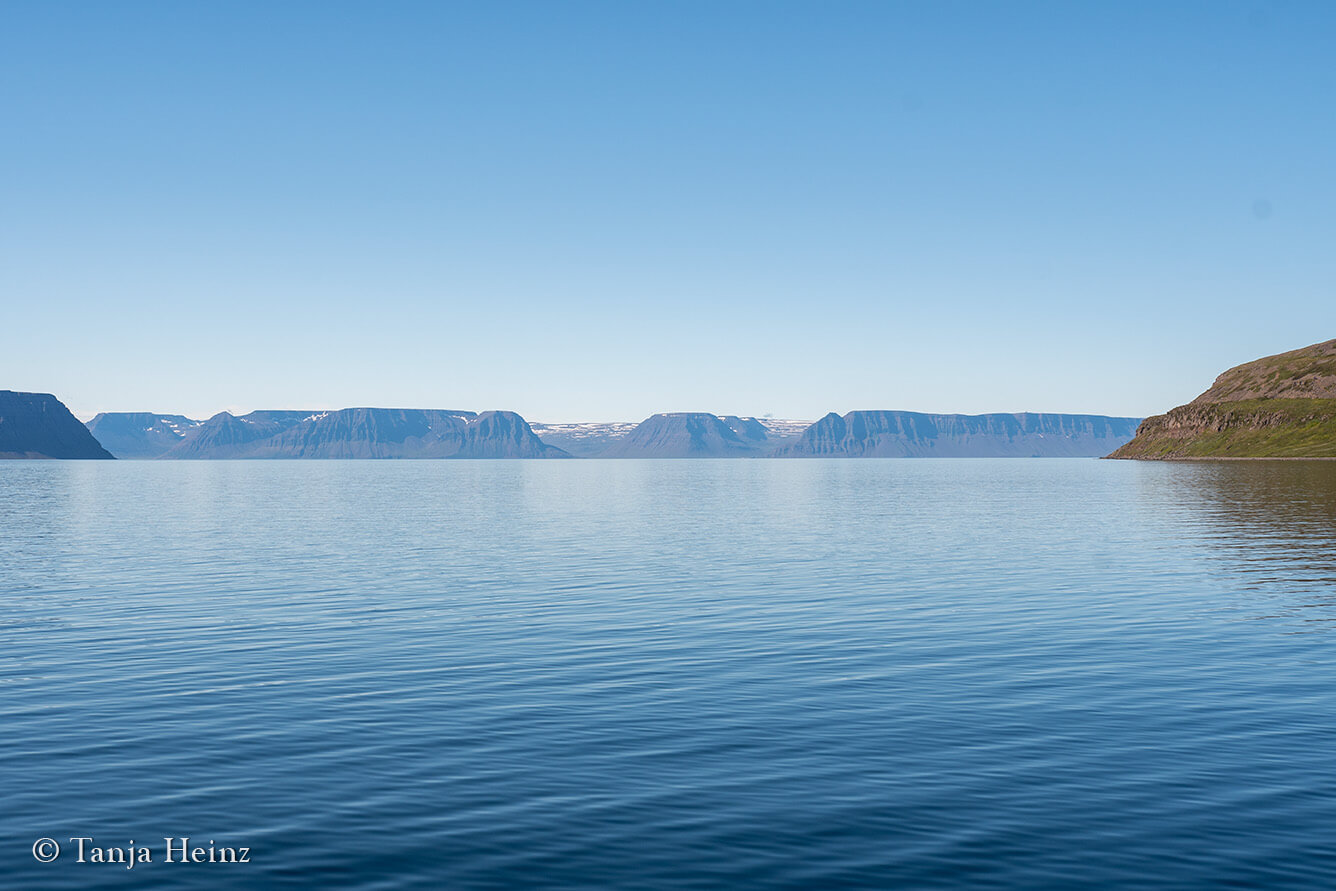
The Hornstrandir Nature Reserve is maybe also one of the best places to observe Arctic foxes in the wild.
Or is there any other place I don't know?
Nevertheless, the Hornstrandir Nature Reserve belongs to the Westfjords and can be reached from Ísafjörður – a small town in the northwest of Iceland. With less than 3.000 inhabitants Ísafjörður is the largest town in the peninsula Westfjords.
Most people start their tours to the Hornstrandir Nature Reserve in Ísafjörður. So did I.
Even the boat trip to the Hornstrandir Nature Reserve was already worth an adventure.
Beautiful landscapes one by one.
Where to look at?
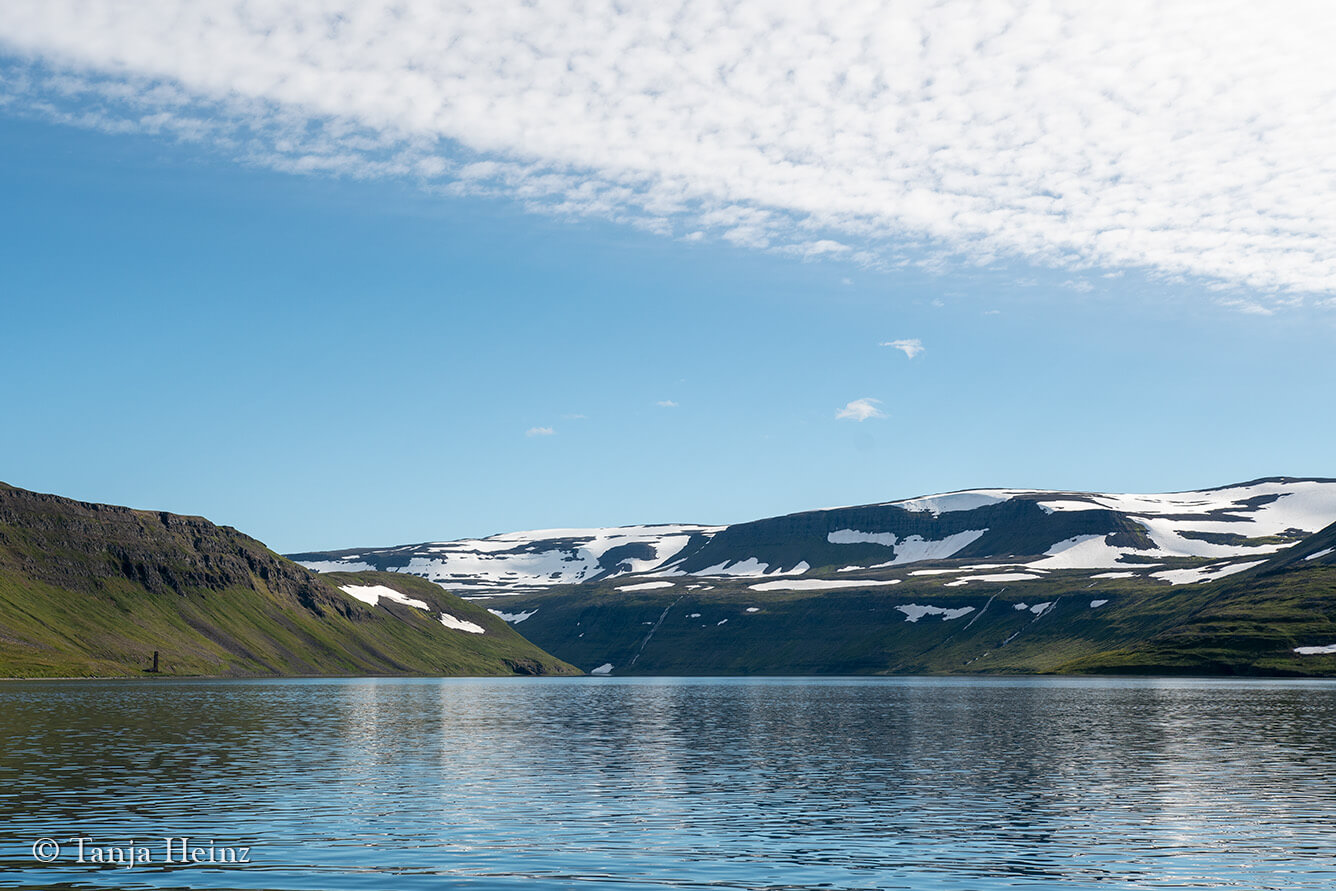
Information: Although most people I met joined a tour, it is also possible to visit the Hornstrandir Nature Reserve on one’s own. You just need to organize a boat trip to the nature reserve in Ísafjörður. One popular stop in the nature reserve is Hesteyri.
The Hornstrandir Nature Reserve is a place for people searching for tranquillity. And for people who want to feel the remoteness. So, the perfect place for me.
On our boat trip to the Kvíar lodge, we stopped at some places. Unfortunately, I cannot remember all the names of the stops we passed. But for sure we passed Hesteyri – the main touristic point in the nature reserve - on our boat trip.
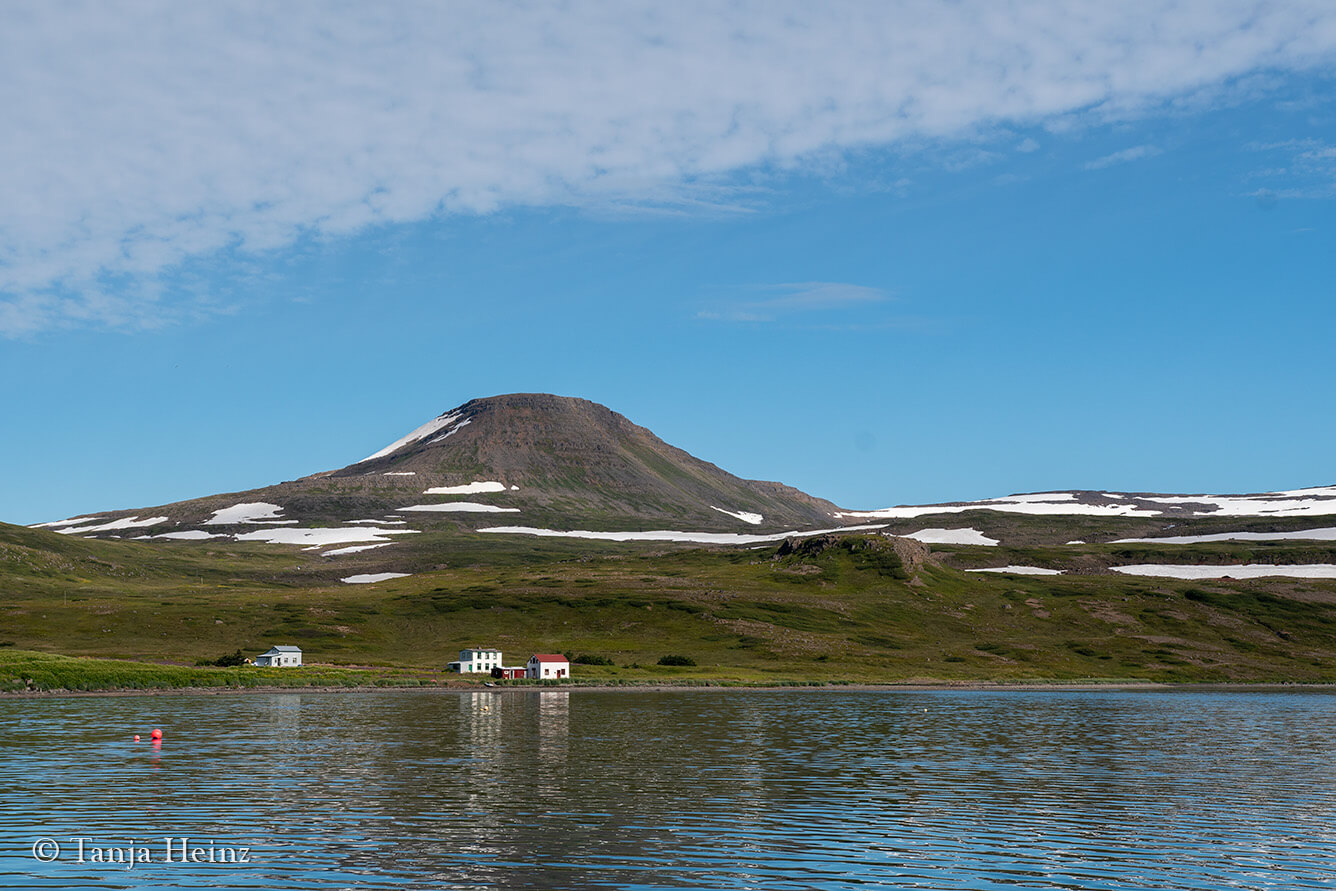
Honestly, I did not care much about the names of the places. I trusted the people of the tour company. I was sure that they would bring us to a very beautiful place. I just wanted to enjoy the Westfjords.
I went to the Hornstrandir Nature Reserve with a tour. The tour company was Borea Adventures which is based in Ísafjörður. I was very happy with my decision!
At every stop I was excited. Was this our final stop?
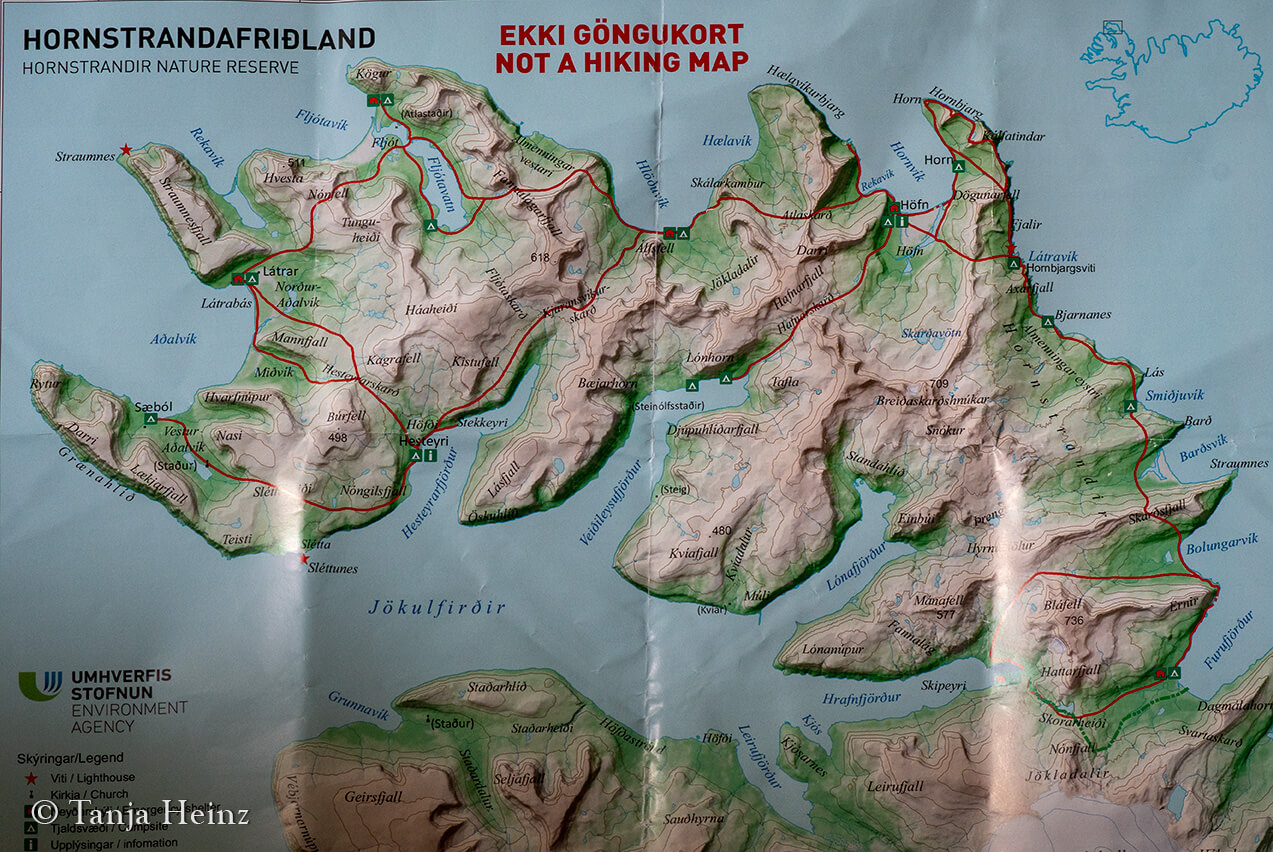
They could have dropped me off at every place. One place was more beautiful than the other. I would have been happy everywhere in the Hornstrandir Nature Reserve.
Maybe the nature reserve is so beautiful, because there is almost no infrastructure. Just houses. However, on one of our boat trips we passed a place where a woman lives solitary in her house every summer. The fun part of this place was the fact that she owned a car which she apparently only uses to get from the pier to the houses. A path of only about one hundred meters.
In Iceland I learned that Icelandic people love their cars. And thus, because of that it is apparently so difficult to establish a good public transportation system.
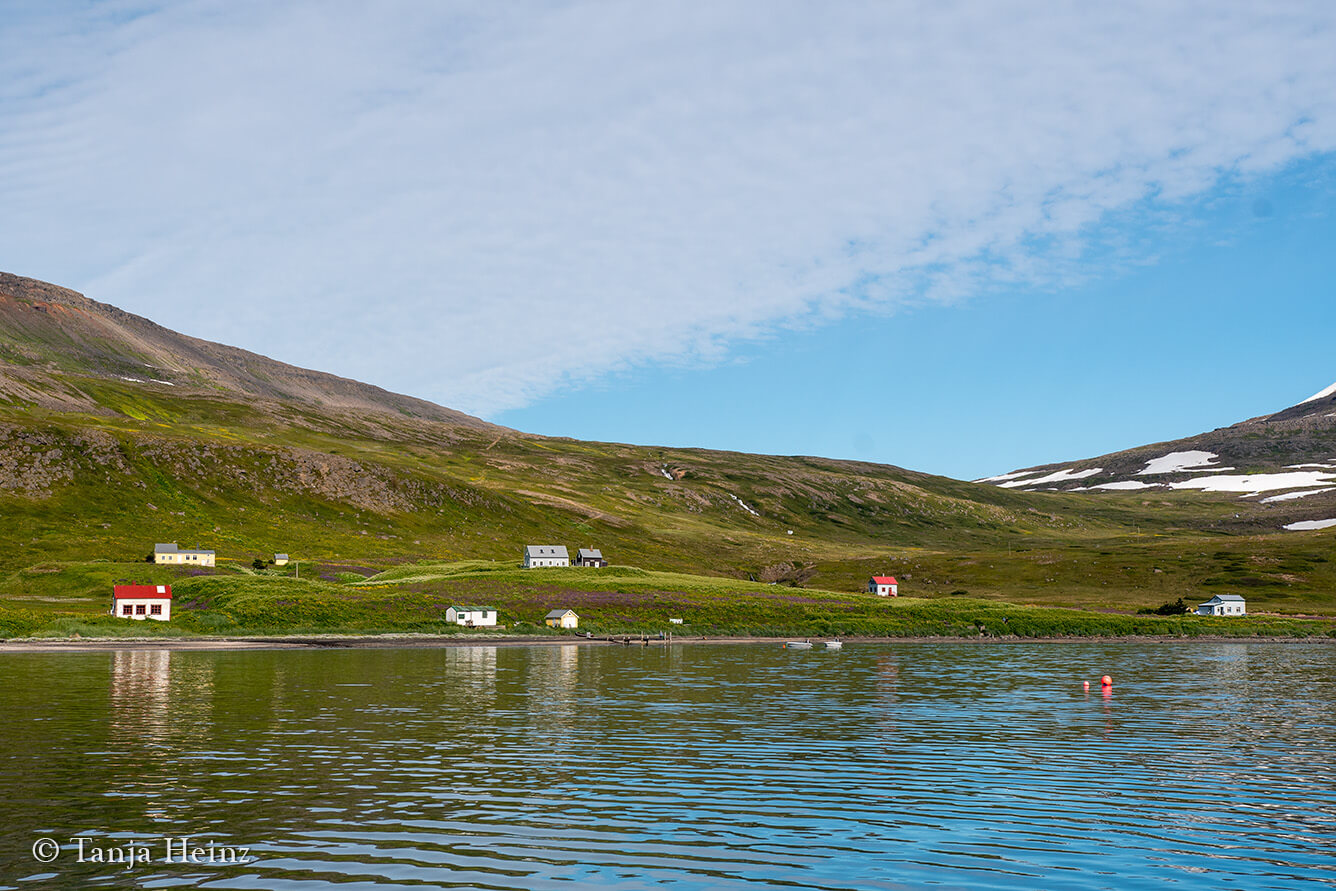
Before I went to the Hornstrandir Nature Reserve I talked to other people who just had come back from the nature reserve. According to them, it was tough when it was raining, but they were still raving about the nature reserve. Yes, rain might be possible in the Hornstrandir Nature Reserve, but summer is still a good time. And when the sun comes out, it is an incredibly beautiful place. I heard hikers talking about sleeping in their tents in the middle of the wilderness waking up spotting some Arctic foxes close-by.
Would I be able to see an Arctic fox in the Hornstrandir Nature Reserve?
I was hoping so much.
They say that because hunting is banned in the nature reserve and because of the bird-rich cliffs – especially in the Hornvík bay – the Hornstrandir Nature Reserve is a haven for Arctic foxes.
Well, in the next paragraph I write more about the place where we stayed for the next three days.
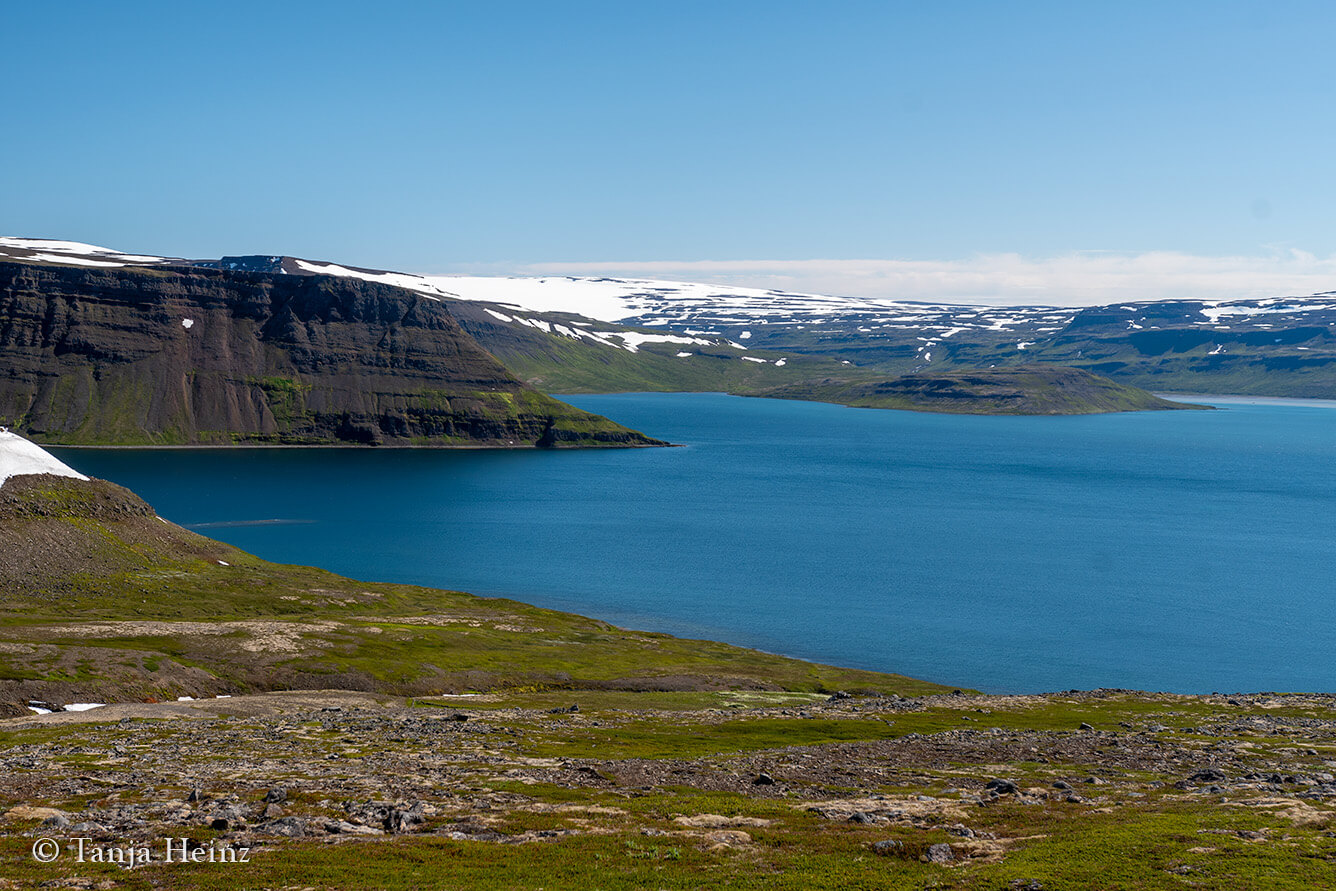
Information: Are you interested in hiking in the Hornstrandir Nature Reserve? If yes, be prepared that you might hike without seeing any other person. Please consider to bring a GPS device or join a guided tour.
The Kvíar Lodge
A beautiful family with two friendly kids from England. Two friends from the United States. A female solo-traveller also from the United States. Another female solo-traveller from Denmark. Plus me – another solo traveller and from Germany. And, of course, two guides. That means, a mixed group with people from different places and backgrounds. Wonderful! And with two excellent and sympathetic guides, the tour organized by Borea Adventures was just perfect!
Writing about the Hornstrandir Nature Reserve and the tour lets me go into raptures again. I miss this place. The Hornstrandir Nature Reserve. The Kvíar lodge. The Arctic foxes. And our great group. I felt so calm and peaceful during these three days at this remote place.
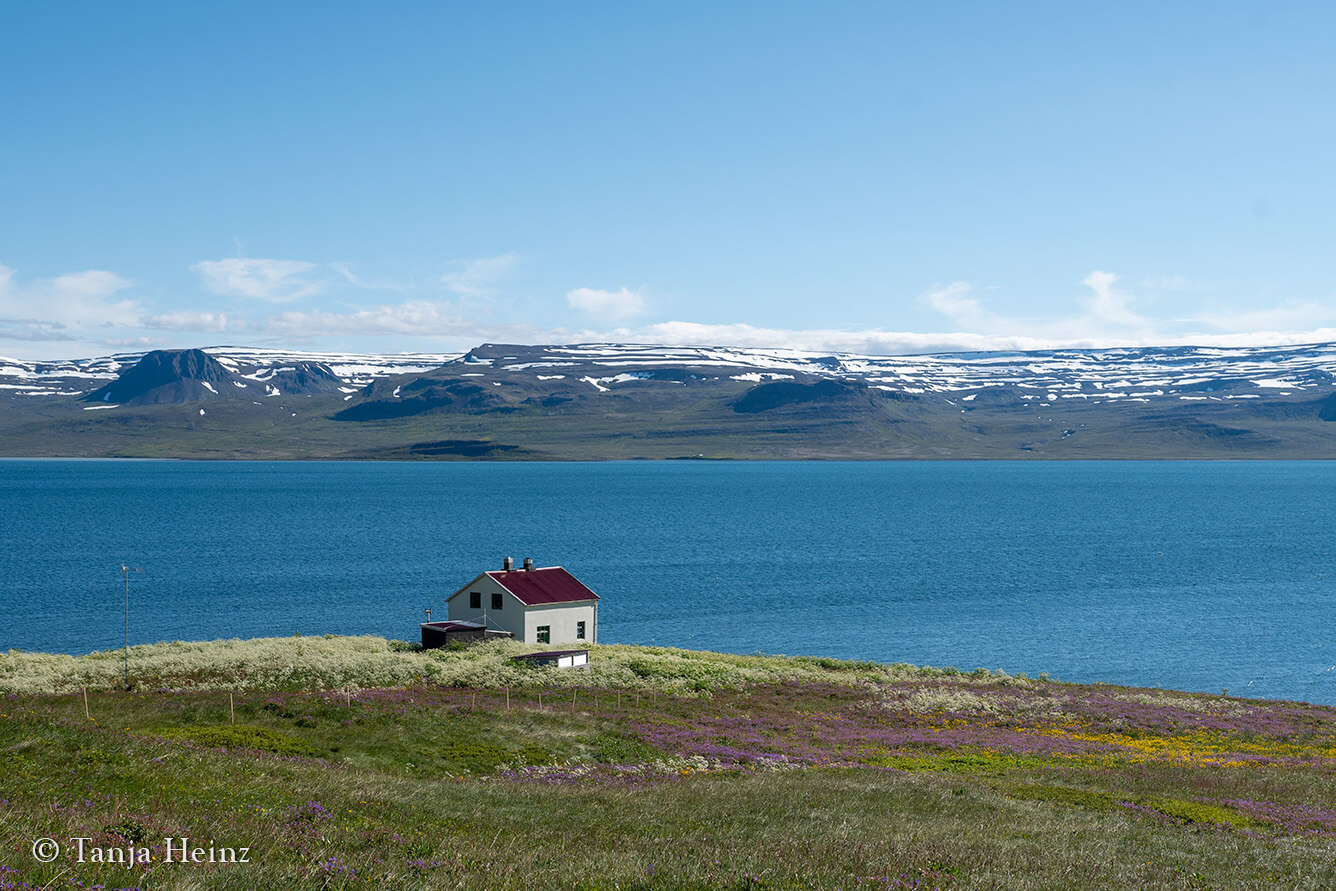
I was there for the Arctic foxes. Therefore, I participated in the tour “Midnight sun and Arctic foxes” offered by Borea Adventures, as there is a den of Arctic foxes just behind the Kvíar Lodge.
The others were like me very keen on seeing an Arctic fox.
Thus, the two guides at first showed us the place of the den after unpacking and inspecting our rooms.
We saw some birds. However, in that moment there was no Arctic fox around.
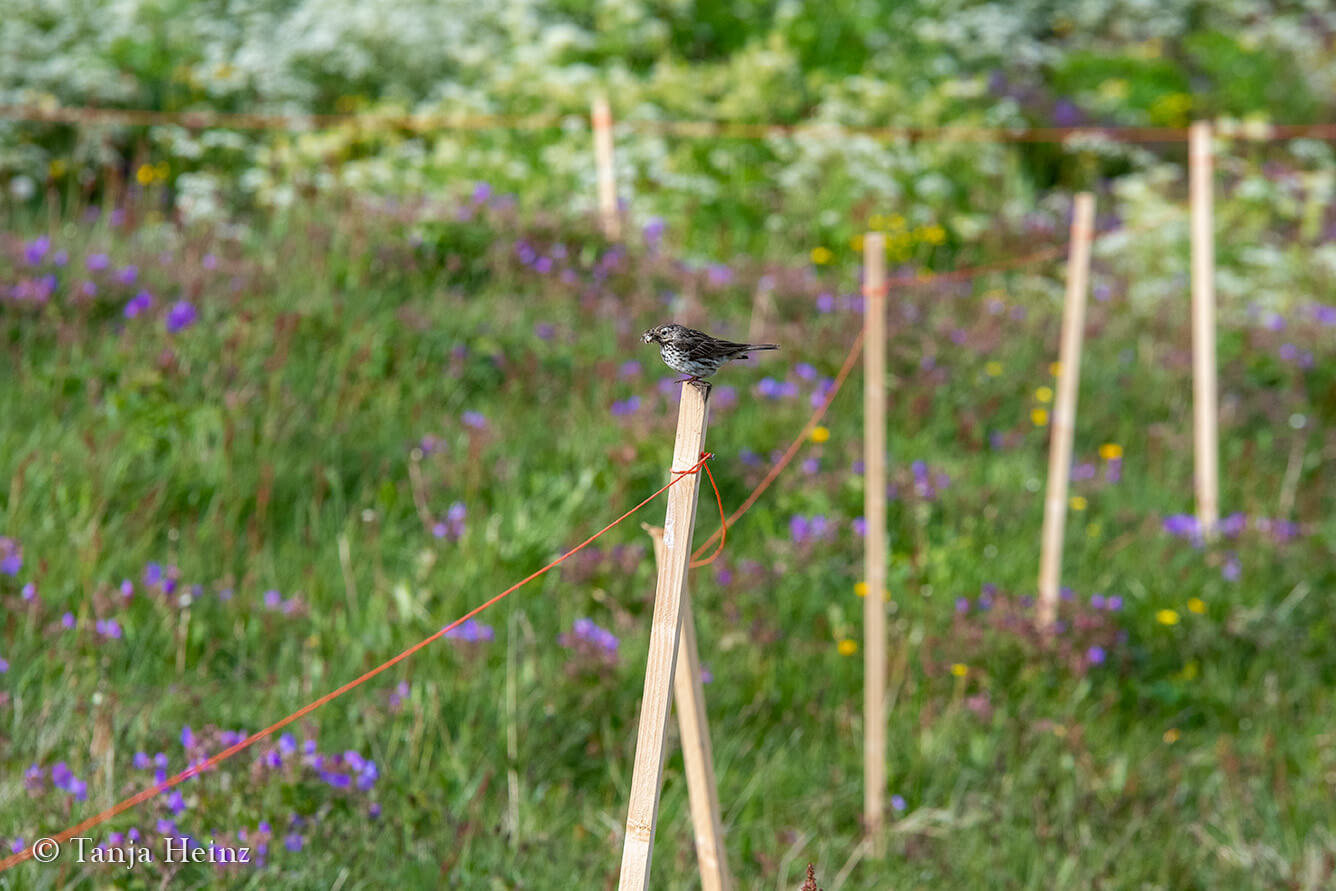
The den of the Arctic foxes was just behind the Kvíar Lodge. Of course, protected by a fence. No one was allowed to approach the den. We had to wait at the fence for the Arctic foxes to show up.
When we arrived, as mentioned, there was no Arctic fox around.
Thus, after unpacking our bags and checking the place with the Arctic foxes, we joined lunch and enjoyed the rays of the sun in front of the Kvíar Lodge.
The Kvíar Lodge is a former farm house located at the edge of the water of the Jökulfirðir Bay.
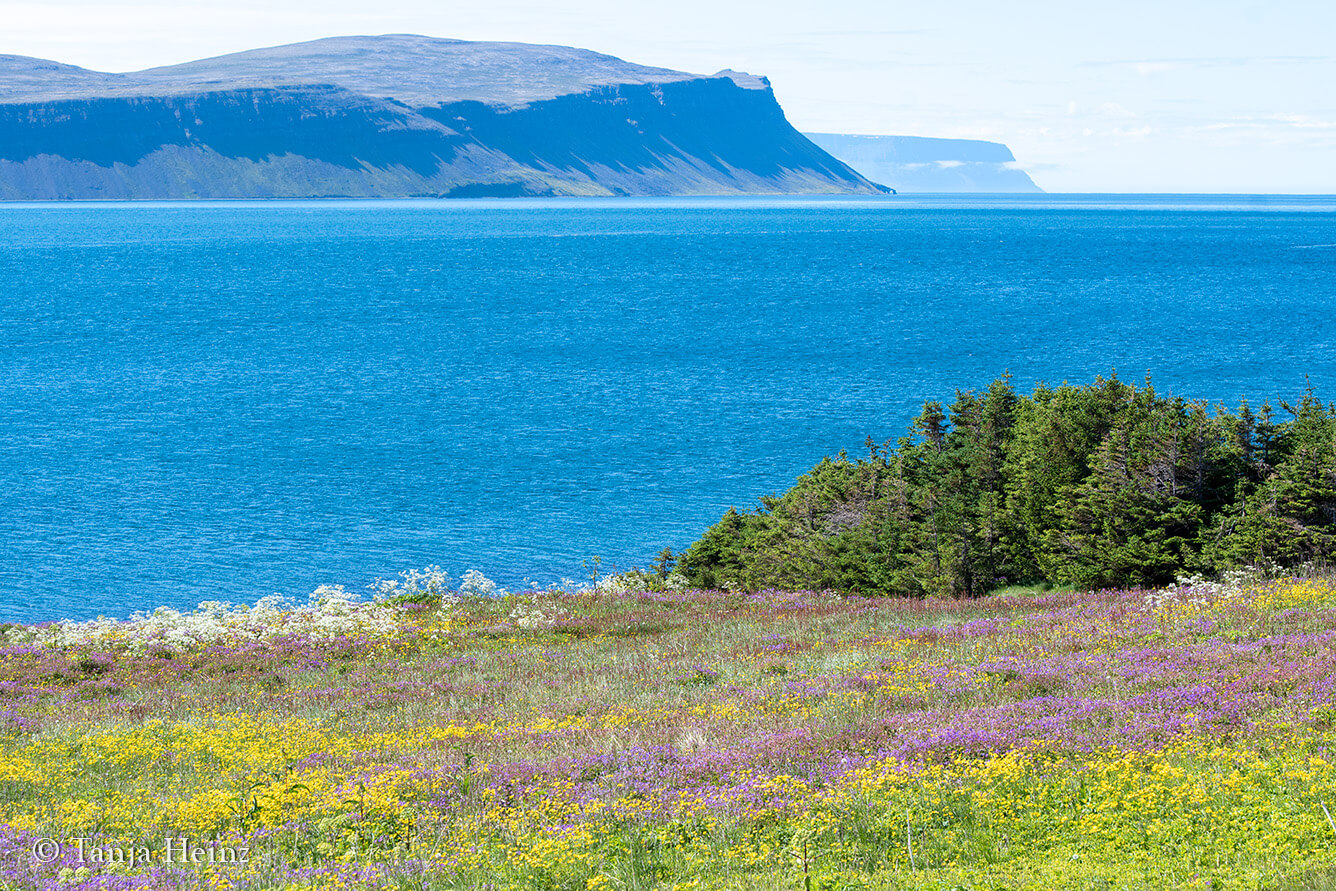
We were eleven people, but there were fifteen beds in the house. One room was for the family. One room for the two friends. And every one of us women got a single room. The two guides shared another room. Everything was perfect in the farm house.
The living and dining room were comfortable with great views on to the bay. The food was delicious. They even served vegetarian and vegan food. And the den of the Arctic foxes was just next to the house allowing us to check the den regularly. Even from inside the house (although we did not spend much time in the house).
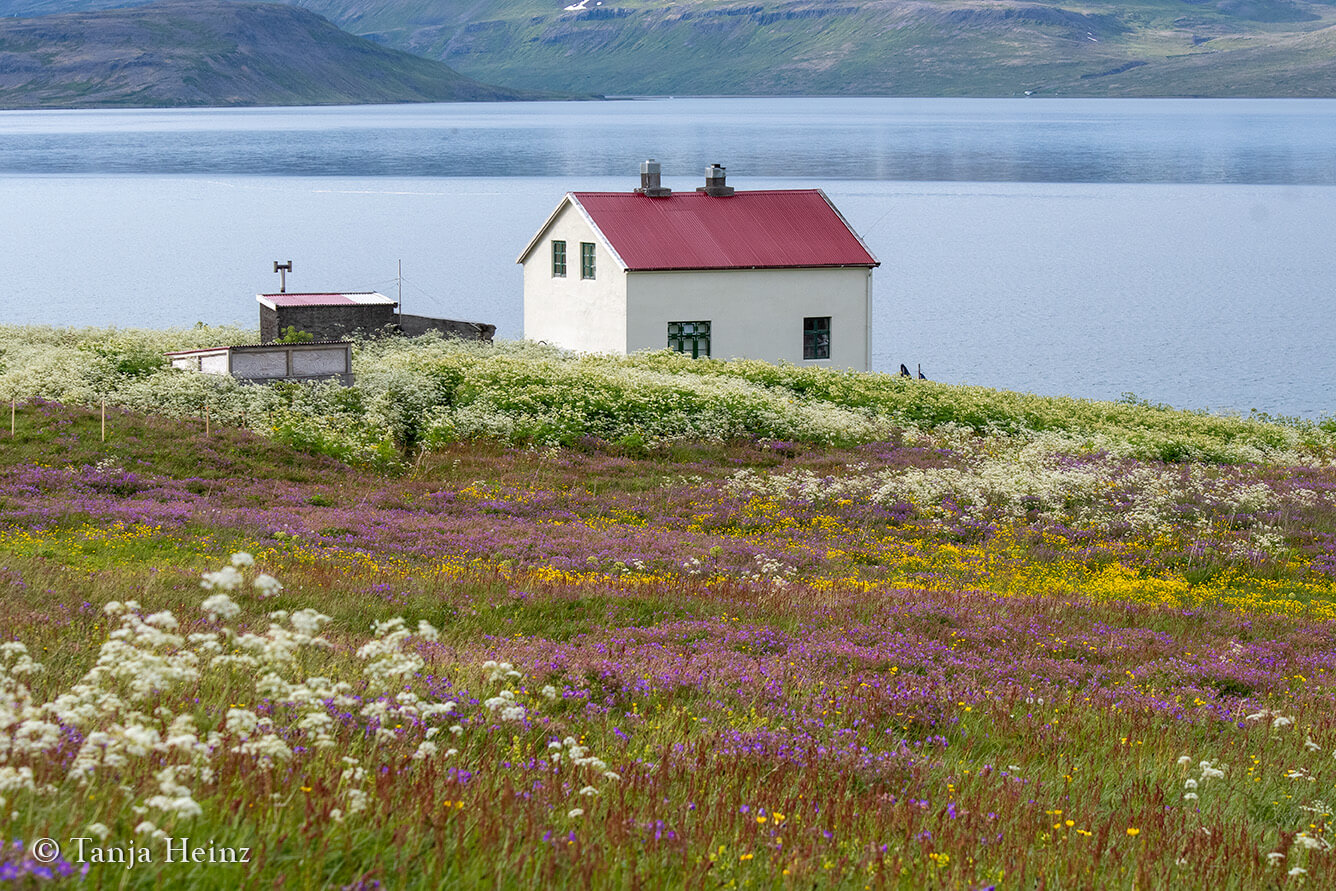
Information: Please note that the shower is in the basement, and thus, it might be a little bit cold. However, there is also a hot sauna in the back of the house which the guides prepared every evening for the guests.
I enjoyed every minute the isolation of the Kvíar lodge.
I cannot remember to have slept that well in years. No distraction. No internet. No telephone. Completely cut off from the world. I even could ignore the snoring of the two American friends in the other room (the Danish woman could not).
I felt very good.
I even planned to stand up and go to the Arctic foxes in the middle of the night. However, I slept too well to wake up, and thus, only planned to go to the Arctic foxes again early in the morning.
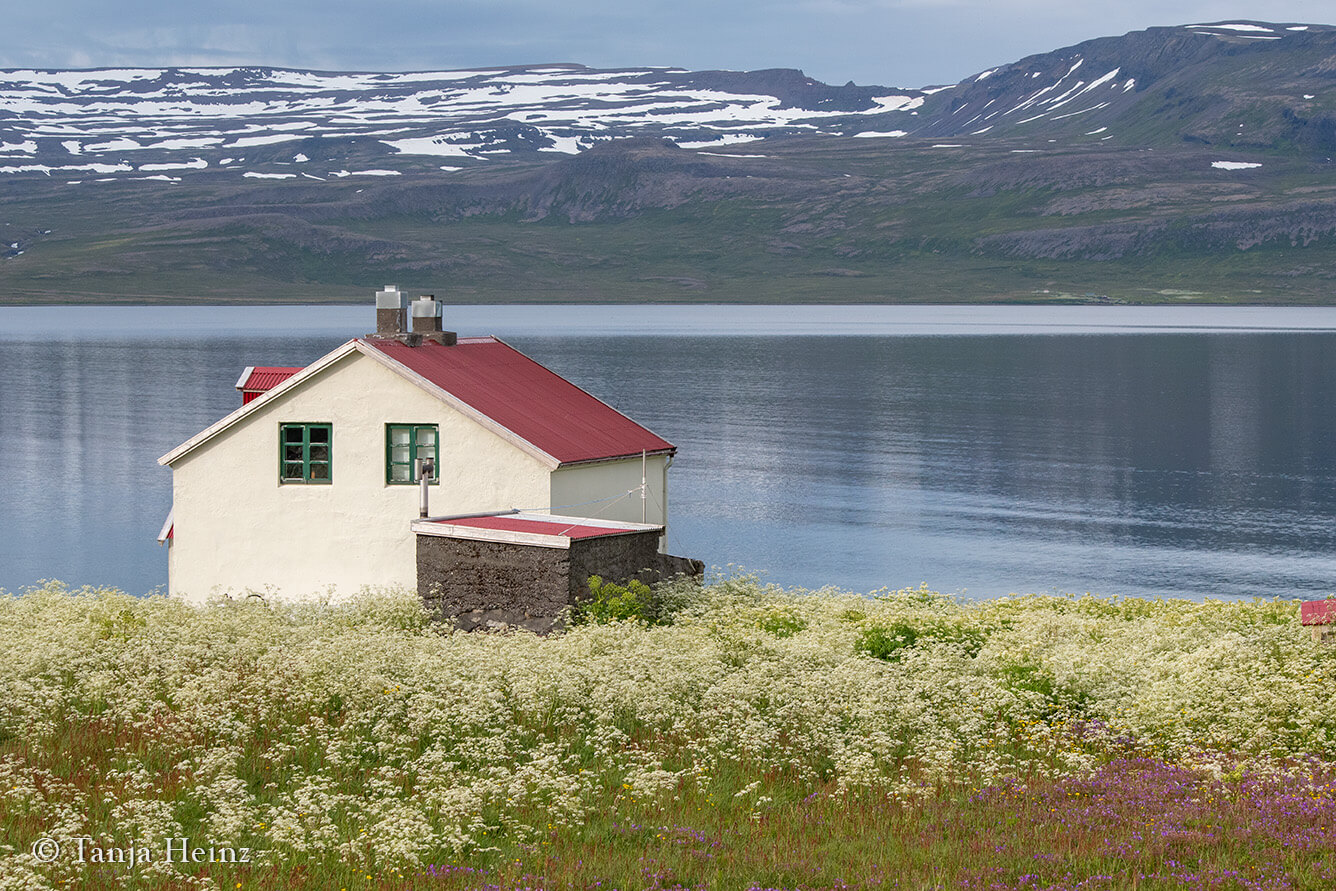
I was just a little bit “worried” about the weather. Would it rain? Would it be cold? Would we be able to spend long hours outside in nature?
No. Yes and no. Yes.
It did not rain at all. It was just cold in the afternoon (it was July). And we were able to spend the whole day outside hiking or waiting for the Arctic foxes.
Thus, there was no need to worry and we could spend all daytime outside in the vicinity of the Kvíar Lodge.
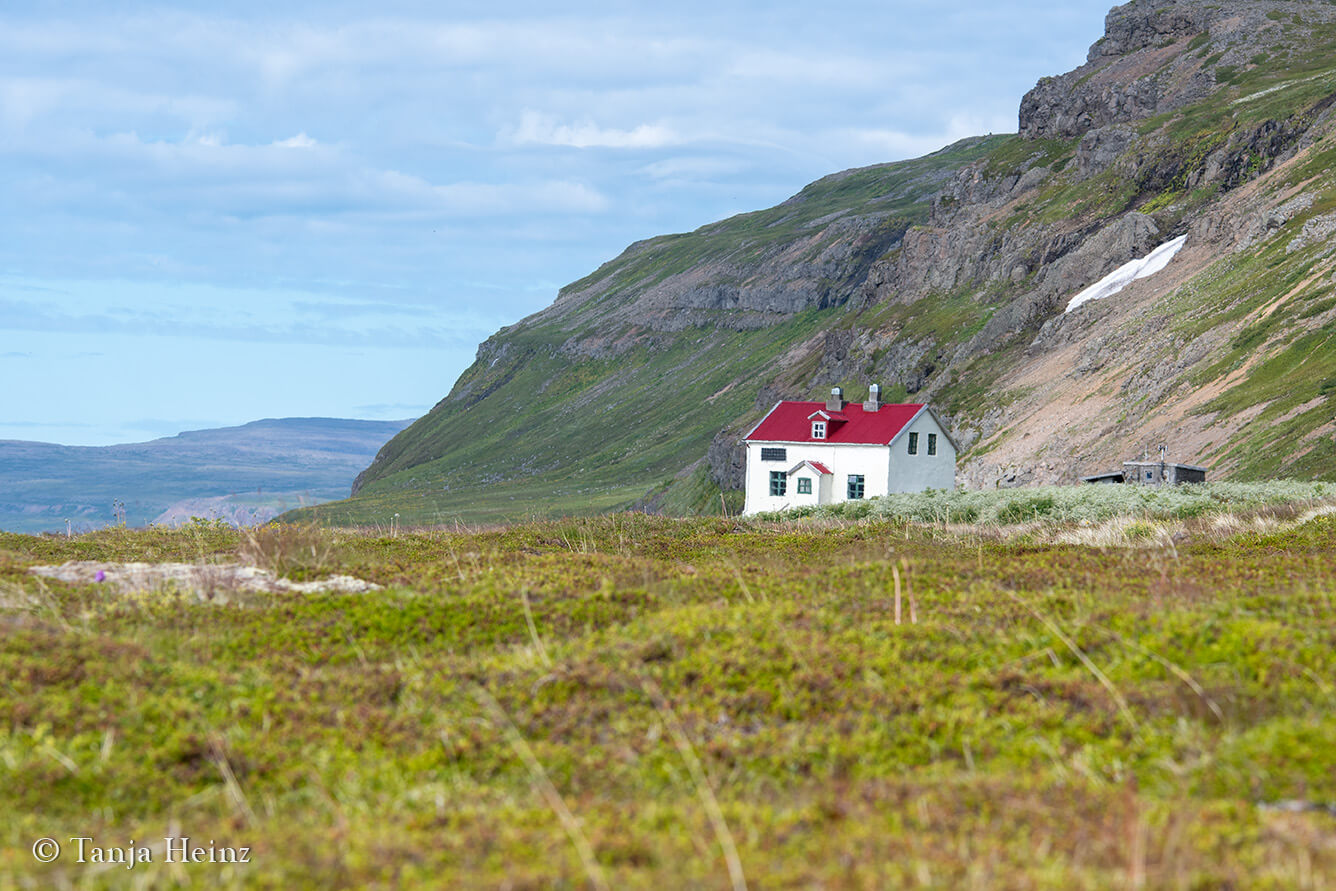
Information: There is a heating system in the Kvíar Lodge. Thus, during the night I did not freeze at all. The house is operated with solar and wind power. Please note that there is no endless charging of mobile phones possible. Therefore, it is better to switch everything off or only use it when necessary.
Hiking around the Kvíar Lodge
I must admit. Although the landscapes around the Kvíar Lodge were so beautiful, I still had an eye actively looking for Arctic foxes.
Would we encounter an Arctic fox on one of our hikes? How would the animals react when they see us? Or do they detect us from a great distance already and turn immediately after detecting us?
Well, I unfortunately don't know it, as we did not see any Arctic foxes on our hikes. We saw them in front of their dens, but on our hikes we didn't see any Arctic fox.
But we spotted some birds like, for example, European golden plovers.
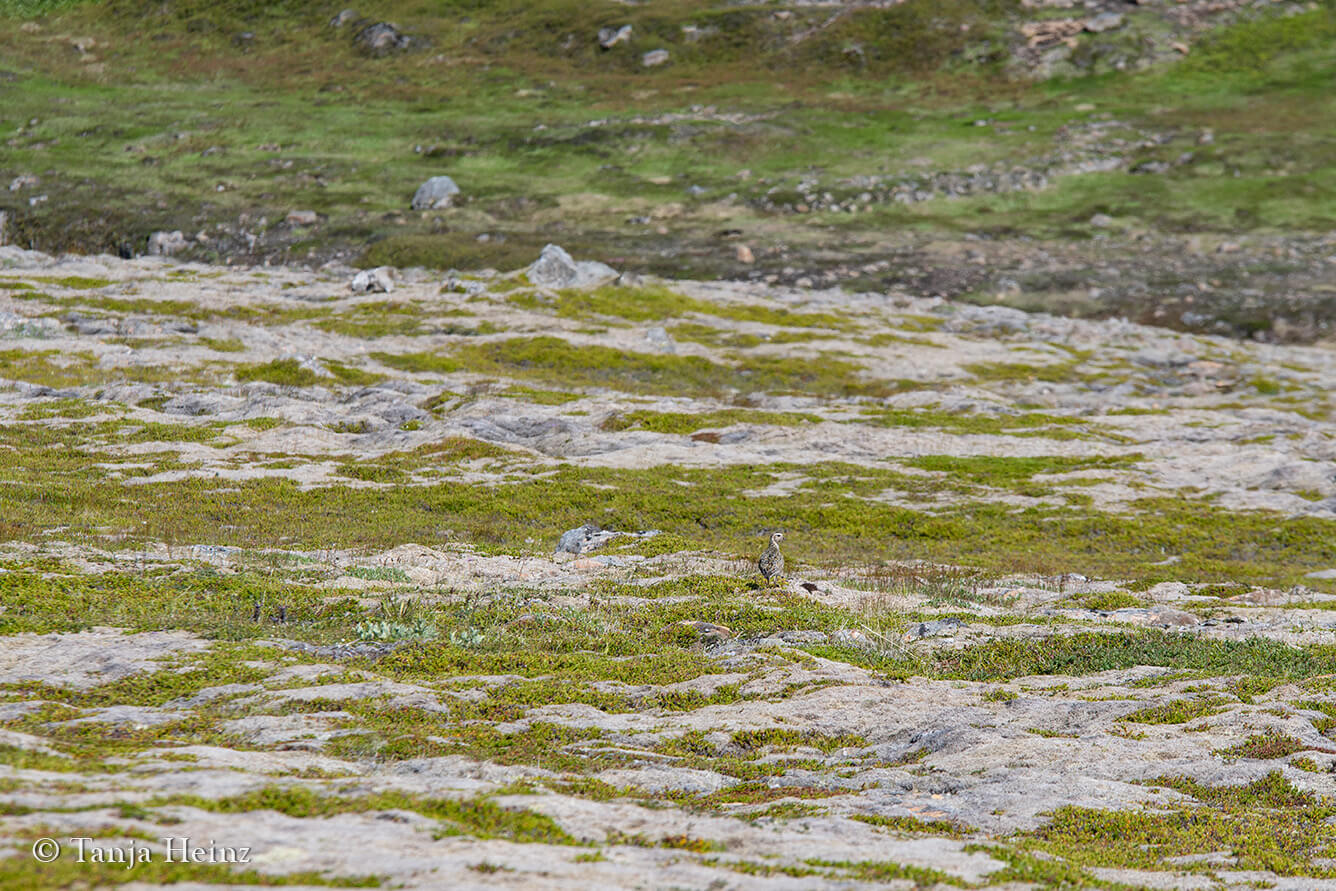
Furthermore, we saw quite many meadow pipits not only around the house, but also in the open area farther afield from the farm house.
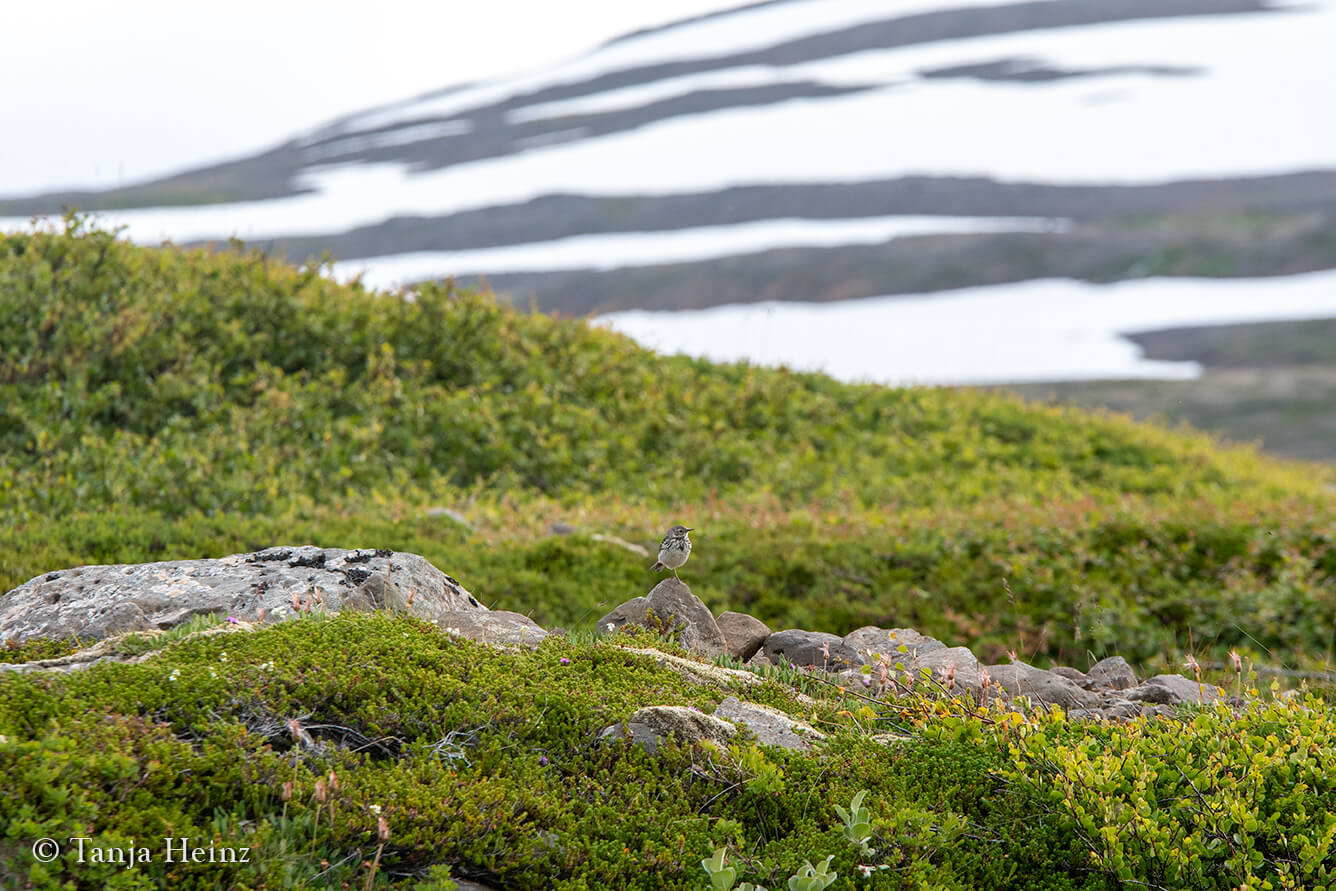
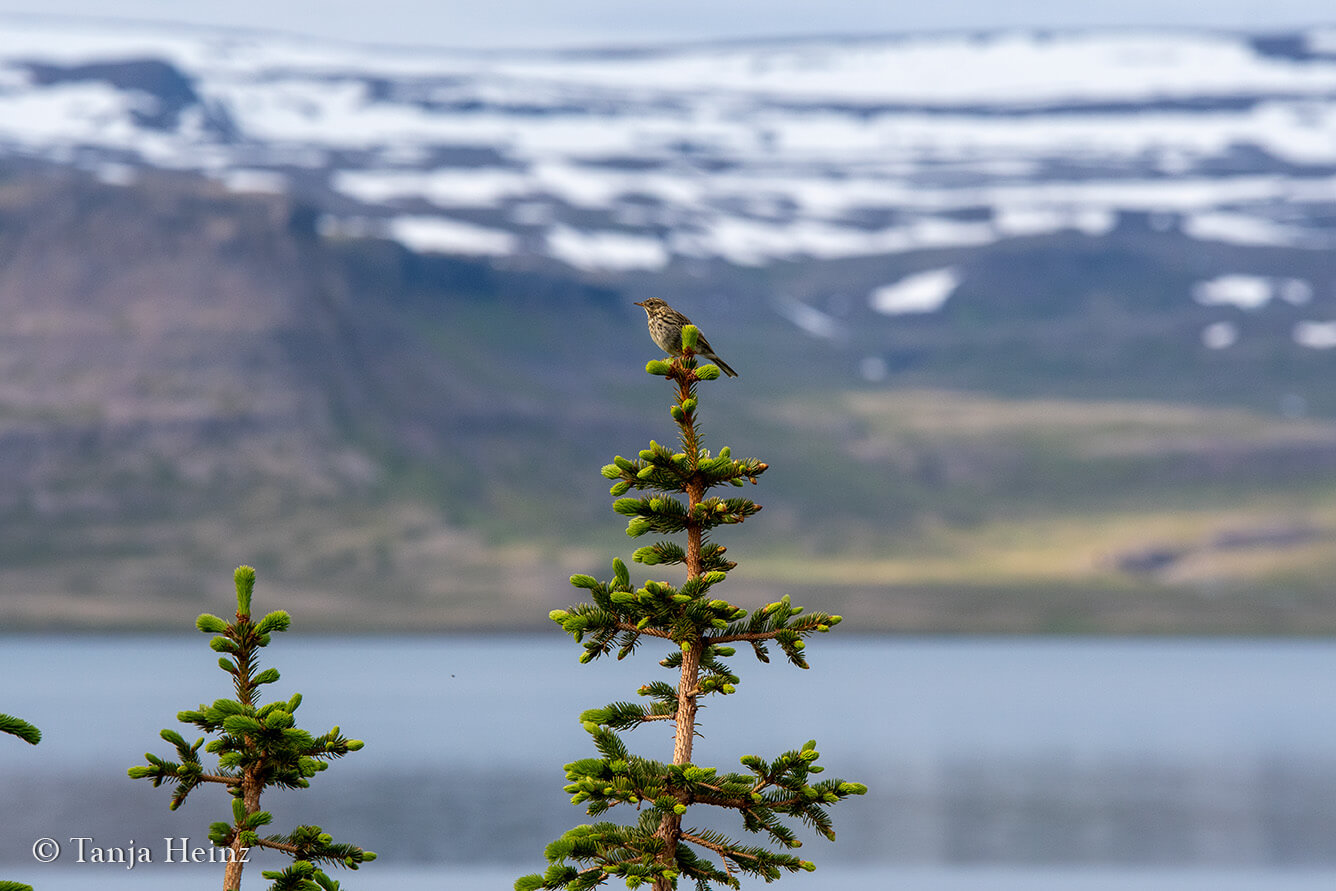
The same applies to all the redwings we saw on our hikes or around the farm house.
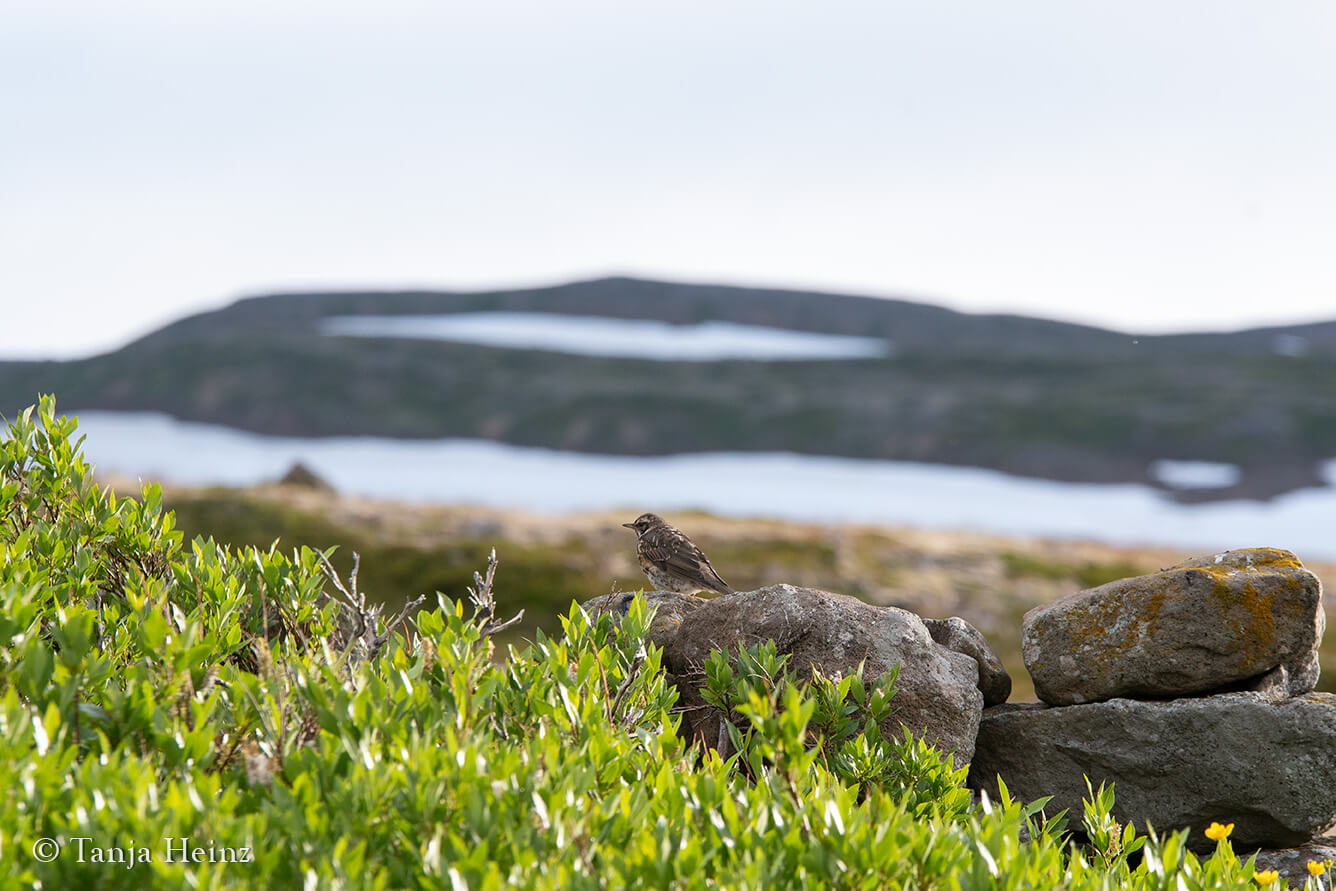
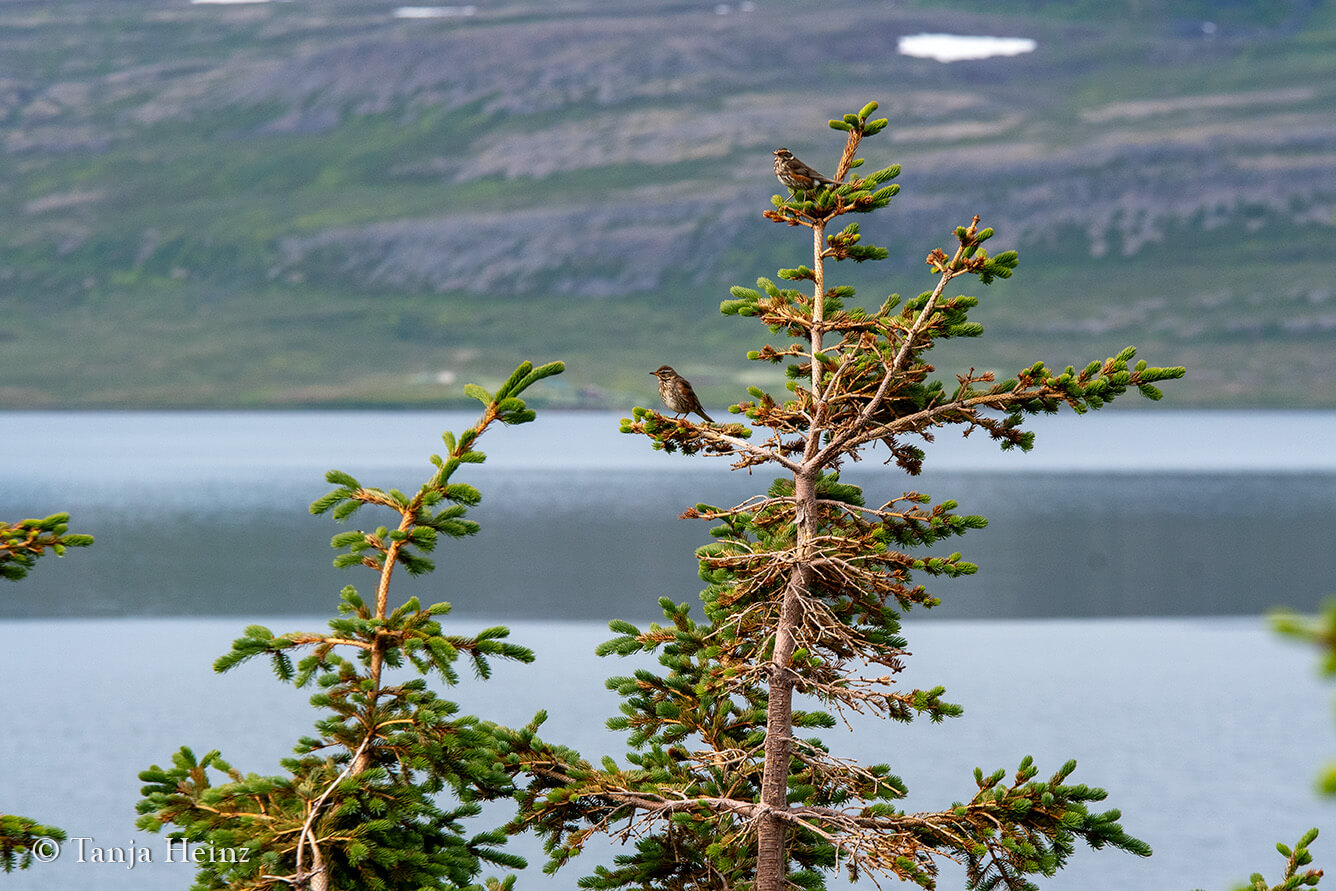
Meadow pipits and redwings were the most common birds around the Kvíar Lodge. We also heard quite often a snipe. However, I did not spot any of them. As fast as I heard them, as fast they were gone again.
Much easier to observe were all the wild flowers we encountered.
The guides, by the way, had an incredibly good knowledge about the wild flowers in the Westfjords.
One interesting plant was the garden angelica (Angelica archangelica).
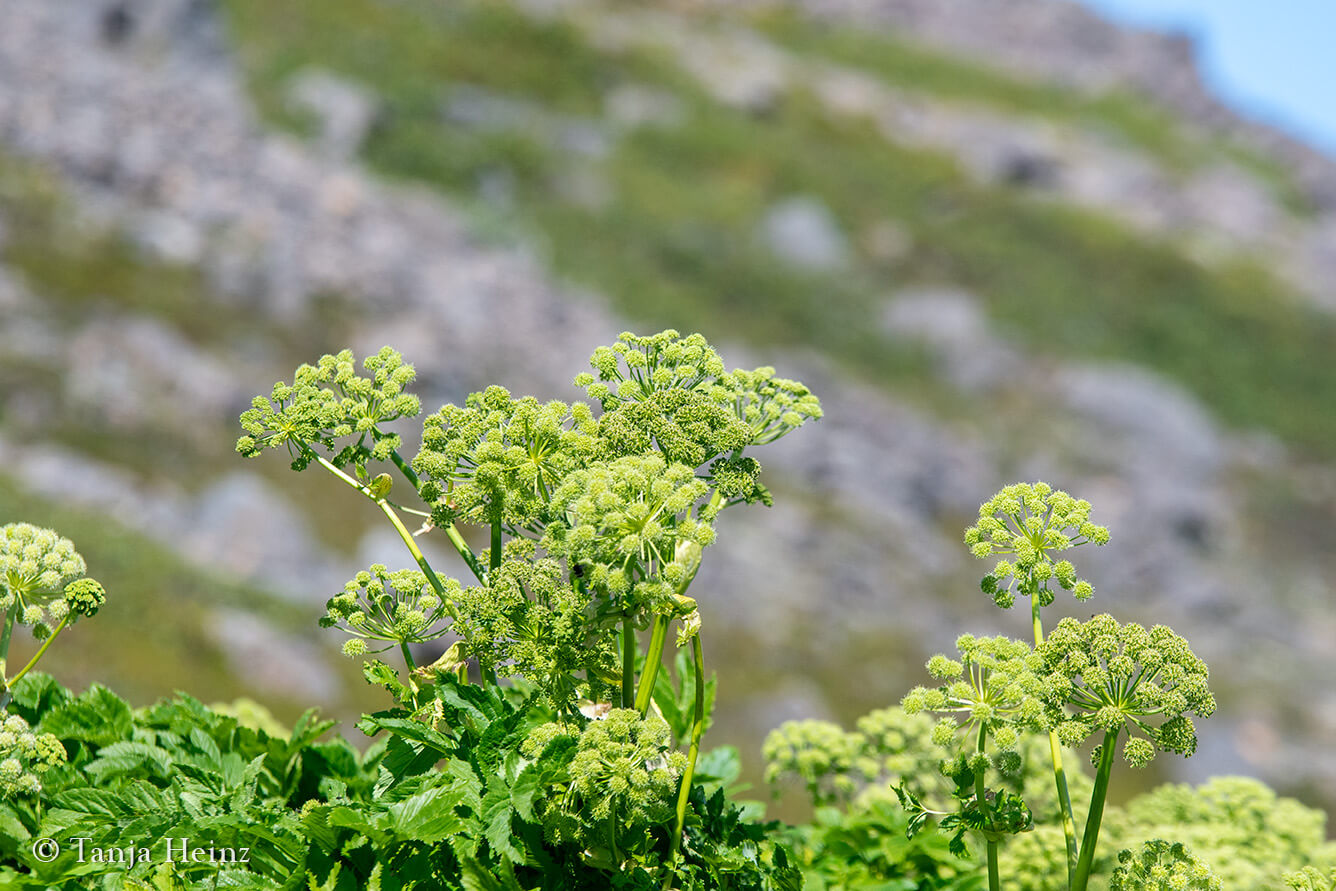
The garden angelica is an interesting plant, because Arctic foxes feed on this plant!
Well, this was indeed new for me. I had not known before that Arctic foxes even feed on plants! Thus, Arctic foxes can be described as omnivorous.
On our hikes I was looking for more garden angelica. Maybe an Arctic fox would accidentally appear in front of us?
Unfortunately, this did not happen.
Instead, I marvelled at the spectacular landscapes!
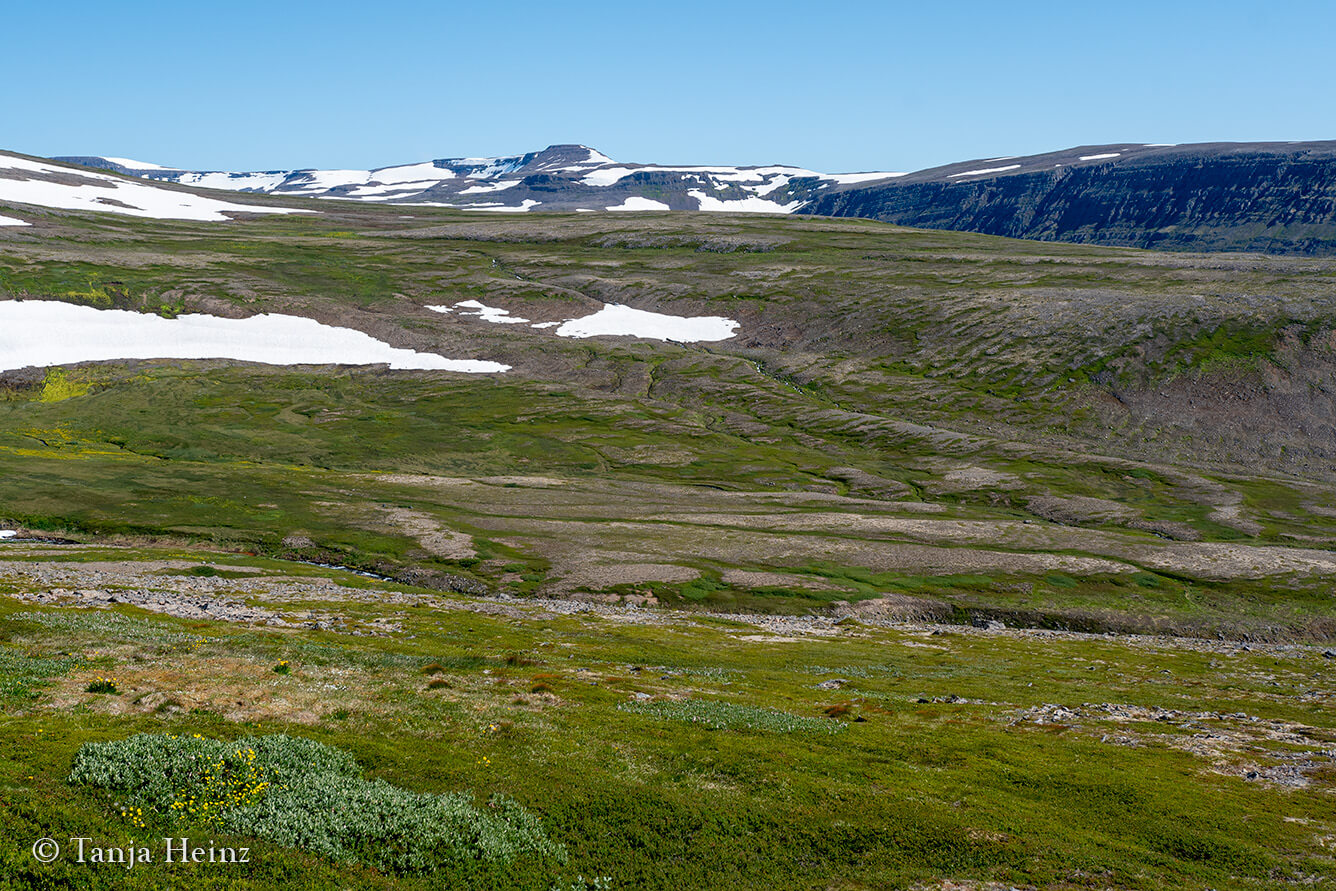
Although it was summer, the landscapes were in parts covered in snow.
The views onto the snow-covered mountains and the blue sea were especially spectacular.
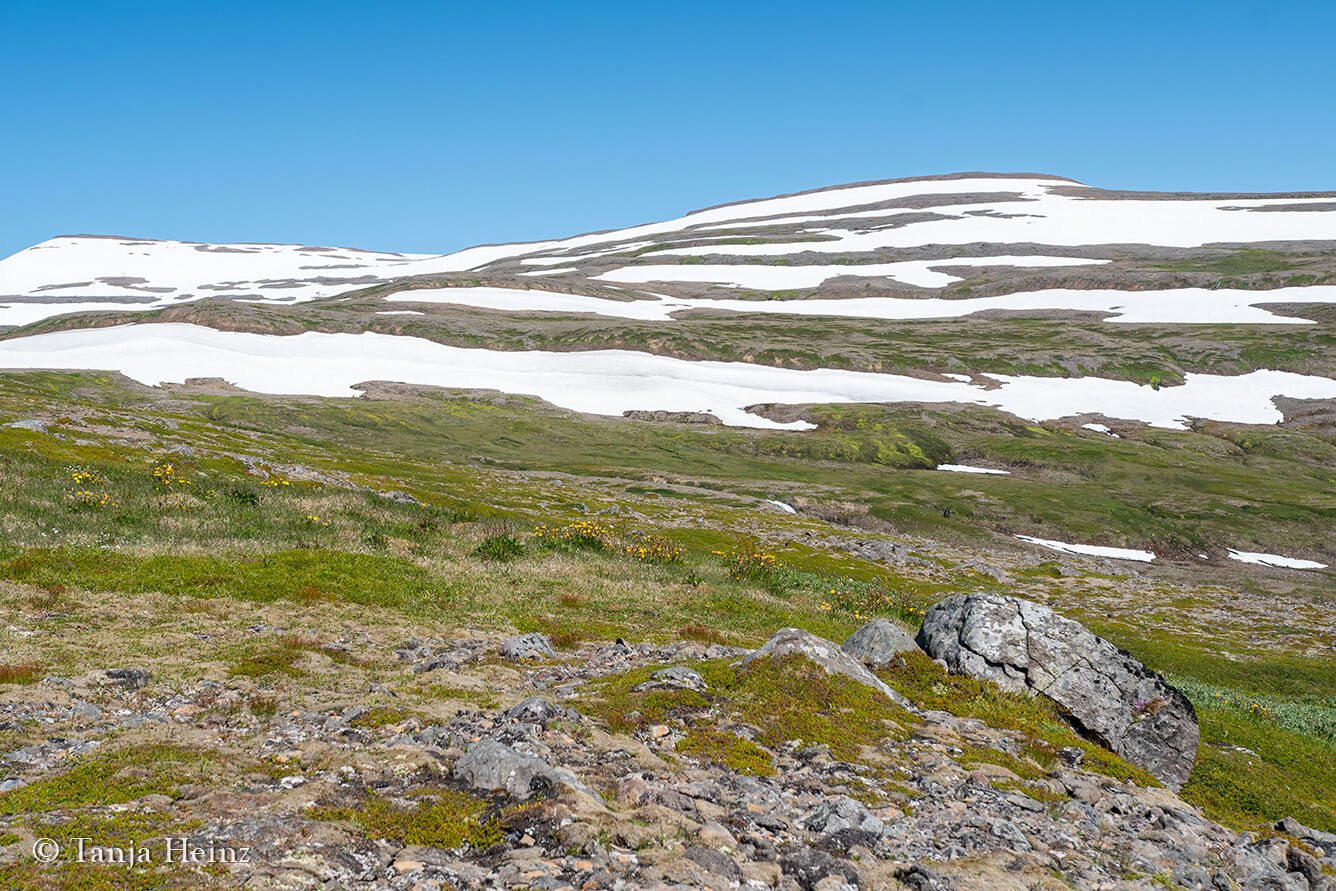
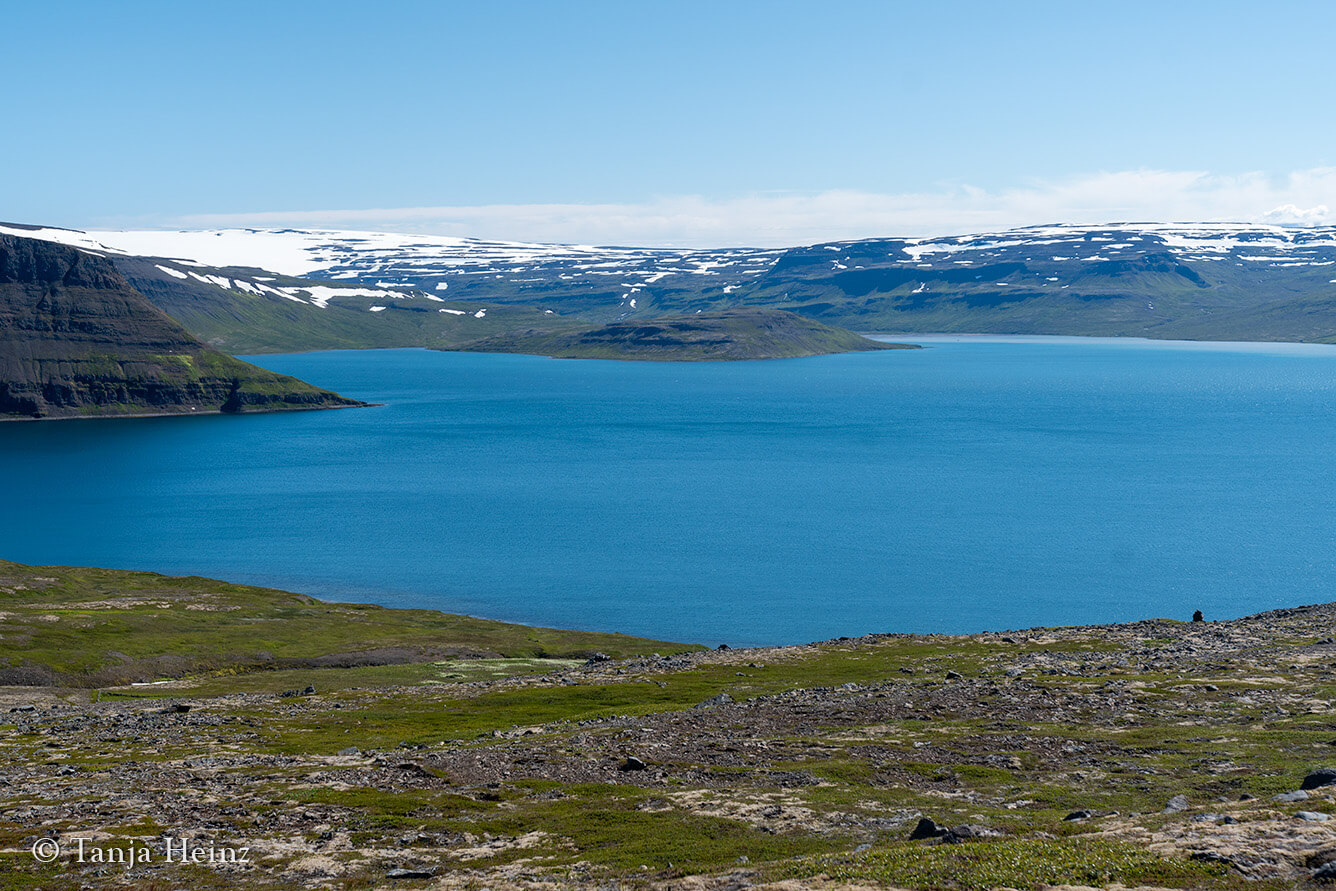
The snow seemed far away. But at one place we could touch the snow and feel the cold.
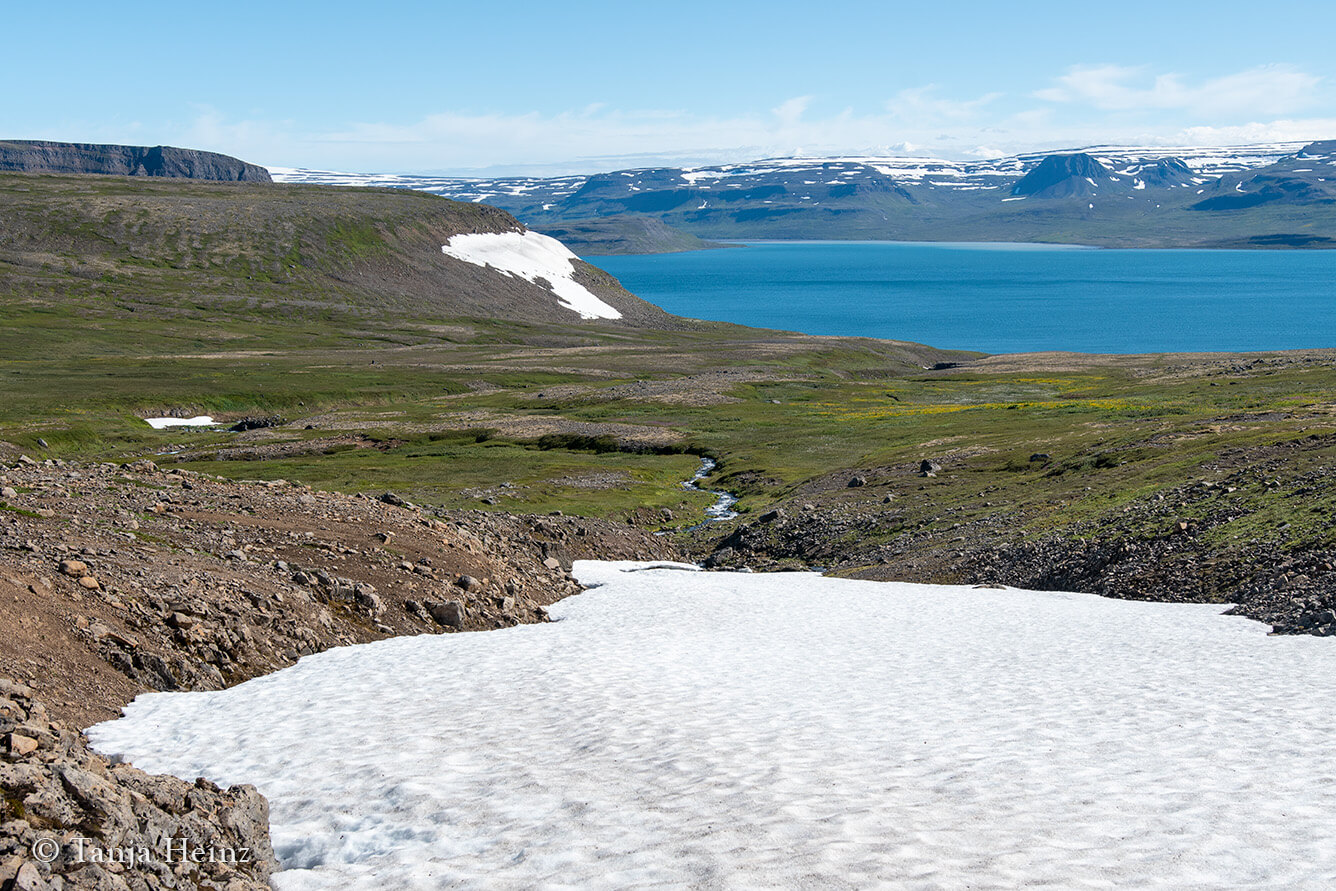
We hiked through an open area and we always had an overview of the landscape around the Kvíar lodge.
From afar we saw a waterfall. Of course, we went to that waterfall as well.
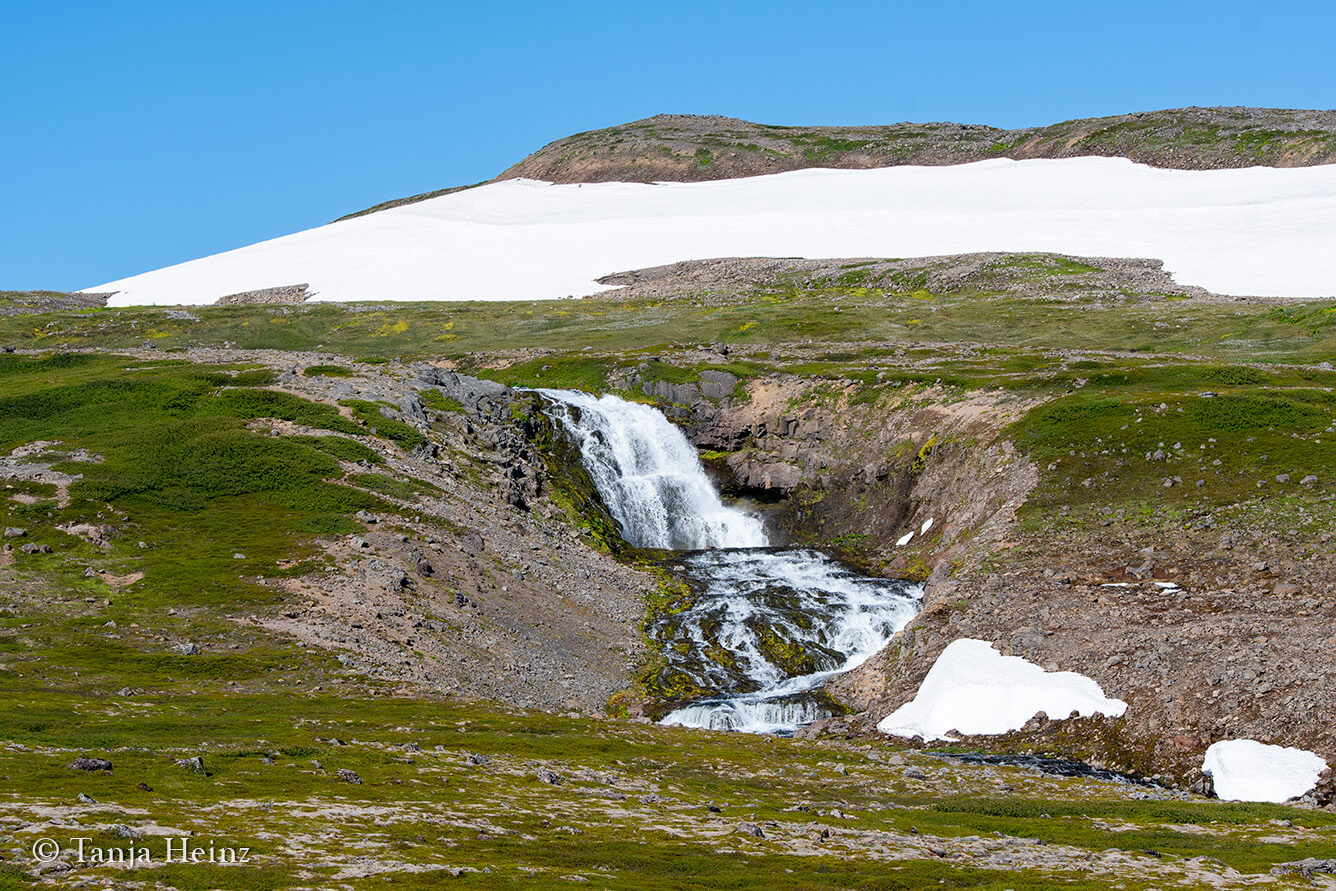
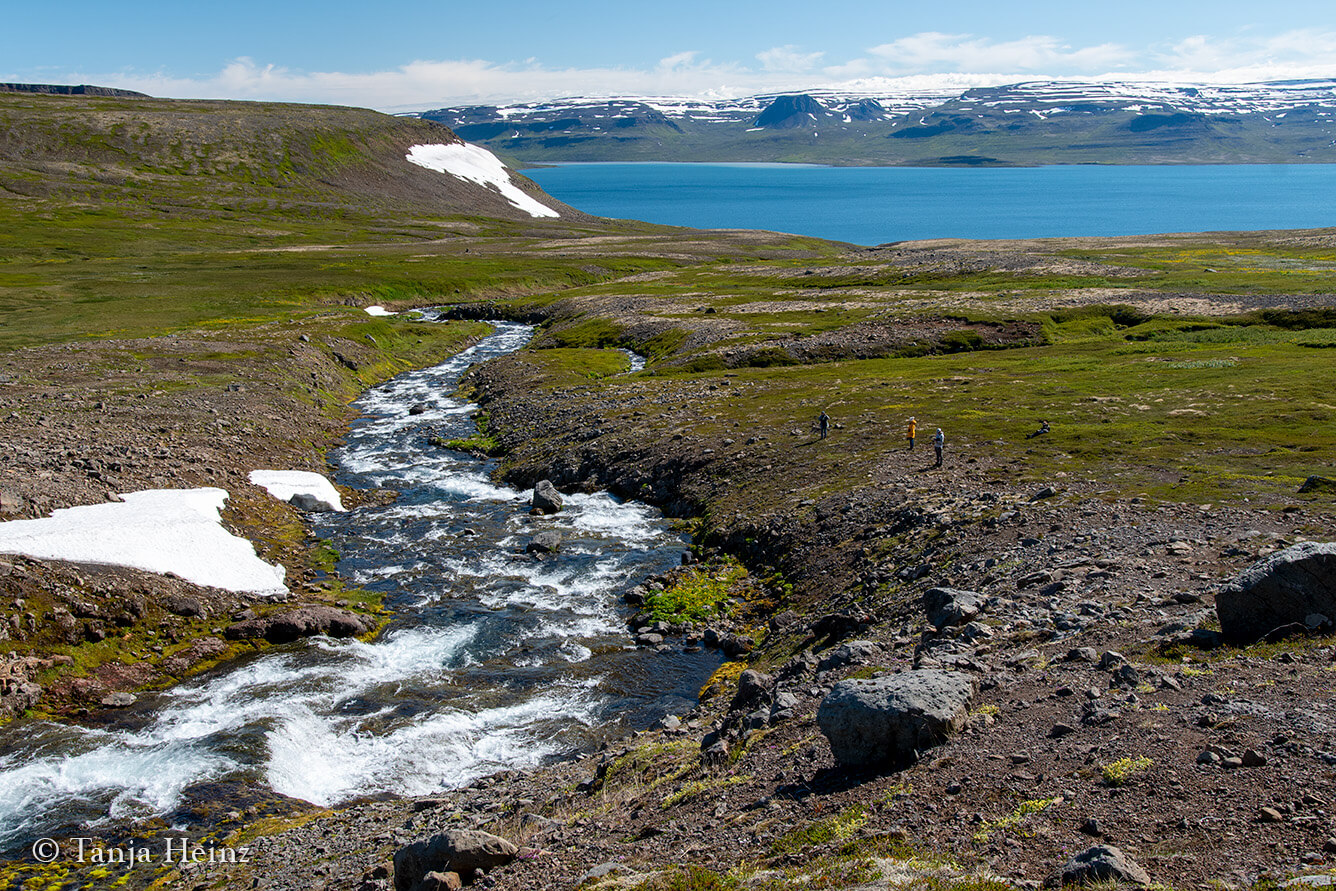
Everyone was quiet. There was no need to talk. The sound of the waterfall was enough. Very calming and soothing.
At the waterfall we got more beautiful views onto the area.
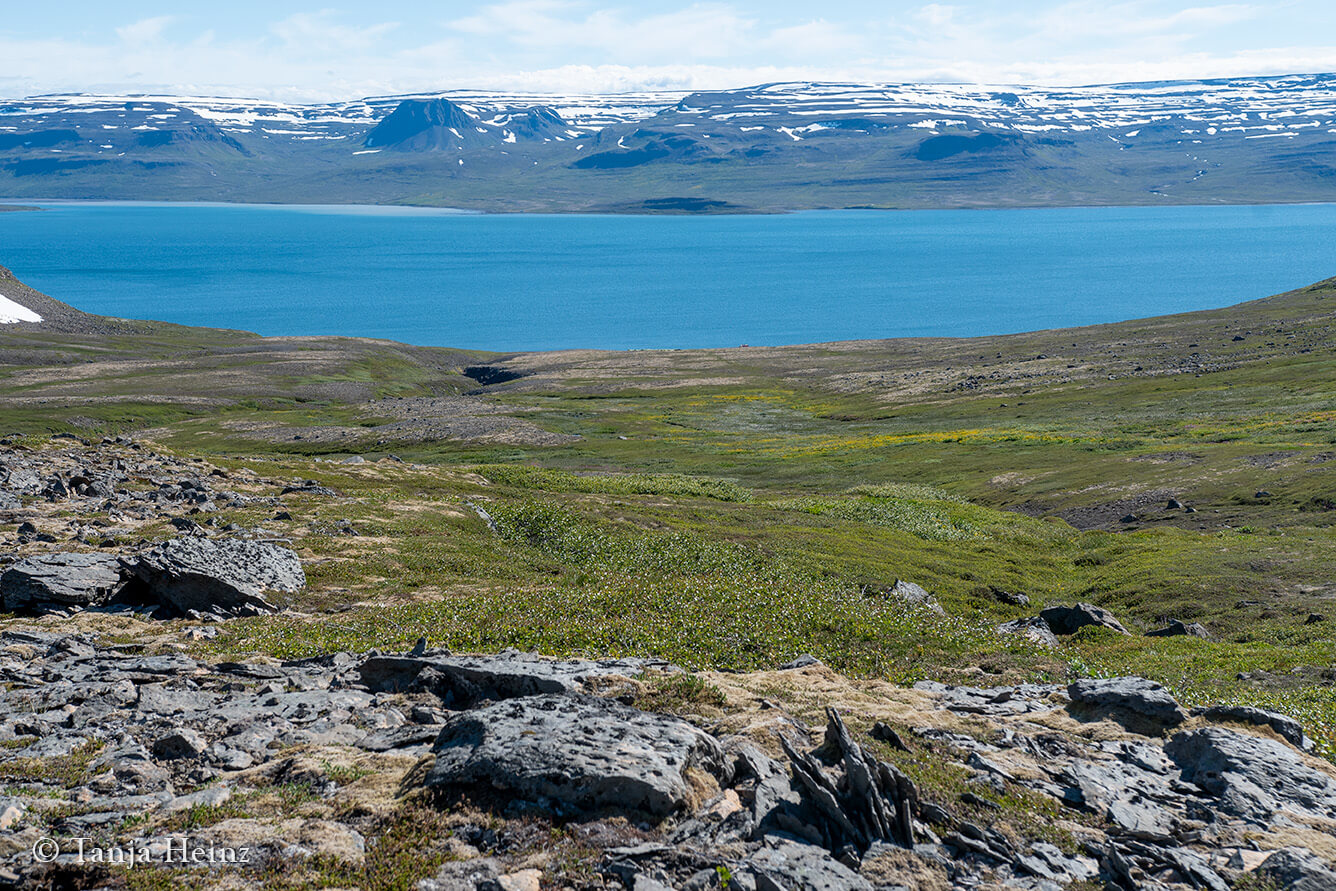
I think the Kvíar Lodge is a good place for travellers who do not hike regularly. But for sure, there are more challenging hikes in the Hornstrandir Nature Reserve. I love hiking and I would have loved to participate in more challenging hikes. However, as I planned to stay in the nature reserve because of the Arctic foxes, I did not decide for a tour with more challenging hikes or changing places every night, respectively. I carried a camera, and thus, these kind of hikes around the Kvíar Lodge were just perfect for me.
Nevertheless, the green, the blue, and the white just took my breath away. It was too beautiful to be true!
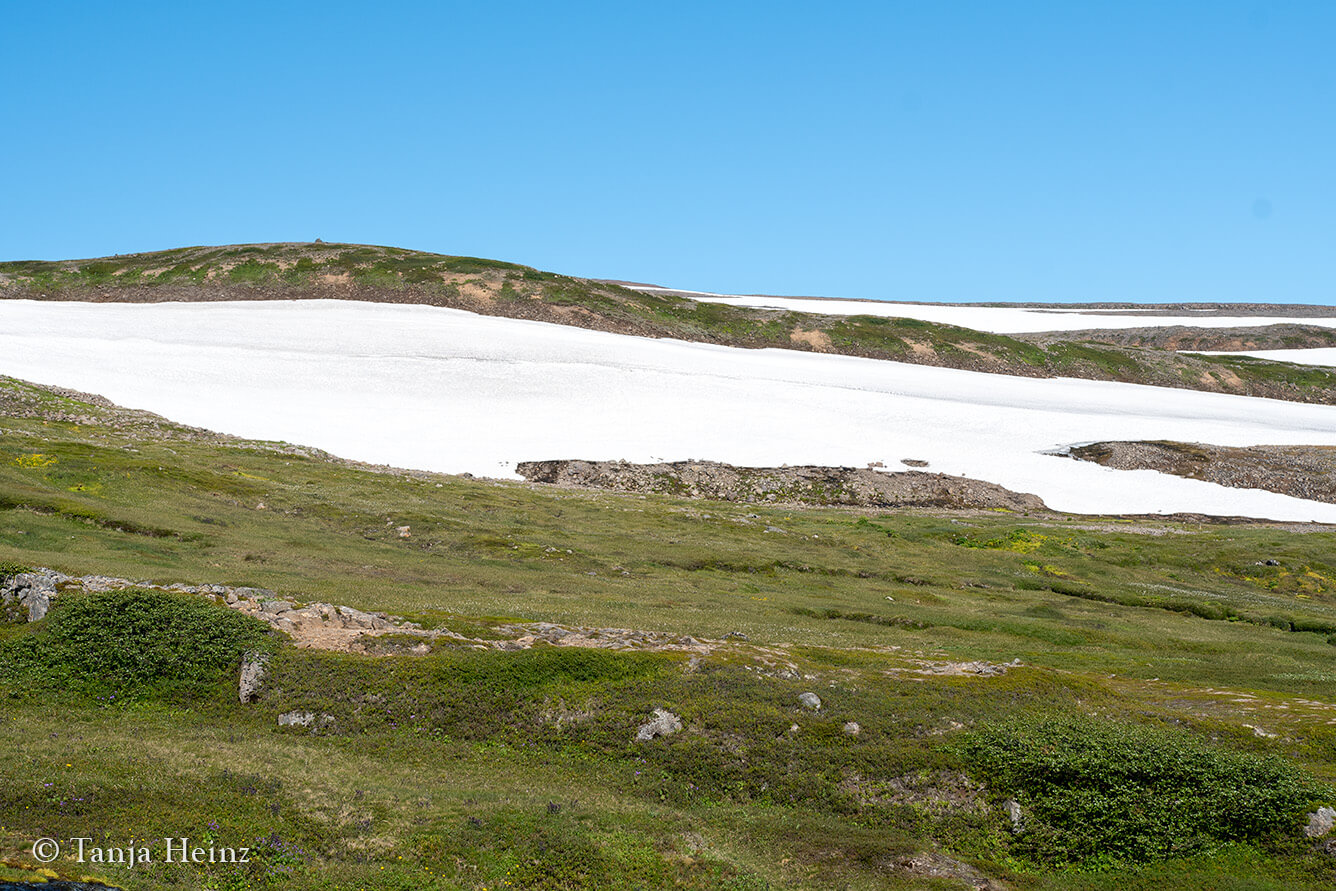
As we did not see an Arctic fox on our first hike, I was hoping to see one on our hike in the next morning.
Well, to say it right away, we did not see an Arctic fox on our second hike, neither.
So, hiking was not the best choice searching for the Arctic foxes. Be it in the morning or in the afternoon.
However, although we did not see an Arctic fox during our second hike, I still had again an incredible time in the Hornstrandir Nature Reserve with spectacular views.
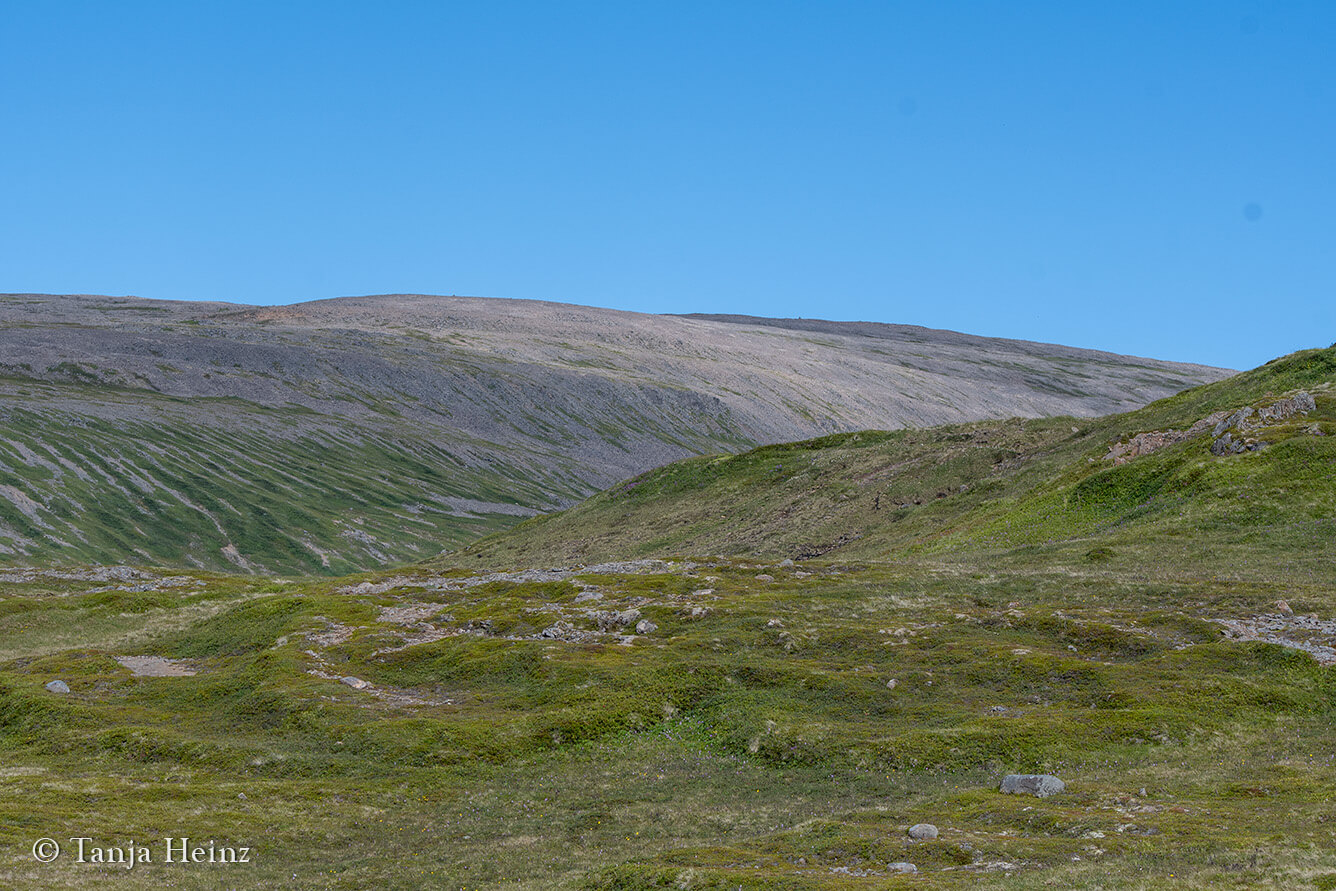
On that second day we took another route along the coast. It was into the direction of the Lónafjörður.
We were again so lucky with the weather. It was a bright and sunny day. There was some wind, but it was still warm.
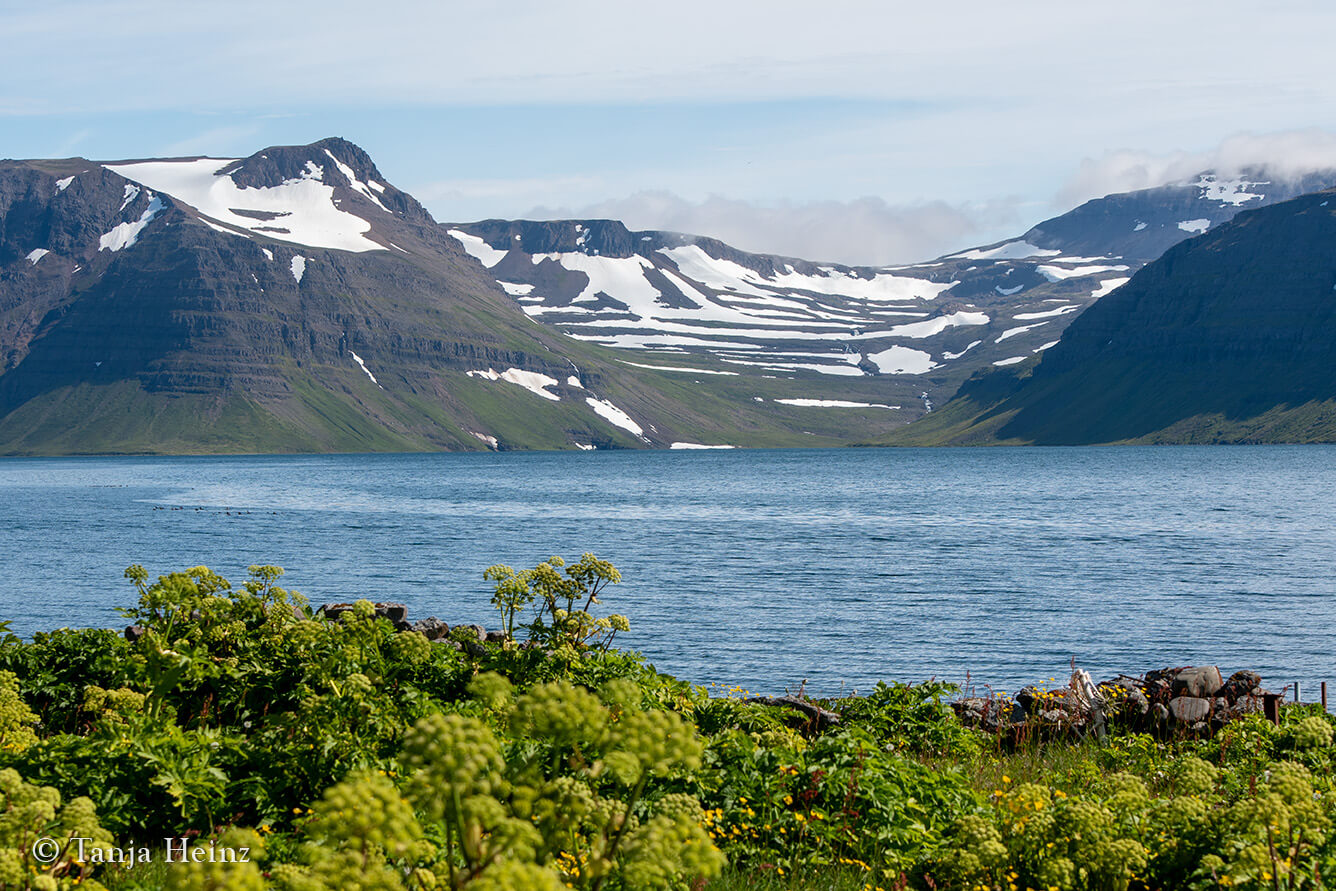
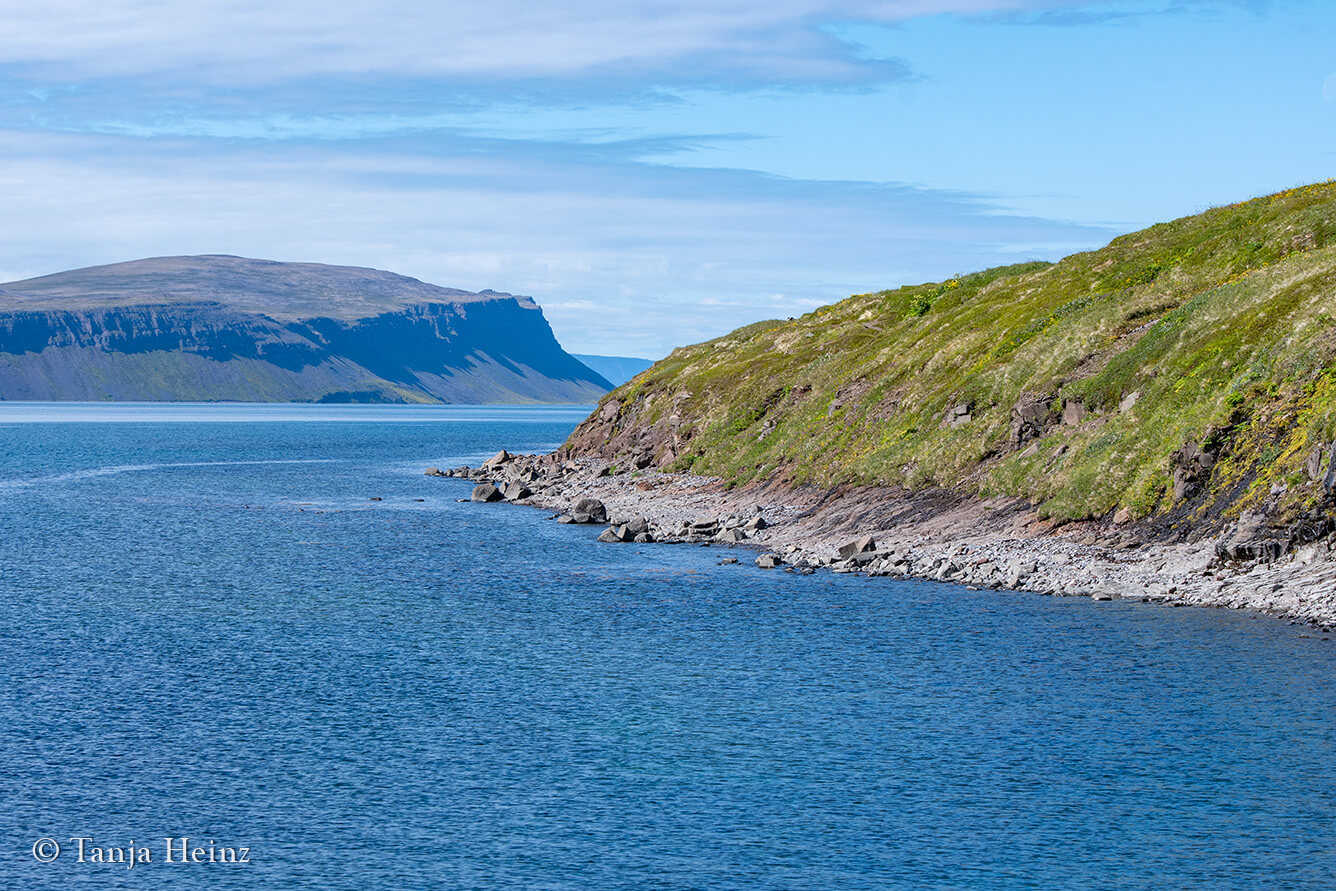
Sometimes we stopped to look at the wild flowers.
Our guides had good eyes detecting special plants. For example, they saw a Leafy Northern Green Orchid (Platanthera hyperborea) on our path.
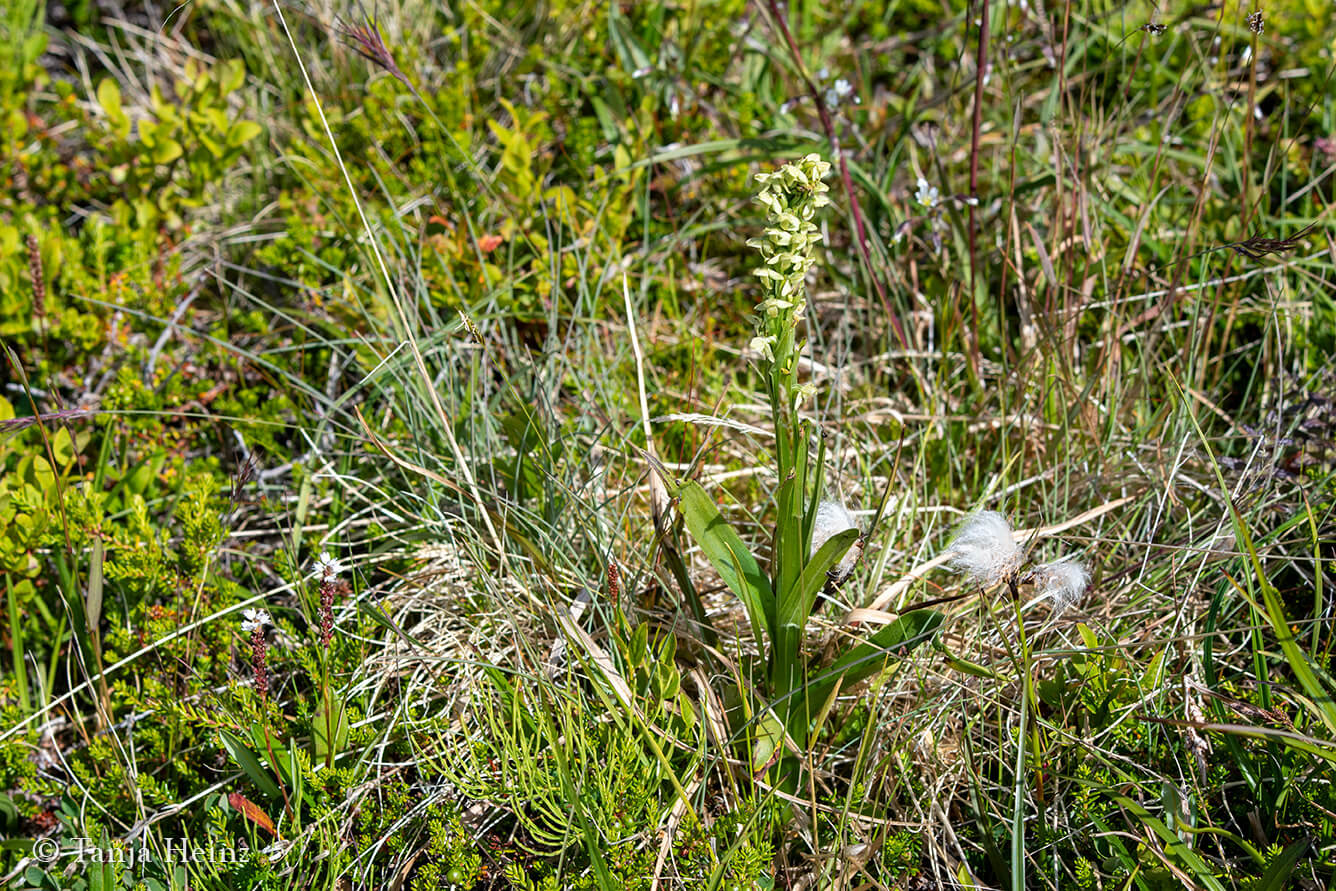
The two guides knew the nature of the place very well. They were no trained biologists, but they had an incredible knowledge of the plants around the Hornstrandir Nature Reserve.
We checked not only the wild flowers on our hikes, of course, we were also looking for traces of Arctic foxes. And well, in one moment we saw some scat (was that from an Arctic fox?) and an opening of a den.
In the Arctic Fox Centre I learned that a den might have more than one opening. However, we only saw one.
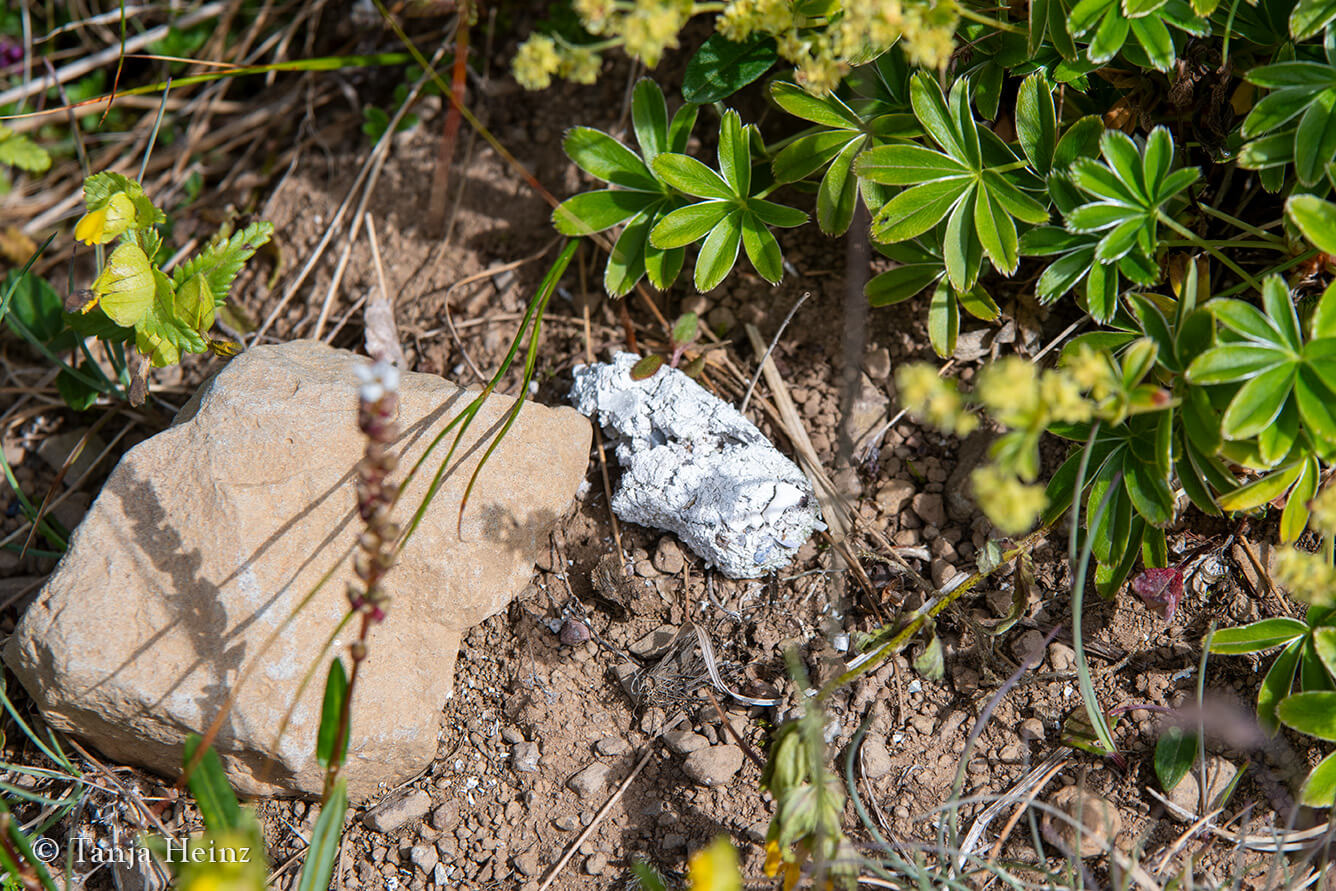
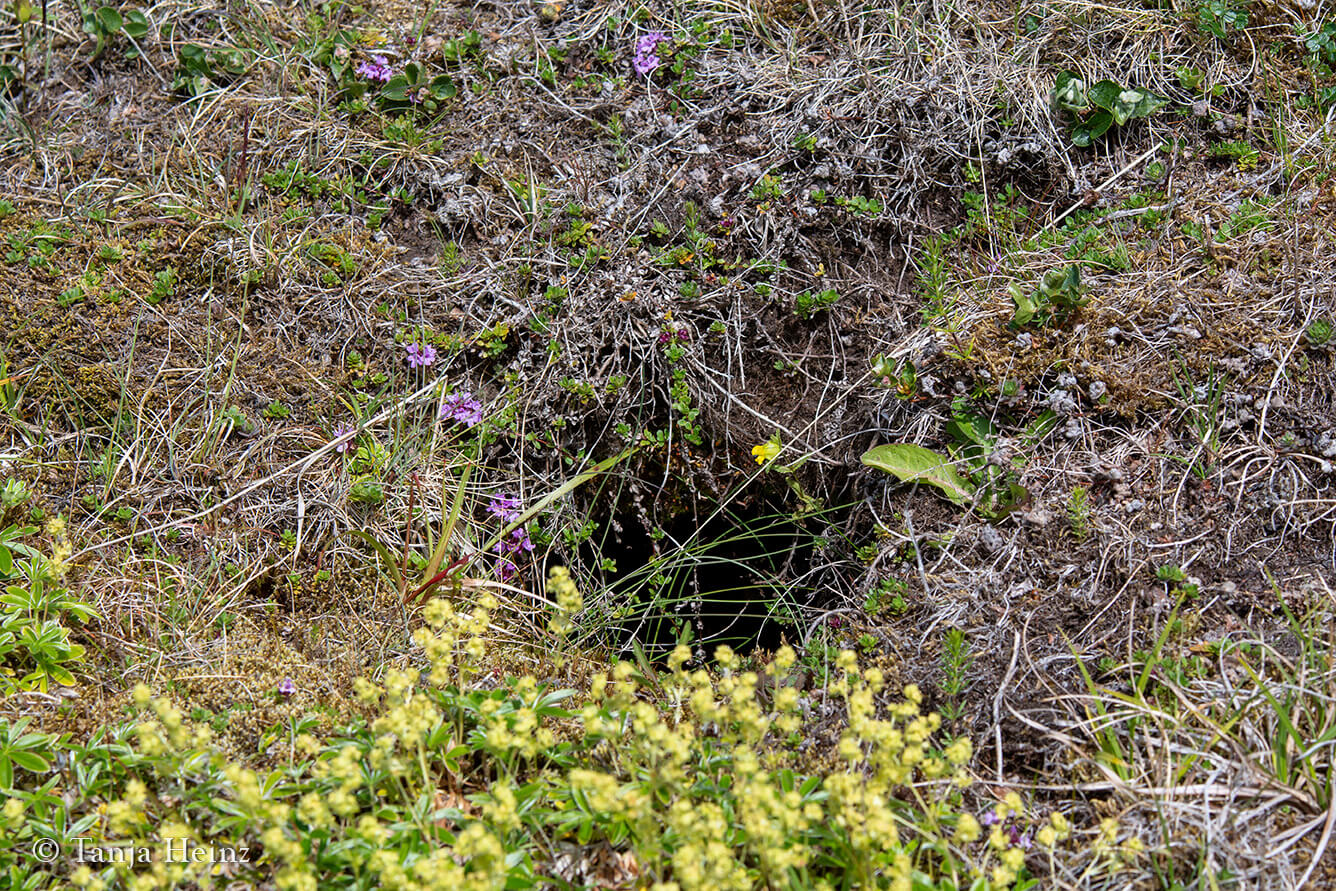
Information: If you want to learn more about Arctic foxes, the Arctic Fox Centre in Súðavík is a good starting point before visiting the Hornstrandir Nature Reserve. Please look at my previous posts to learn more about this centre.
The Arctic fox is the only native and largest terrestrial mammal in Iceland. Blue whales, in contrast, are the largest mammals in the marine environment both in Iceland and in the world, respectively. Unfortunately, I did not see any blue whale in Iceland (but I saw them in the Azores). However, I was lucky enough to have seen marine mammals like minke whales or humpback whales in Húsavík and Reykjavík, but also harbour seals on Vigur Island, or a grey seal in the Hornstrandir Nature Reserve.
On that second hike we saw a grey seal in the bay close to the coast.
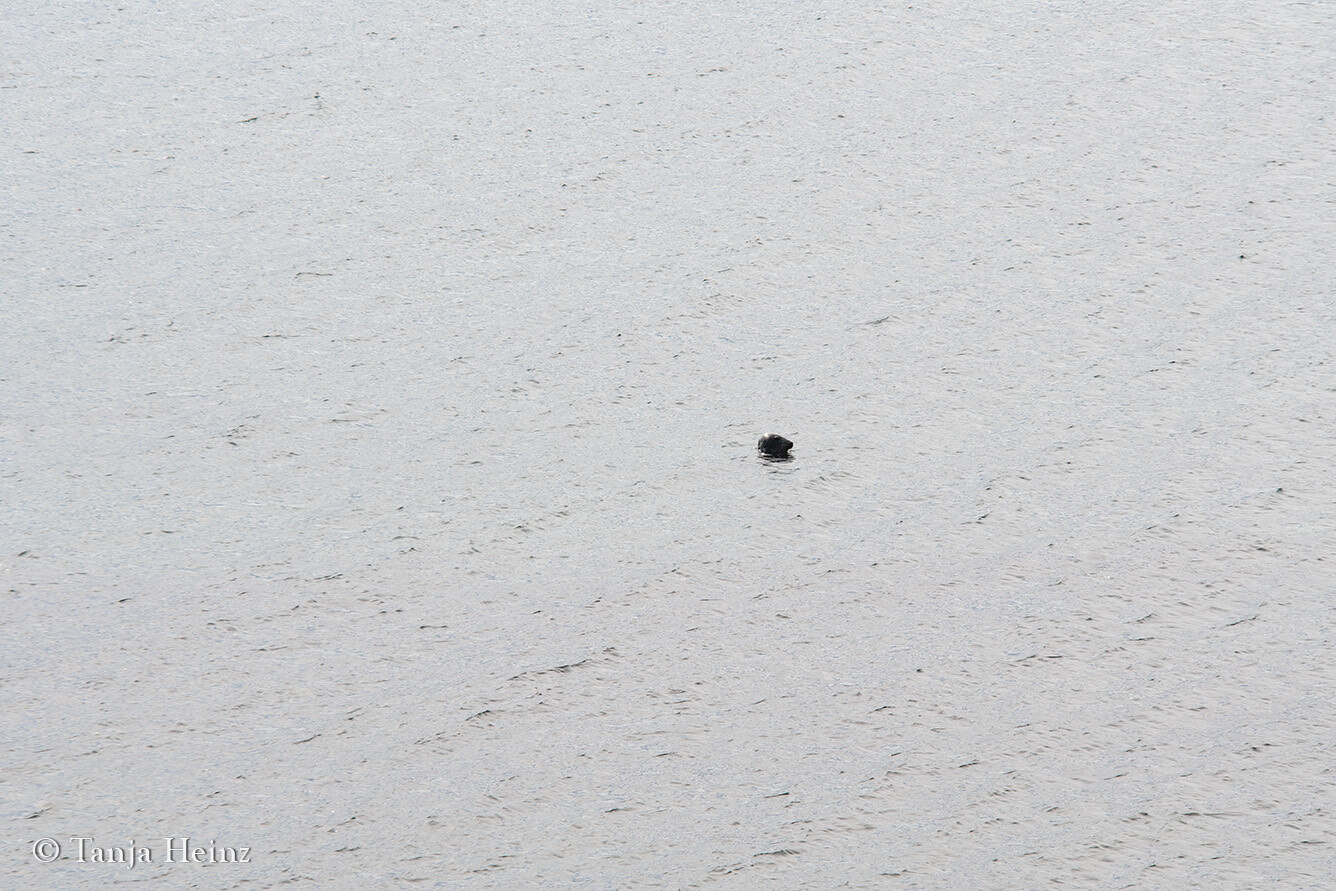
There were also some birds around in the bay.
Far away we saw a whooper swan couple.
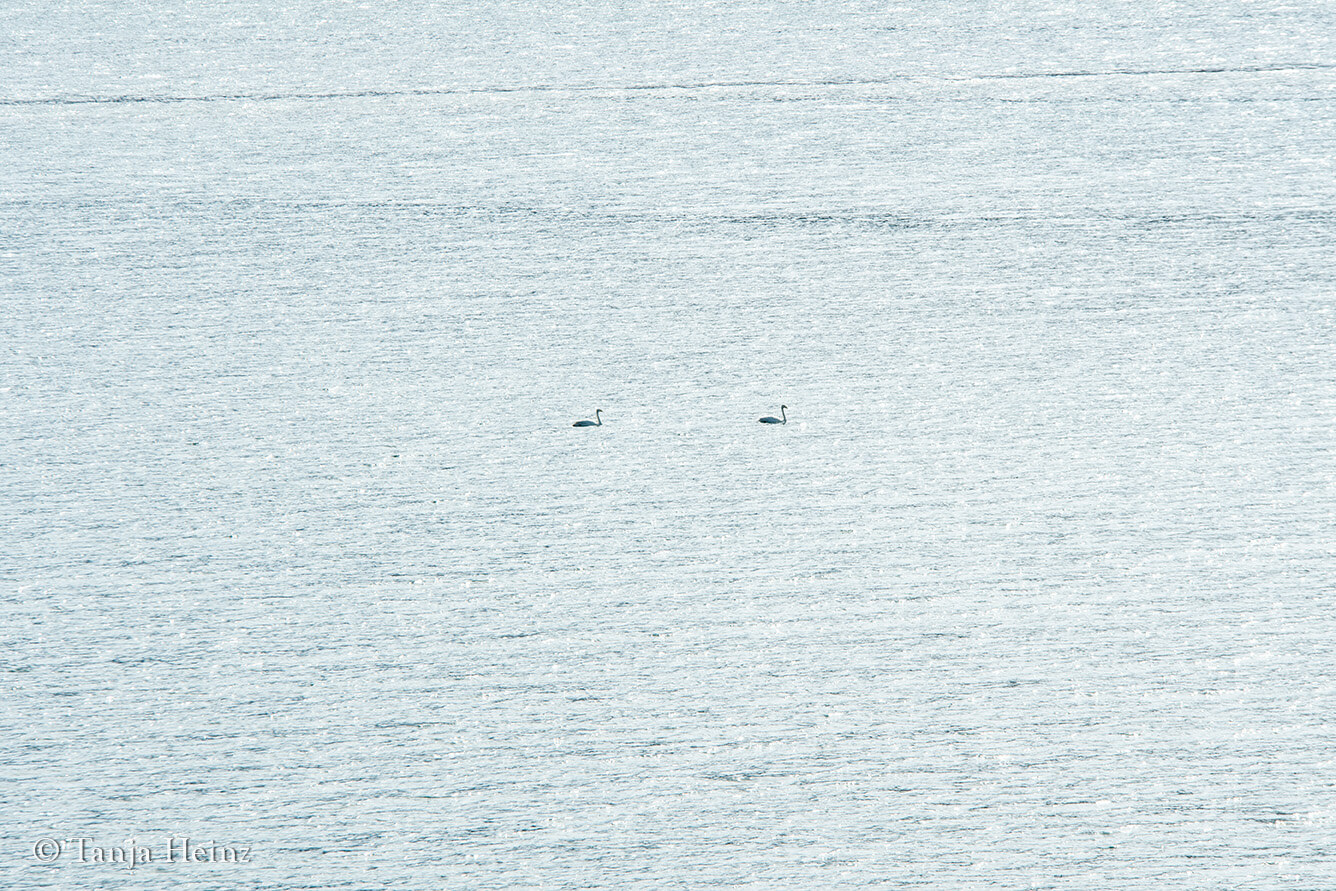
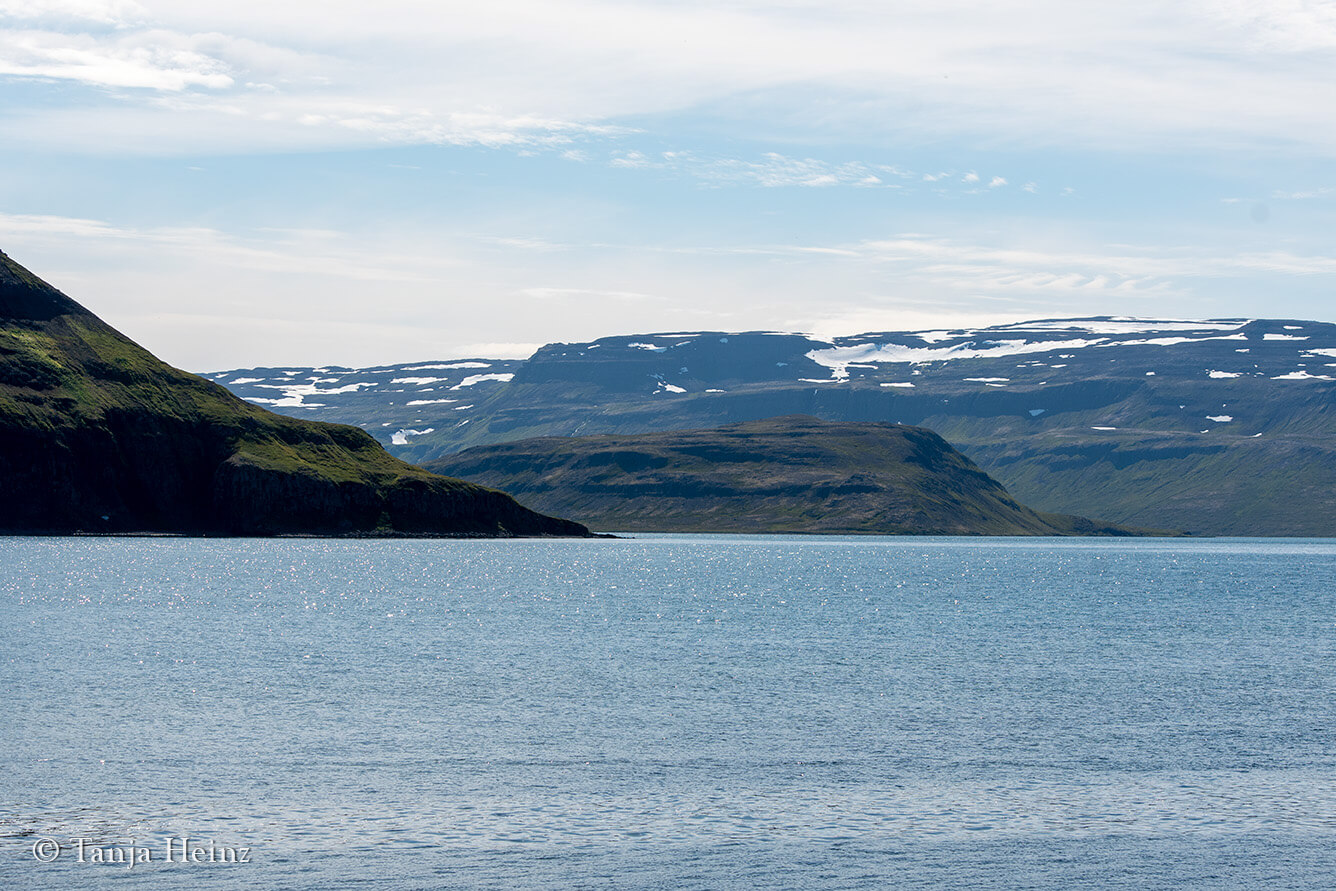
At the end of the path, we stopped and we took a break. There was garden angelica around, but no Arctic foxes.
Maybe they were around, but they just hid from us.
I lay down close to the water and enjoyed the sun and the tranquillity. I observed the two American friends how they sophisticatedly threw flat stones over the water.
The two guides found some eating plants and we could try it.
Everything seemed to be so simple and beautiful. The place seemed to me so unreal.
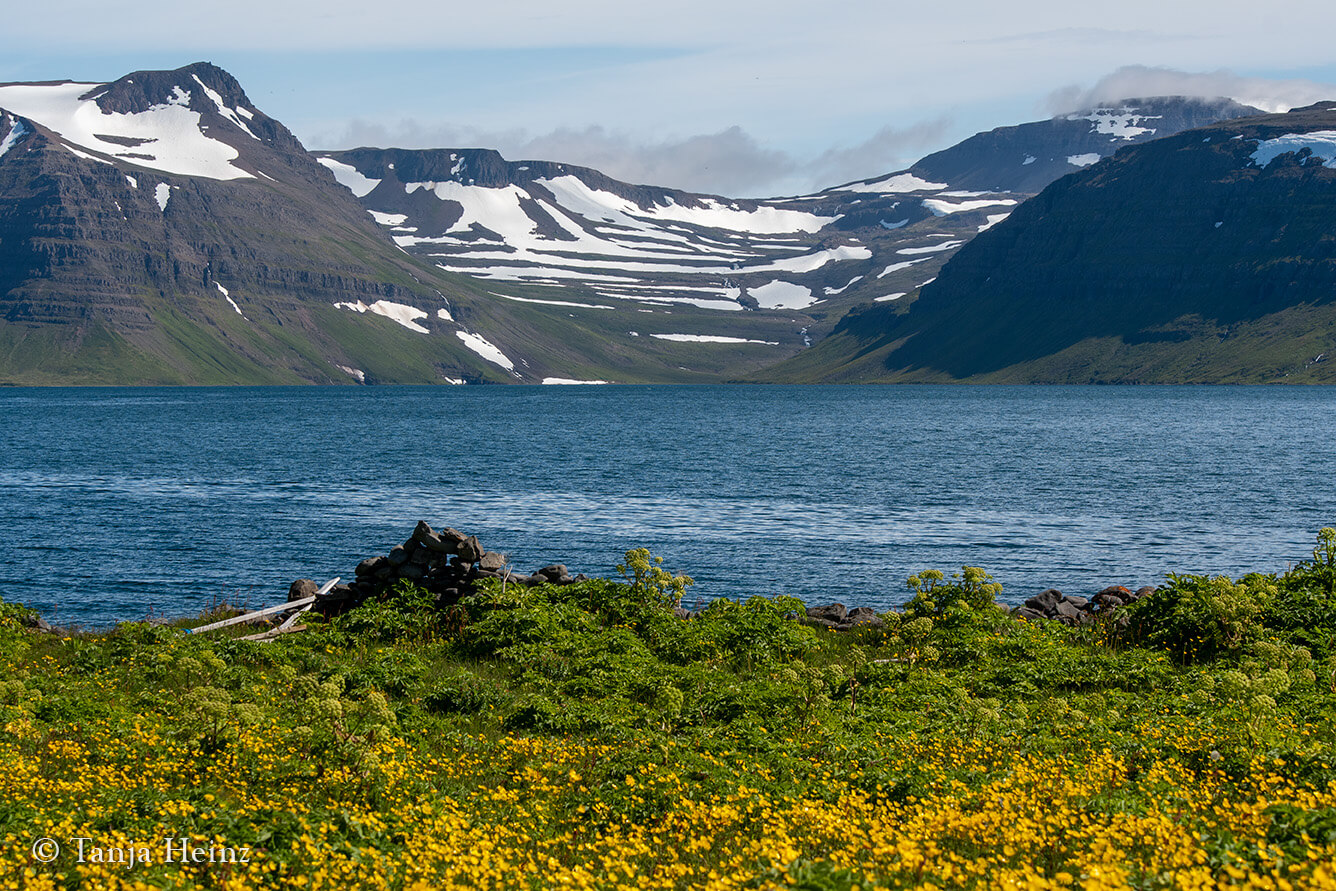
And the group was amazing. Everything was just perfect.
After some time, one of the guides left to prepare lunch for us. We could stay a little bit longer, but after some more time we also had to leave and hiked back to the Kvíar Lodge.
By the way, we just did hikes around the Kvíar Lodge. However, it is also possible to hike from another place to the Kvíar Lodge. Every afternoon we met some new people who waited for the next boat which would bring them back to Ísafjörður.
I was curious about what to find behind the hills that surrounded the Kvíar Lodge.
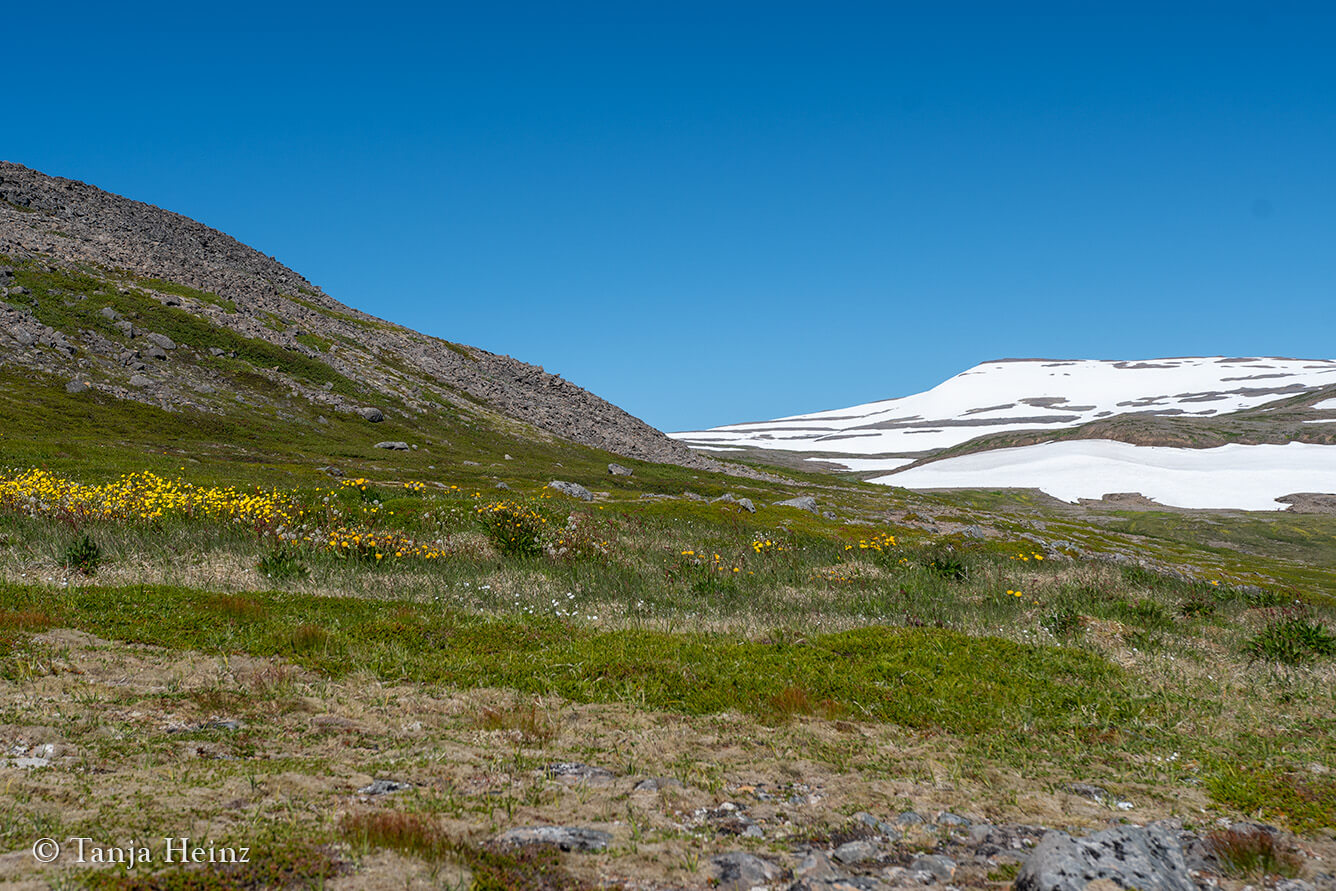
Therefore, I joined the other solo-traveller from the United States and we went on a hike in the morning after breakfast on our third and last day at the Kvíar Lodge.
Before we hiked up the hill, we took some time to photograph some of the wild flowers we encountered the other day.
We saw quite many alpine bistorts (Bistorta vivipara, above on the left), wood crane's-bills (Geranium sylvaticum, above on the right), meadow buttercups (Ranunculus acris, below on the left), or cuckooflowers (Cardamine pratensis, below on the right).
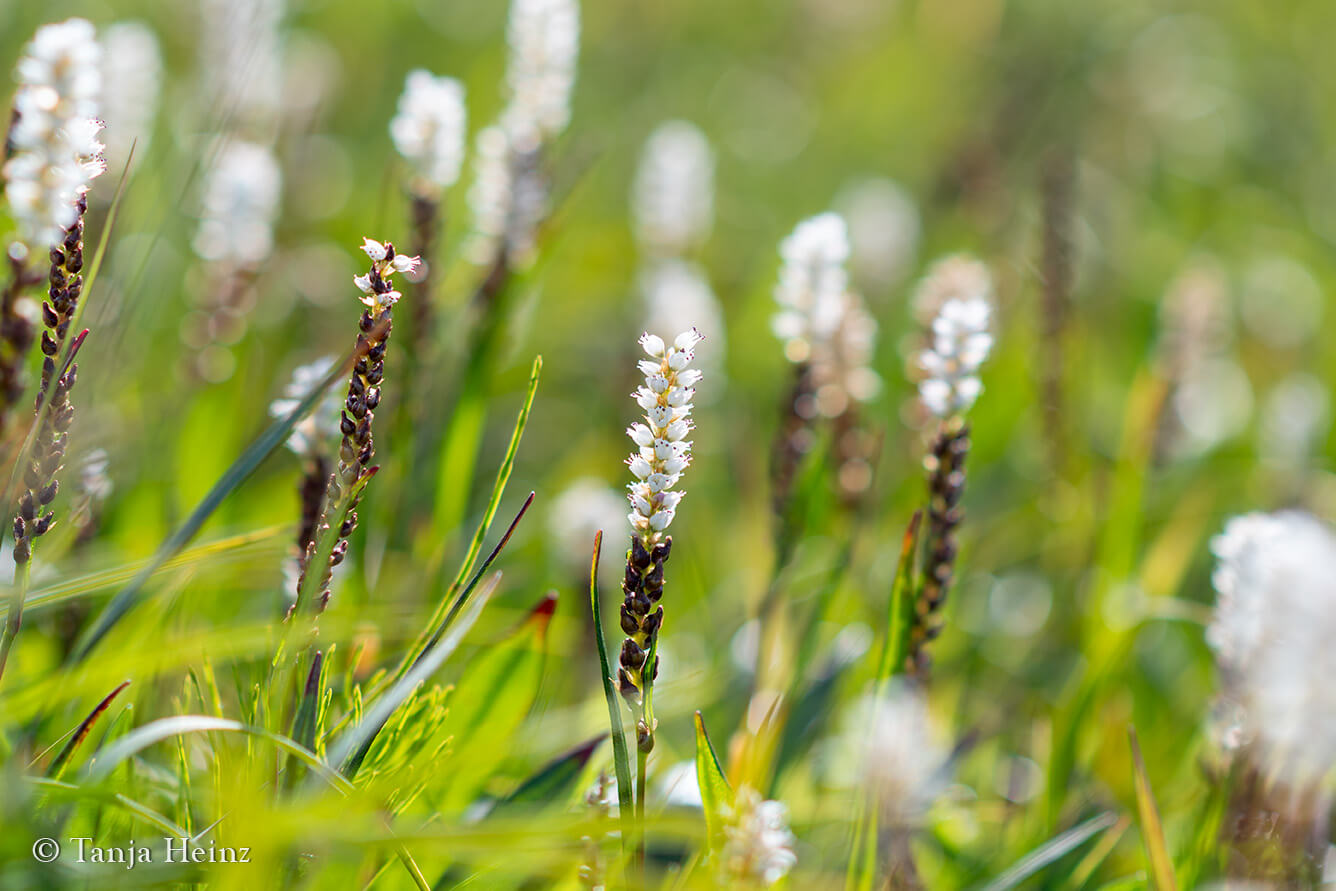
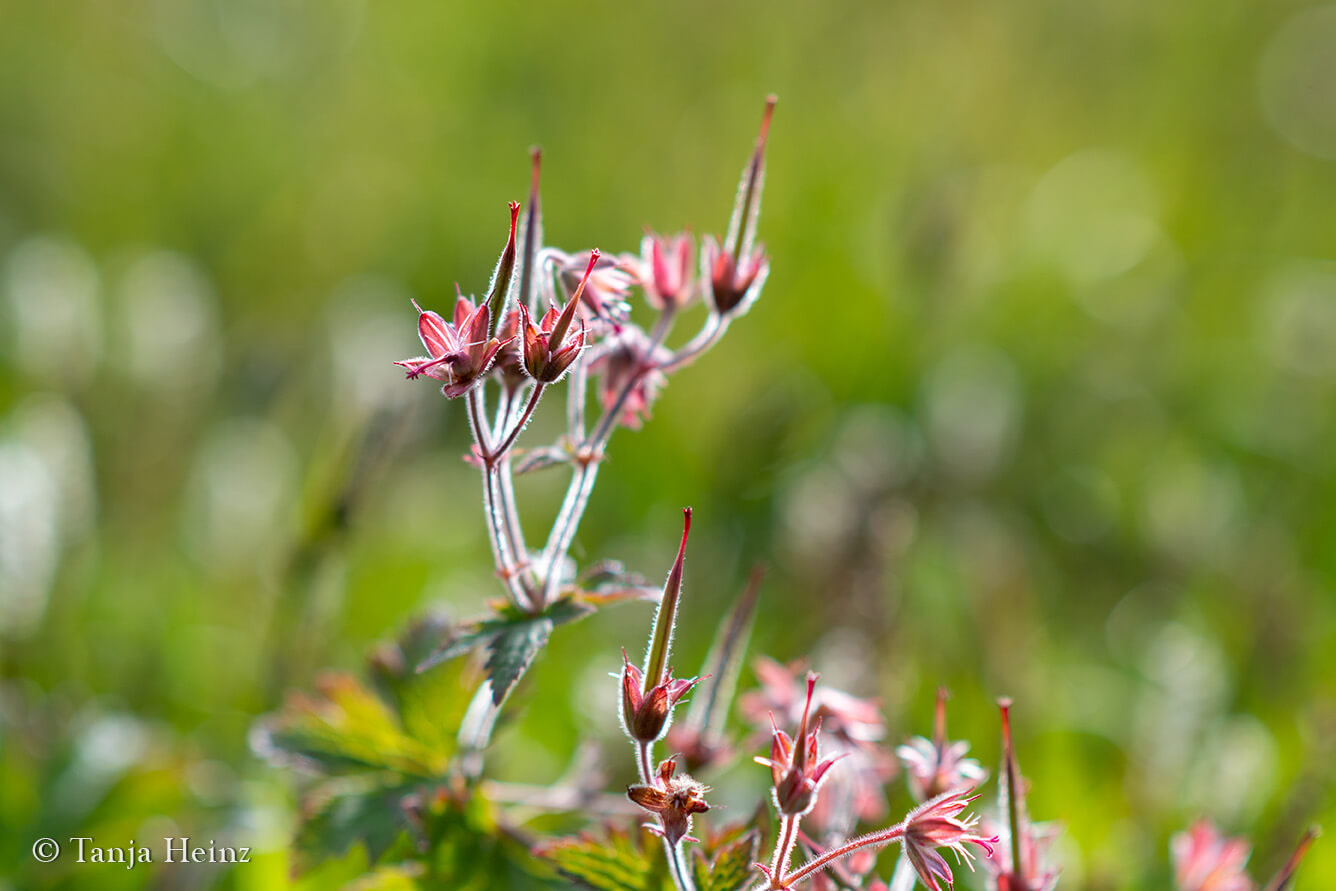
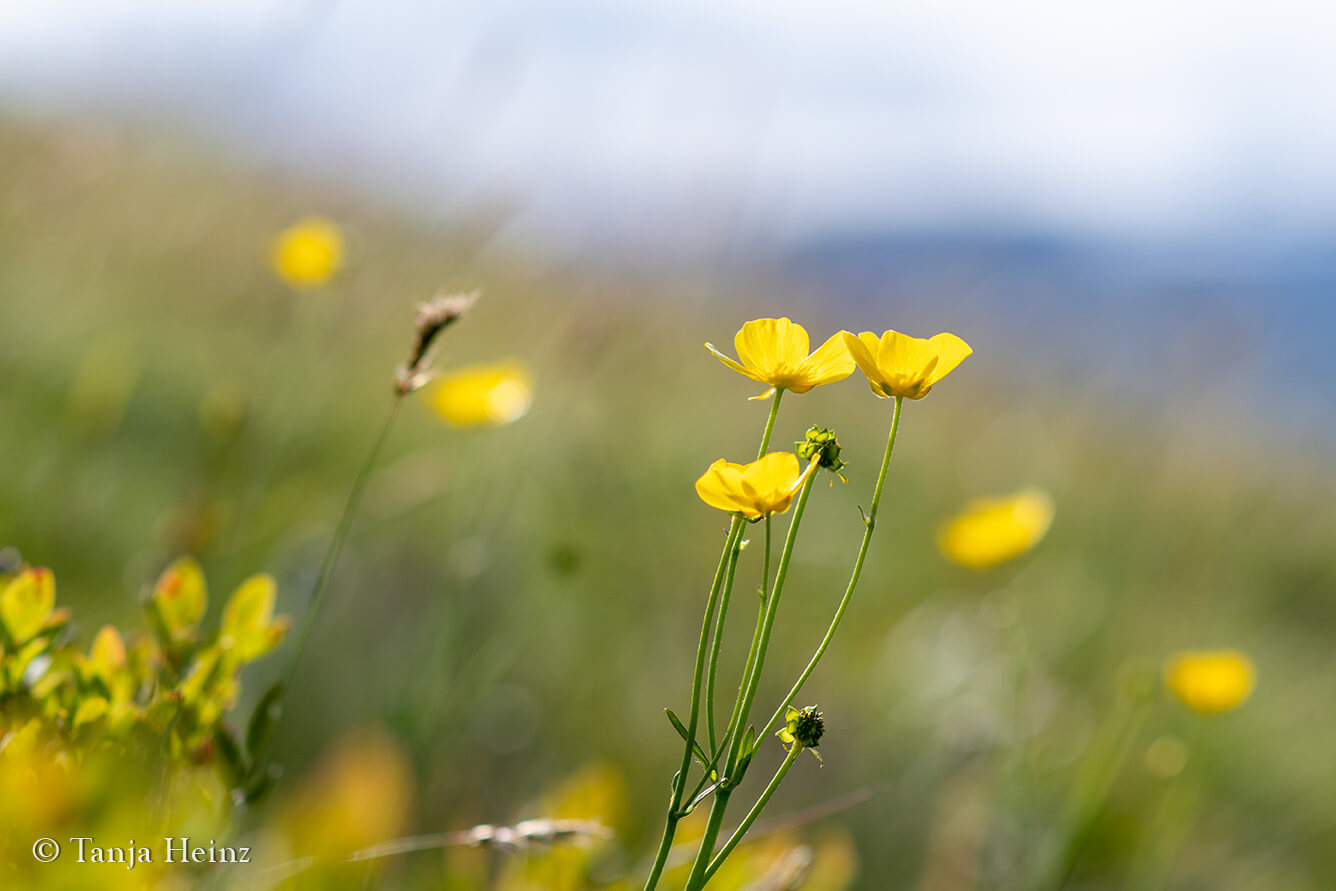
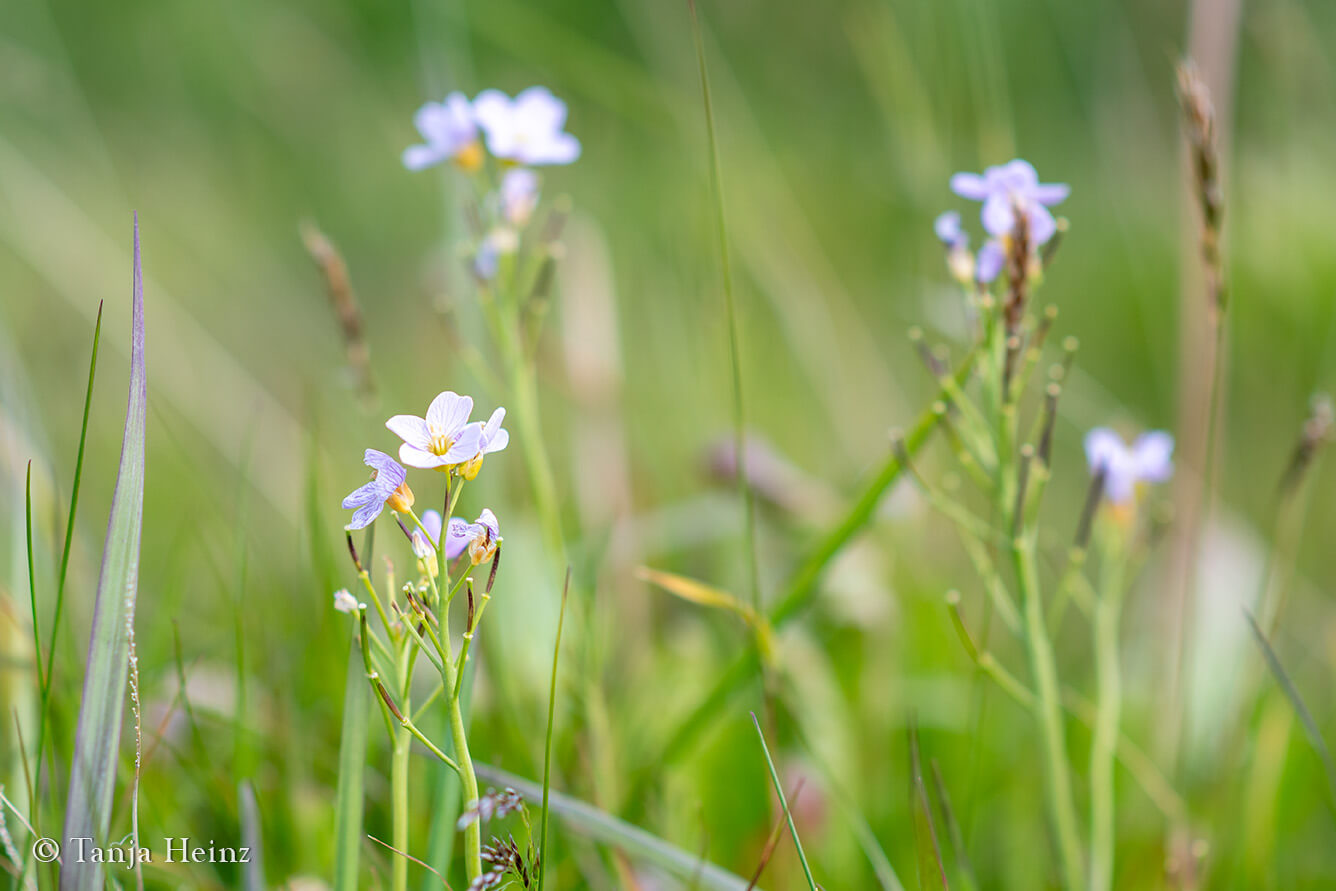
Between the buttercups we saw velvetbells (Bartsia alpina, on the left). Here and there we saw common cotton-grass (Eriophorum angustifolium, on the right).
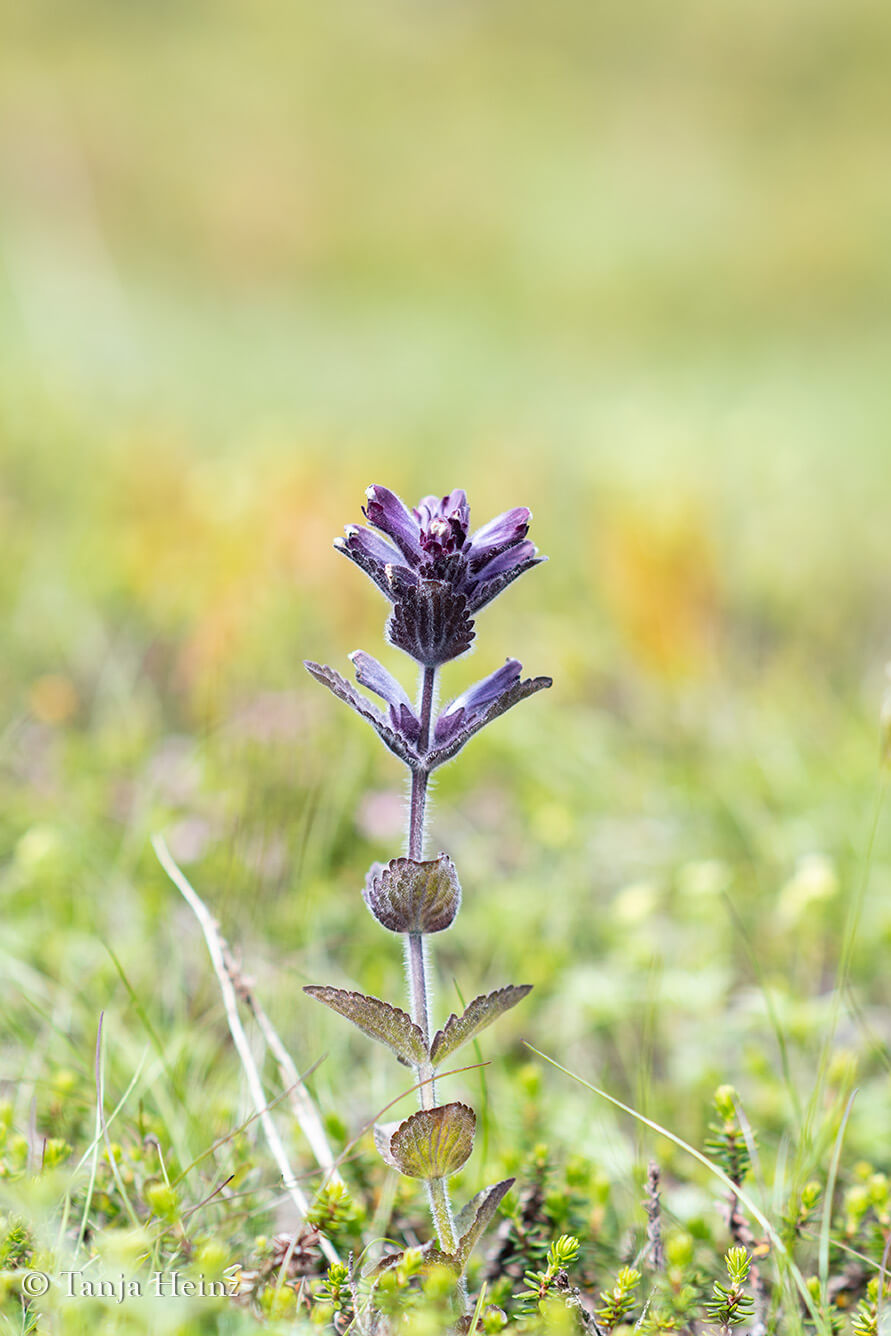
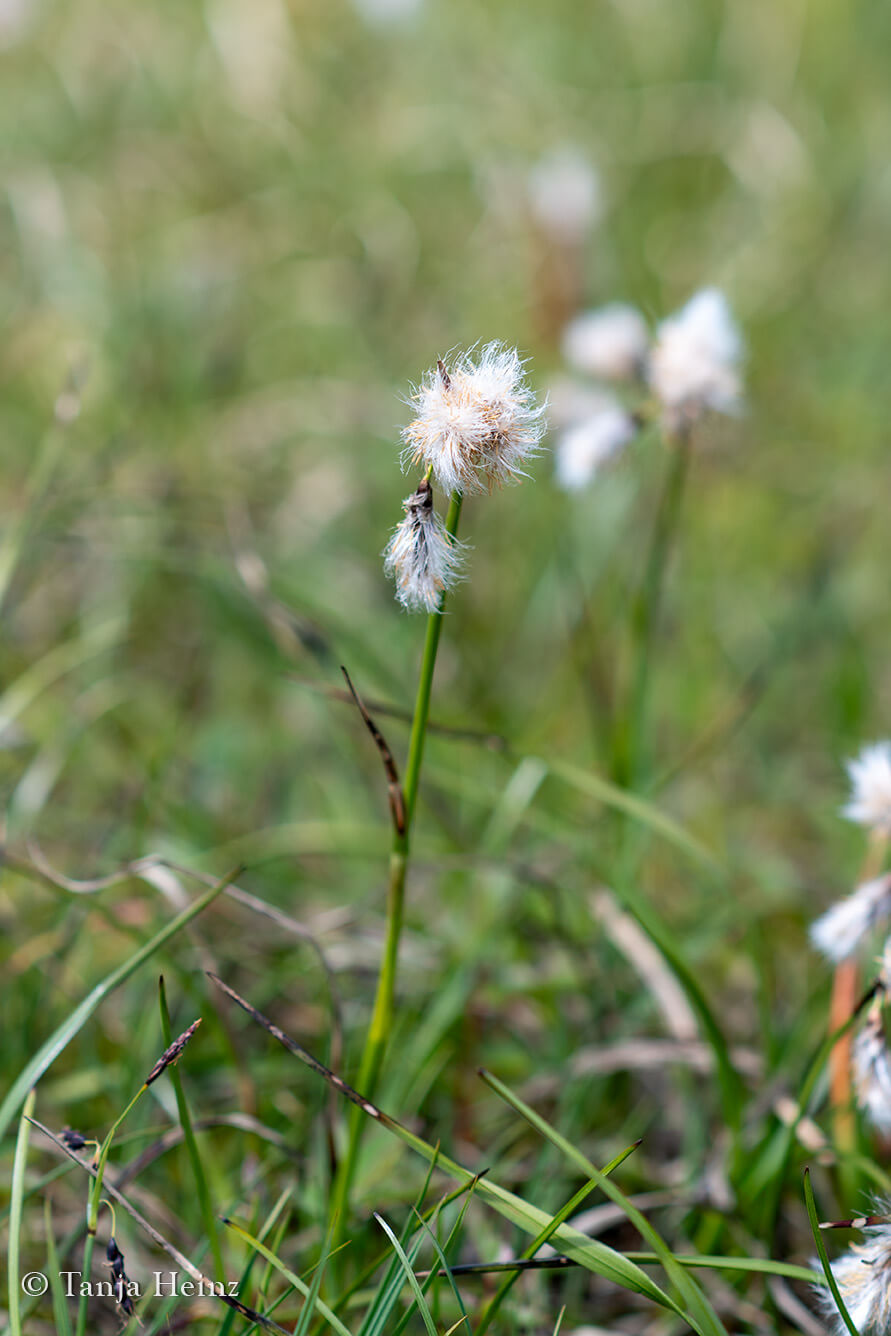
That time we had no plant expert with us.
But I remembered two different plants. Both were orchids.
On the one side, there was the heath spotted orchid (Dactylorhiza maculate, on the left), and on the other side, there was the frog orchid (Dactylorhiza viridis, on the right).
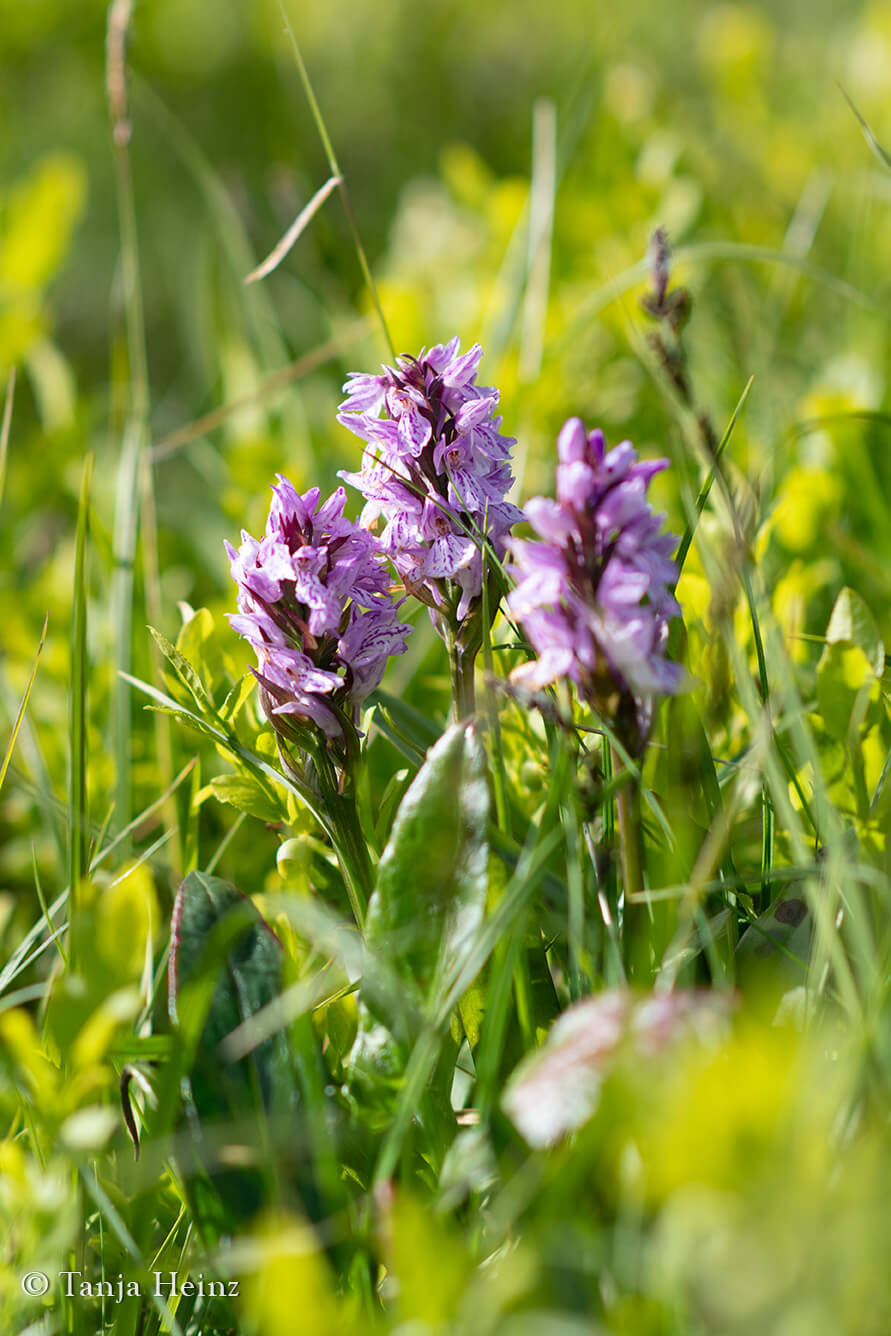
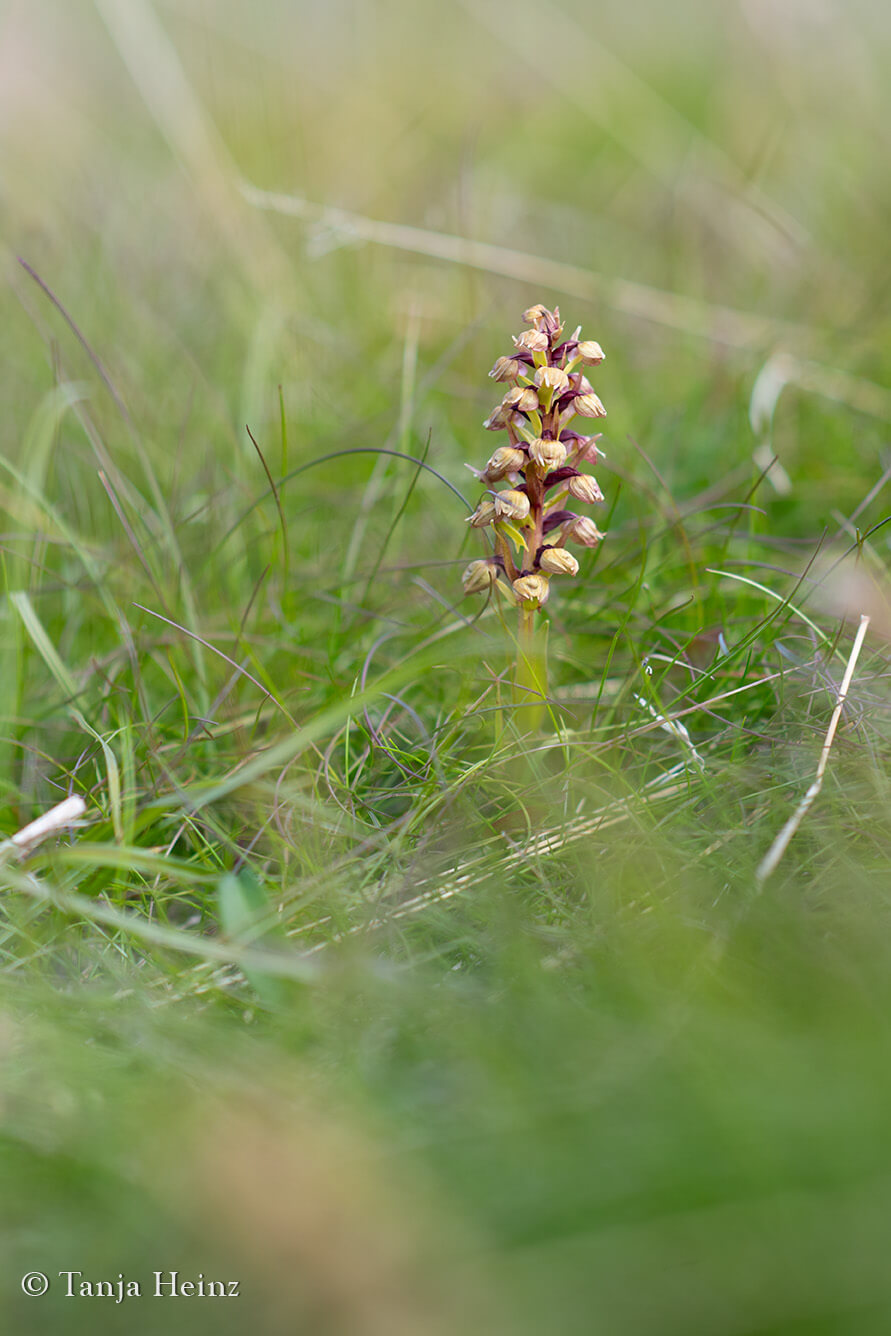
Further up we did not encounter that many different species. However, we still saw some new plants.
We saw English wild thyme (Thymus praecox britannicus, above on the left) and eight-petal mountain-avens (Dryas octopetala, on the right).
I very liked the Arctic willow (Salix arctica, below on the left). She was so beautiful.
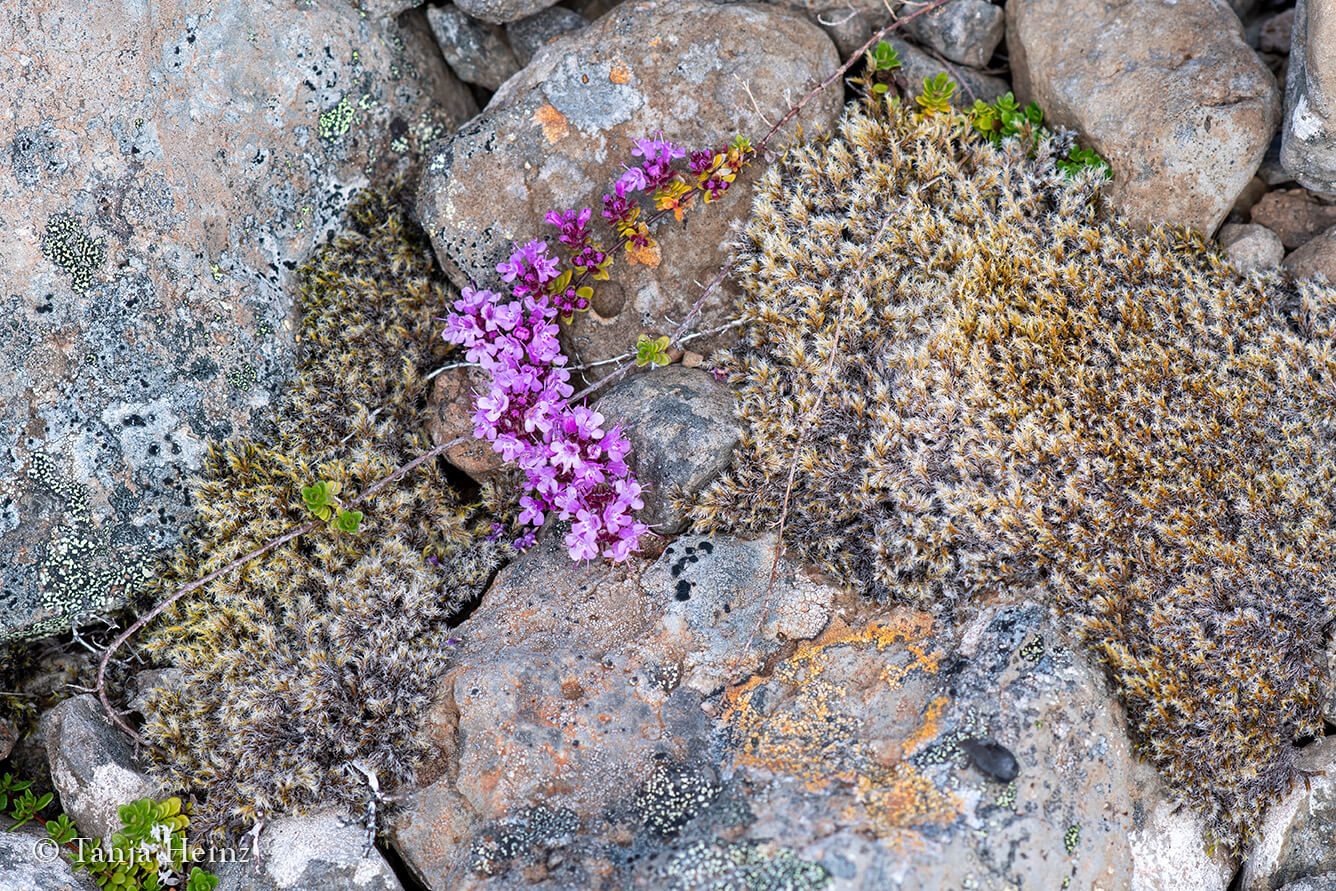
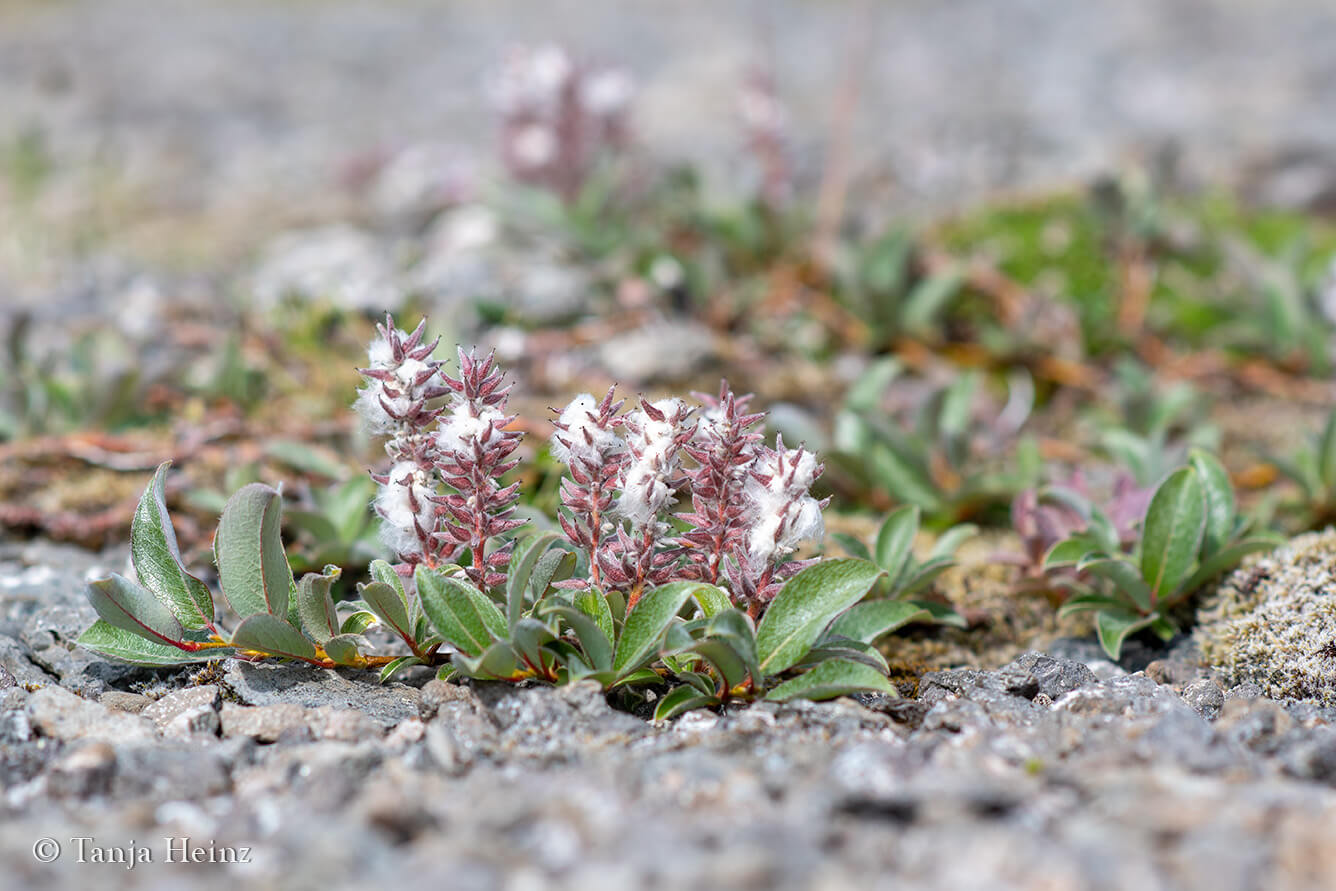
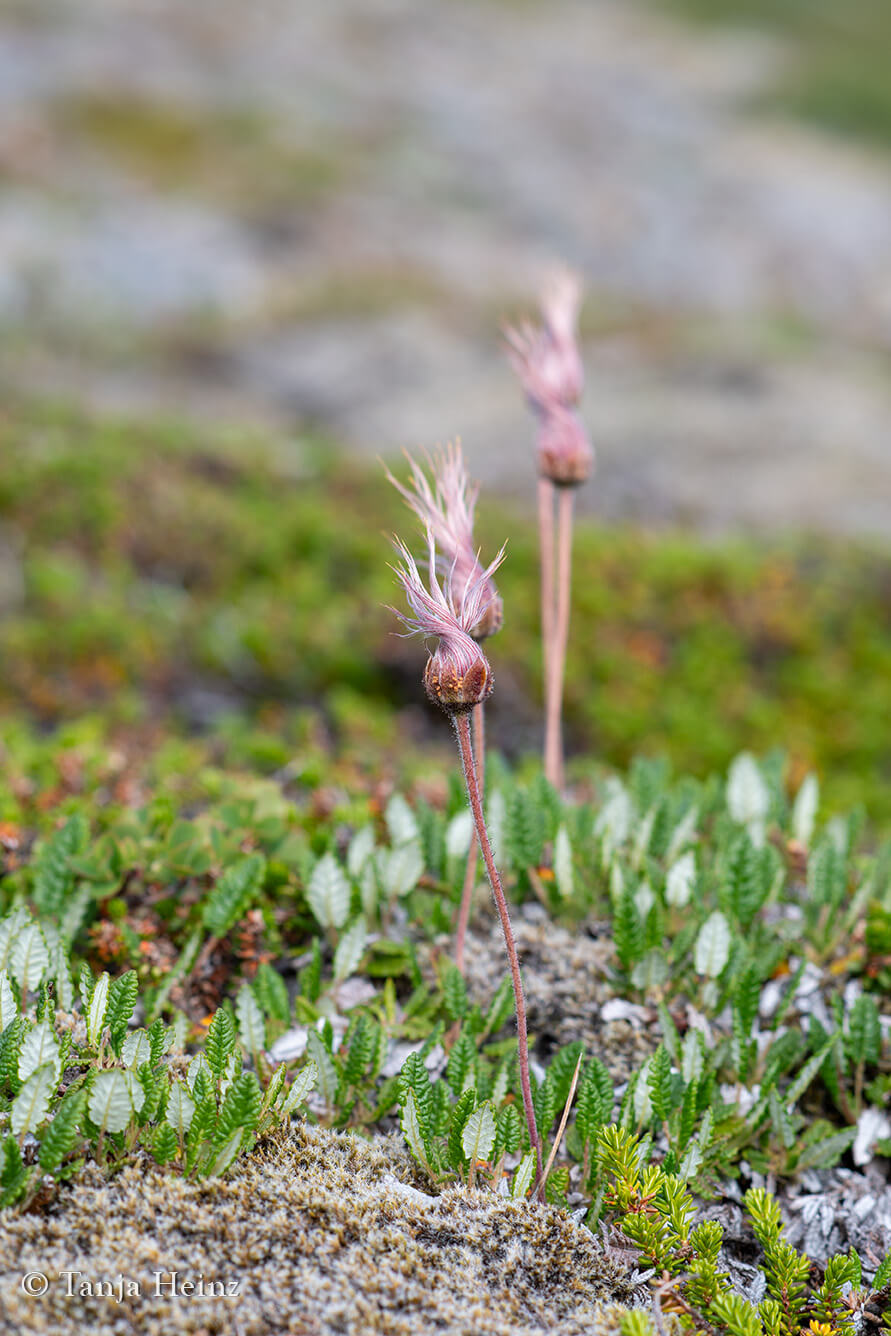
It was just so special to see all these treasures on a meadow in the Hornstrandir Nature Reserve.
There was no specific path where we were hiking. But further up it became rockier and we had to walk mainly on stones.
From time to time, we saw a landmark.
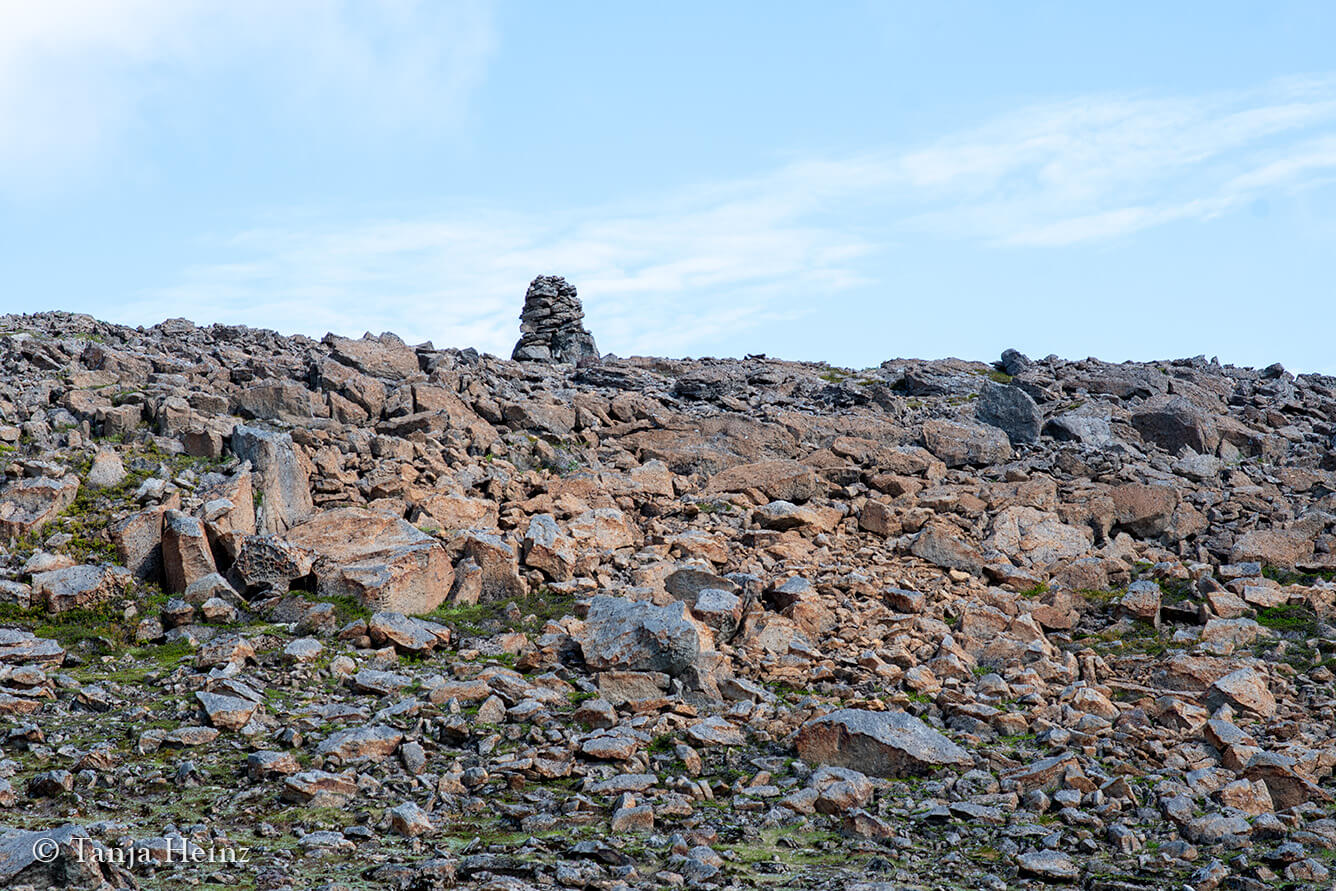
Even in that rocky area we spotted plants at few places.
For example, we saw alpine azalea (Kalmia procumbens, on the left) and alpine sorrel (Oxyria digyna, on the right) further up the hill.
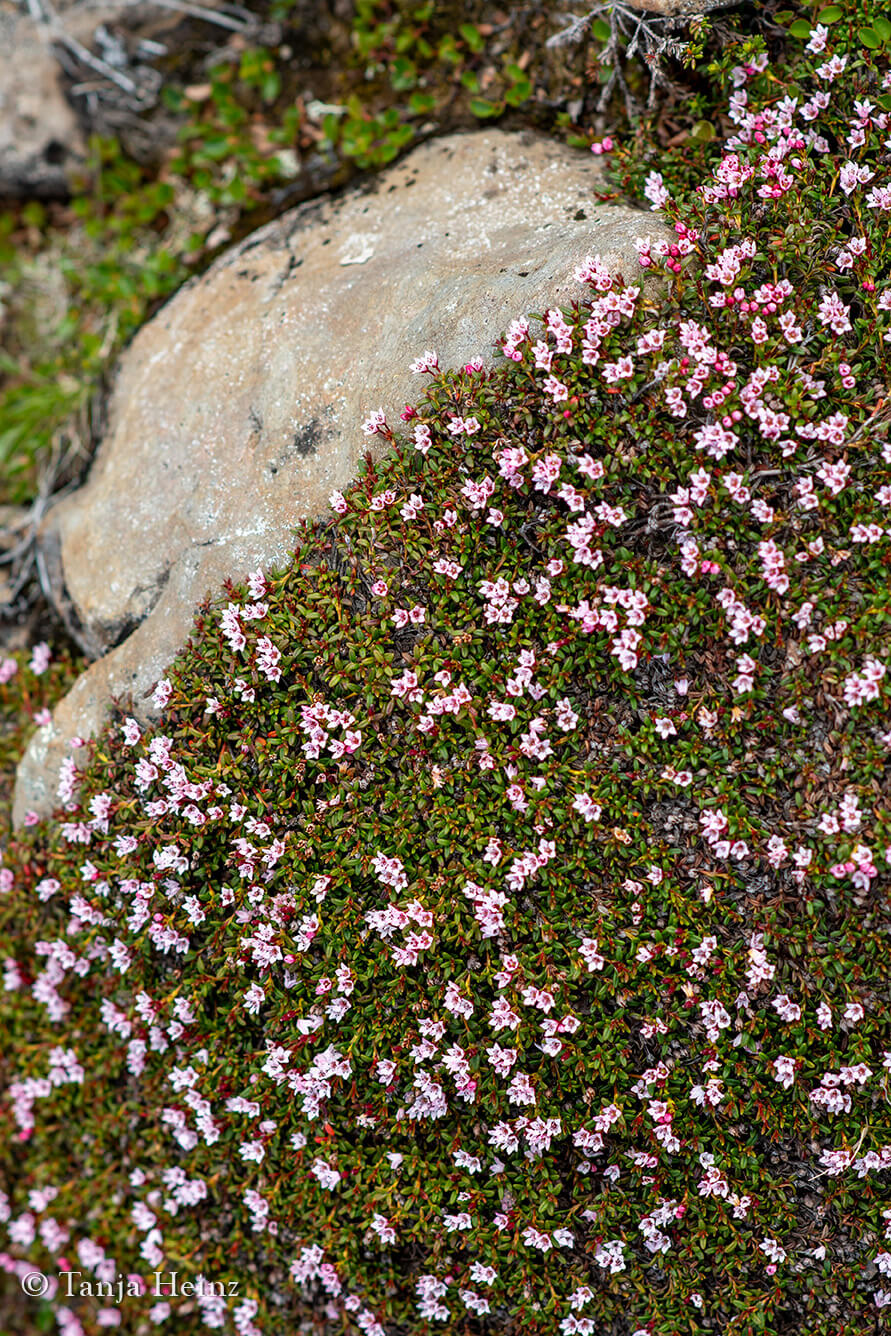
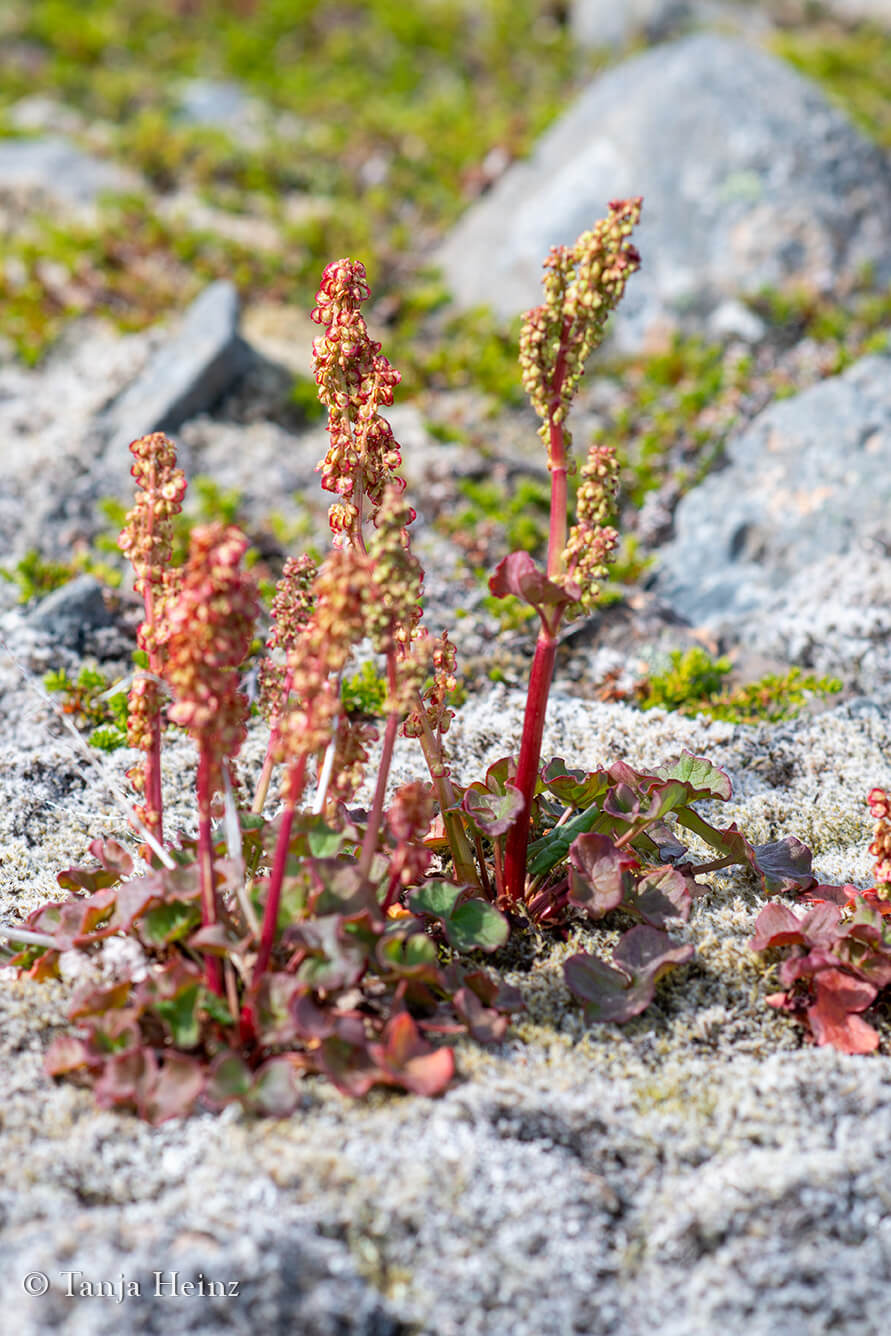
The hills, however, seemed to be eternal. After reaching the top of one hill which we thought was the final top, the path in front of us led to another top of another hill.
We were without a map and we did not check any before. So, we did not really know if there was a near end. We passed one landmark after the other.
We still saw the Kvíar Lodge, however, after continuing our hike, we even could not see the farm house anymore.
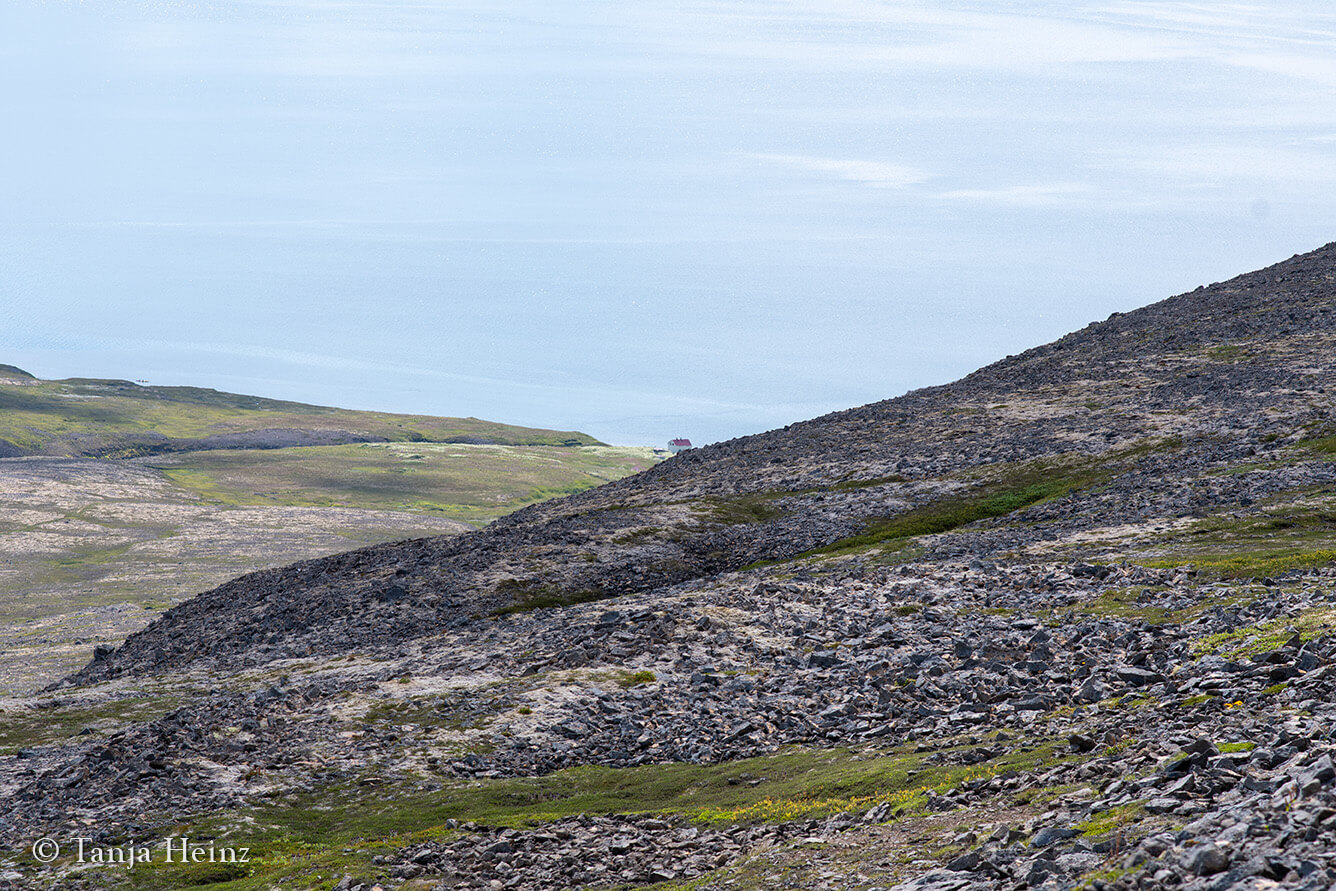
Although it seemed to have been an endless hike, I very admired the spirit of my American companion. She was already over sixty, but so athletic, optimistic of reaching the final top at the and of one hill, and still careful. She was an experienced hiker.
I felt very good to be surrounded by such a positive aura.
And of course, the landscapes were incredible again from that height.
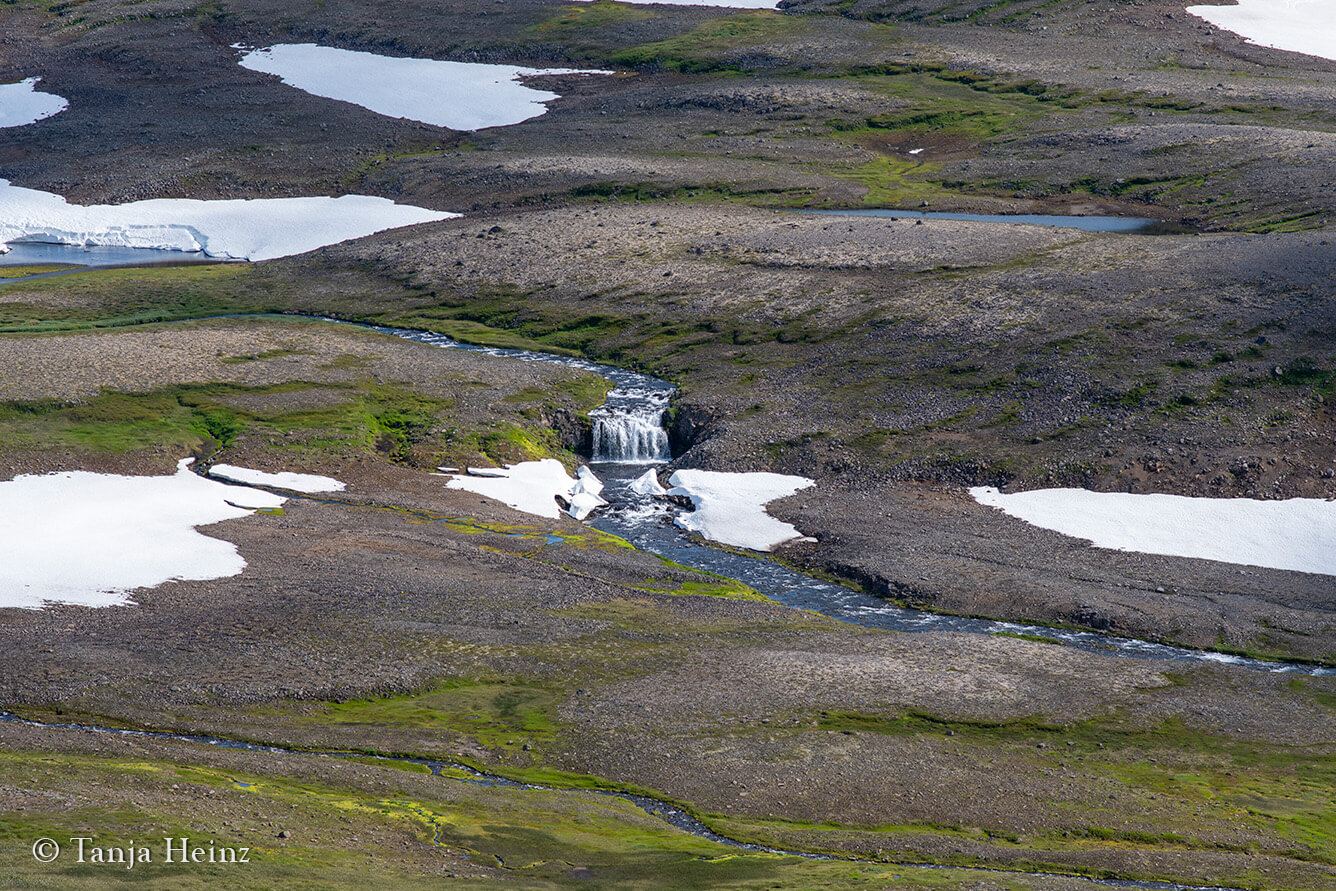
Although we really wanted to reach the top of the hill, we finally decided to turn, because it was almost midday and we still had to hike back quite a far distance.
Furthermore, hiking down was not everywhere possible and we had to change the direction. But this was no problem.
This was my last hike in the Hornstrandir Nature Reserve. And again, we did not see any Arctic foxes. In the next paragraph, however, I will finally write about the Arctic foxes I encountered in the Hornstrandir Nature Reserve.
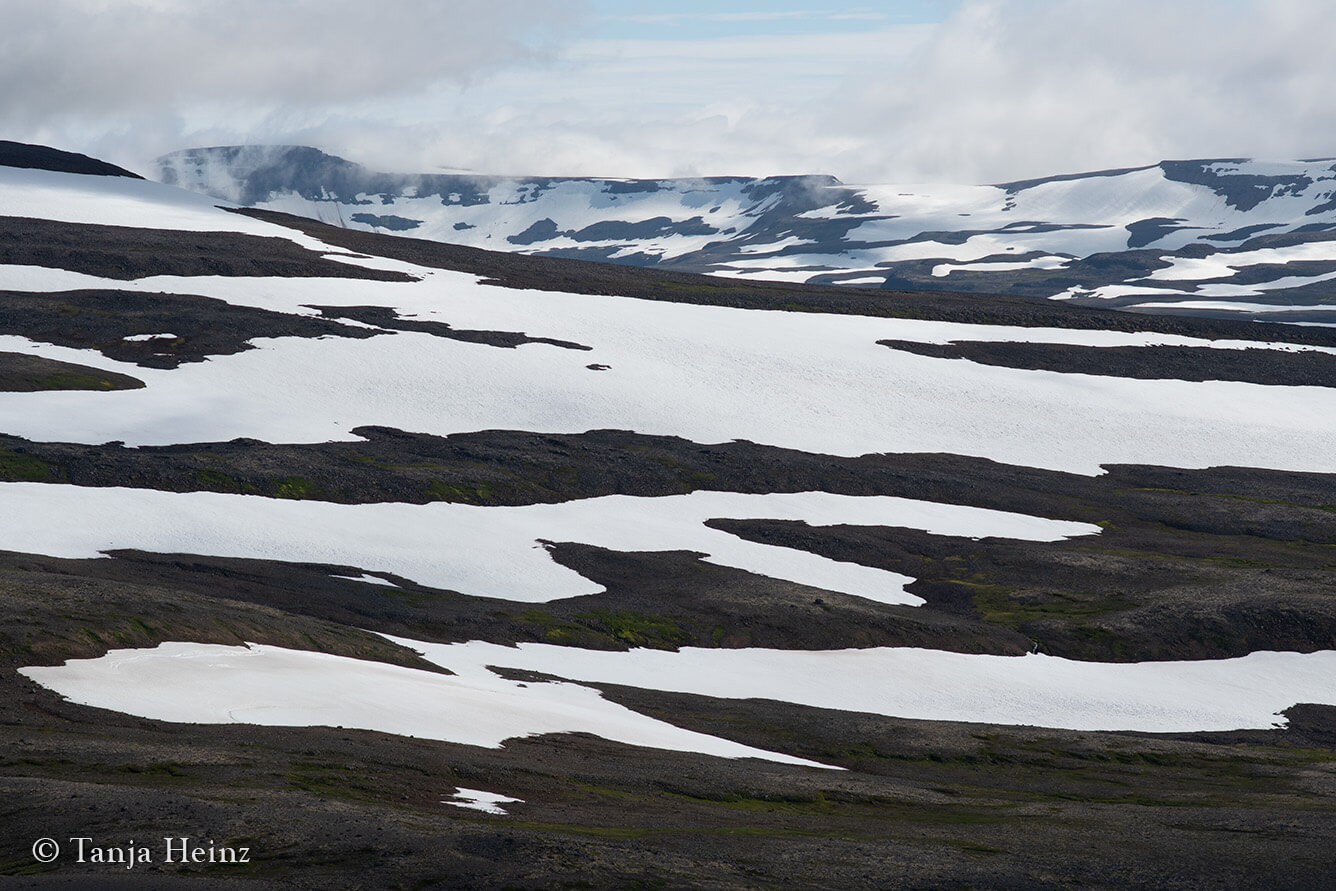
Information: I was in the Hornstrandir Nature Reserve for three days and I think it is worth to decide for a three-day tour. However, it is also possible to go for a hike just for one day without sleeping in the nature reserve. Please check the options of Borea Adventures on their website if you decide to join a tour.
Arctic foxes in the Hornstrandir Nature Reserve
The Hornstrandir Nature Reserve is a very special place for Arctic foxes.
Arctic foxes were hunted in Iceland since the 9th century and are protected by a wildlife act only since 1994. Nevertheless, Arctic foxes still can be legally hunted throughout Iceland. Even cubs are allowed to be killed at their dens! Just in a few places it is prohibited to hunt Arctic foxes.
The Hornstrandir Nature Reserve is one of these places. In the Hornstrandir Nature Reserve it is prohibited to hunt Arctic foxes.
Unfortunately, we did not see an Arctic fox on one of our hikes, but instead behind the Kvíar Lodge. We saw our first Arctic fox after our first hike.

And there was a tiny Arctic fox! A cub!
We were all so excited to see the first Arctic fox in front of its den. The cub was far away, as we had to keep our distance. There was a fence around the den and we were, of course, not allowed to enter that area.
The Danish woman was equipped with a 600mm prime lens and she took beautiful photographs - despite the difficult light conditions and the distance. It was still far away to take photographs with a 600mm prime lens, but I very liked her photographs.
The tiny Arctic fox got up! I think the cub saw us.
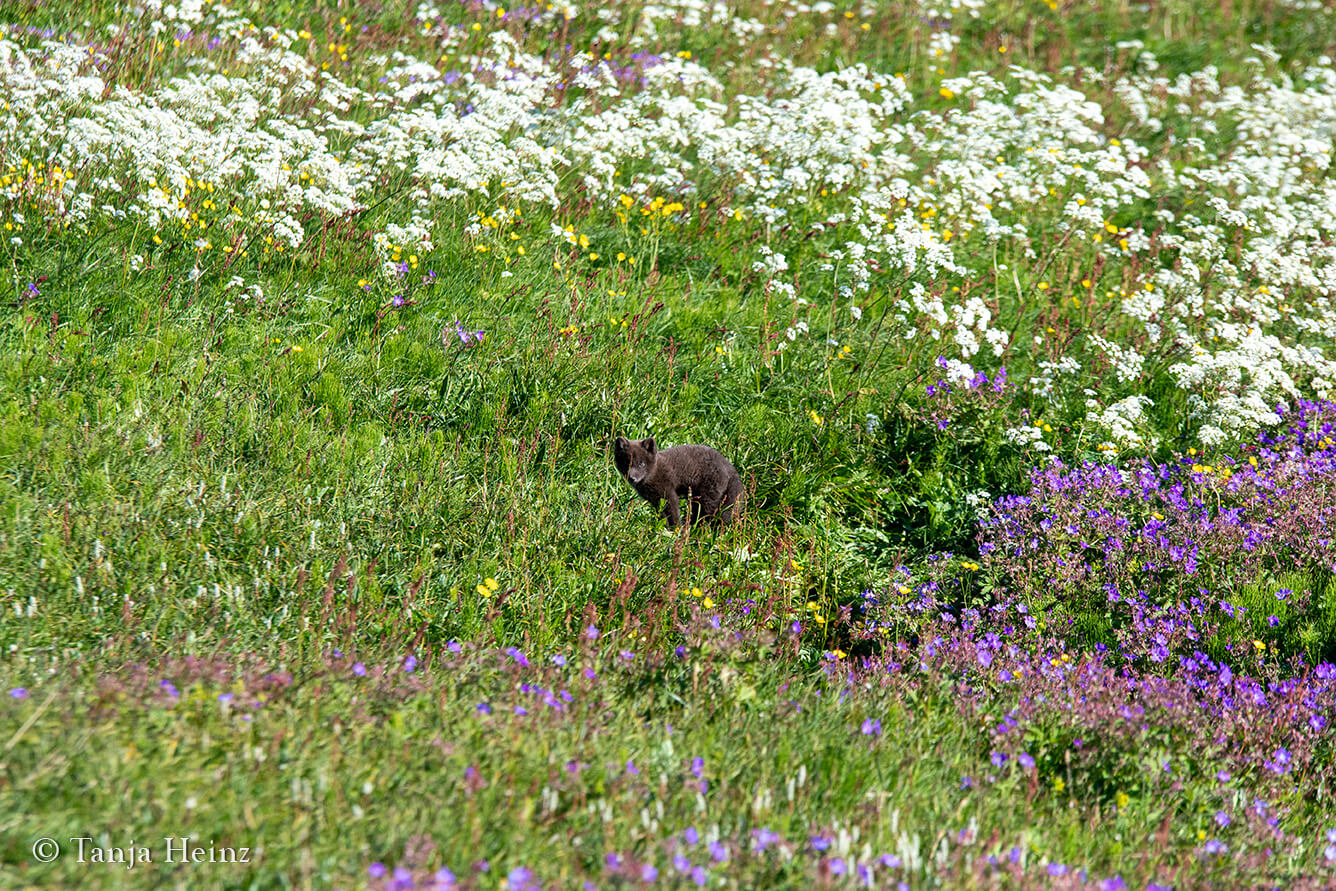
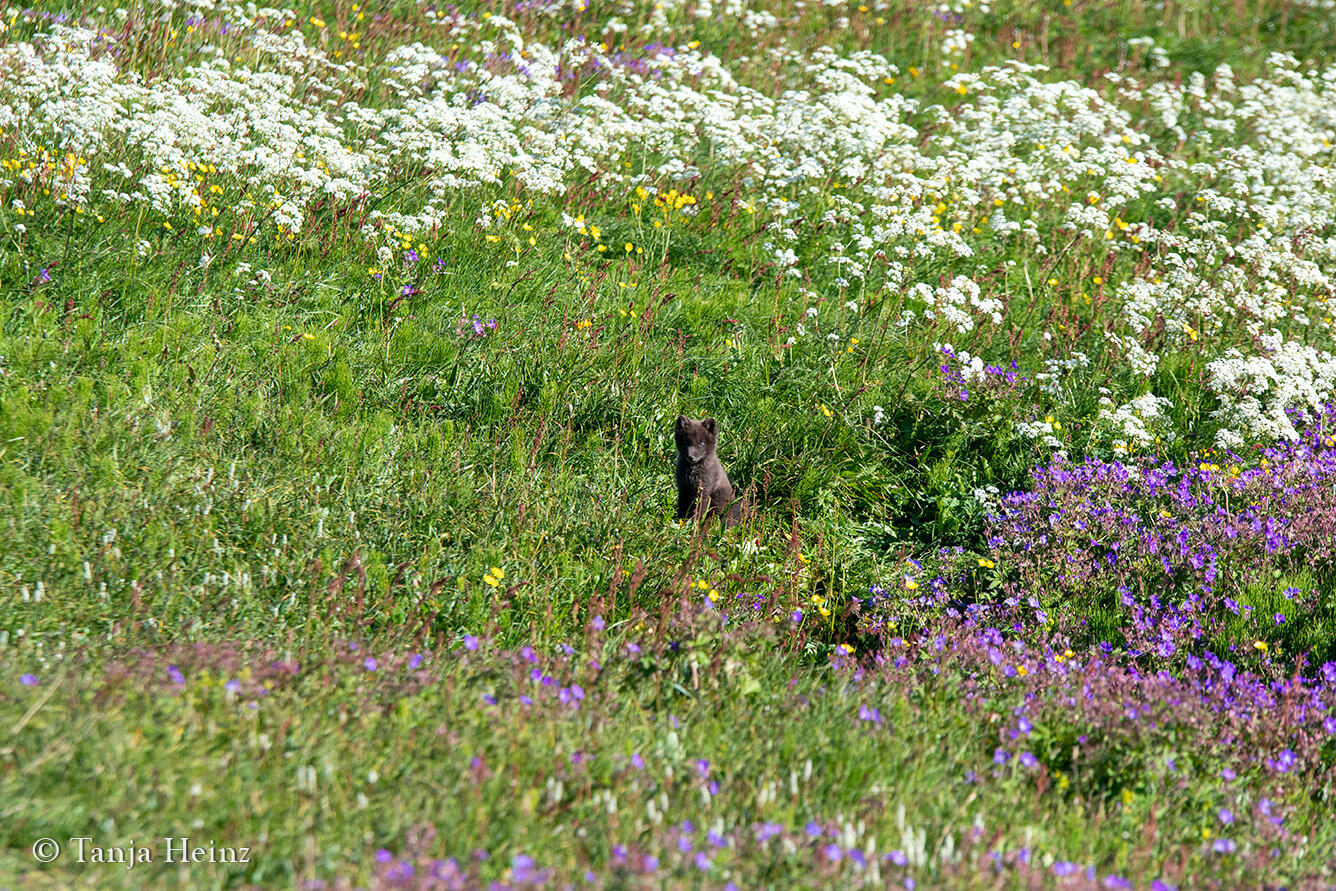
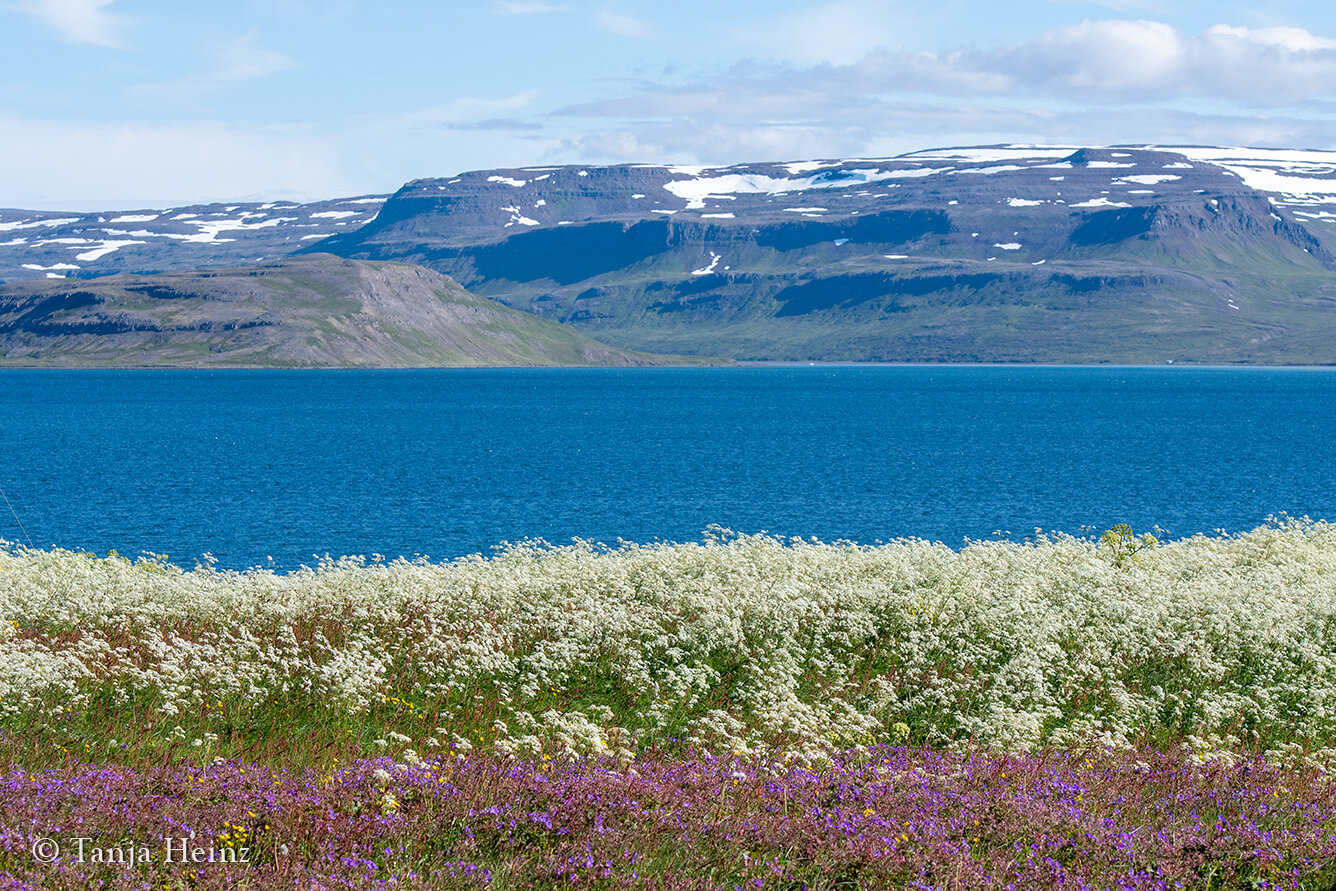
Were there more Arctic foxes around the den? Maybe there were and we just did not see them.
A den is a shelter for an Arctic fox. Typically, a female and her cubs share a den during the breeding season. This means, that during the breeding season males and females can be distinguished by the fur on the sides. While females lose their fur on the sides when she presses herself into the den, males do not, as they rarely go into the den during the breeding season.
In some areas it can be difficult for the Arctic foxes to make new dens like e.g., in the Westfjords. Therefore, many dens have been used by Arctic foxes for a very long time.
For how long have the Arctic foxes used the den behind the Kvíar Lodge?
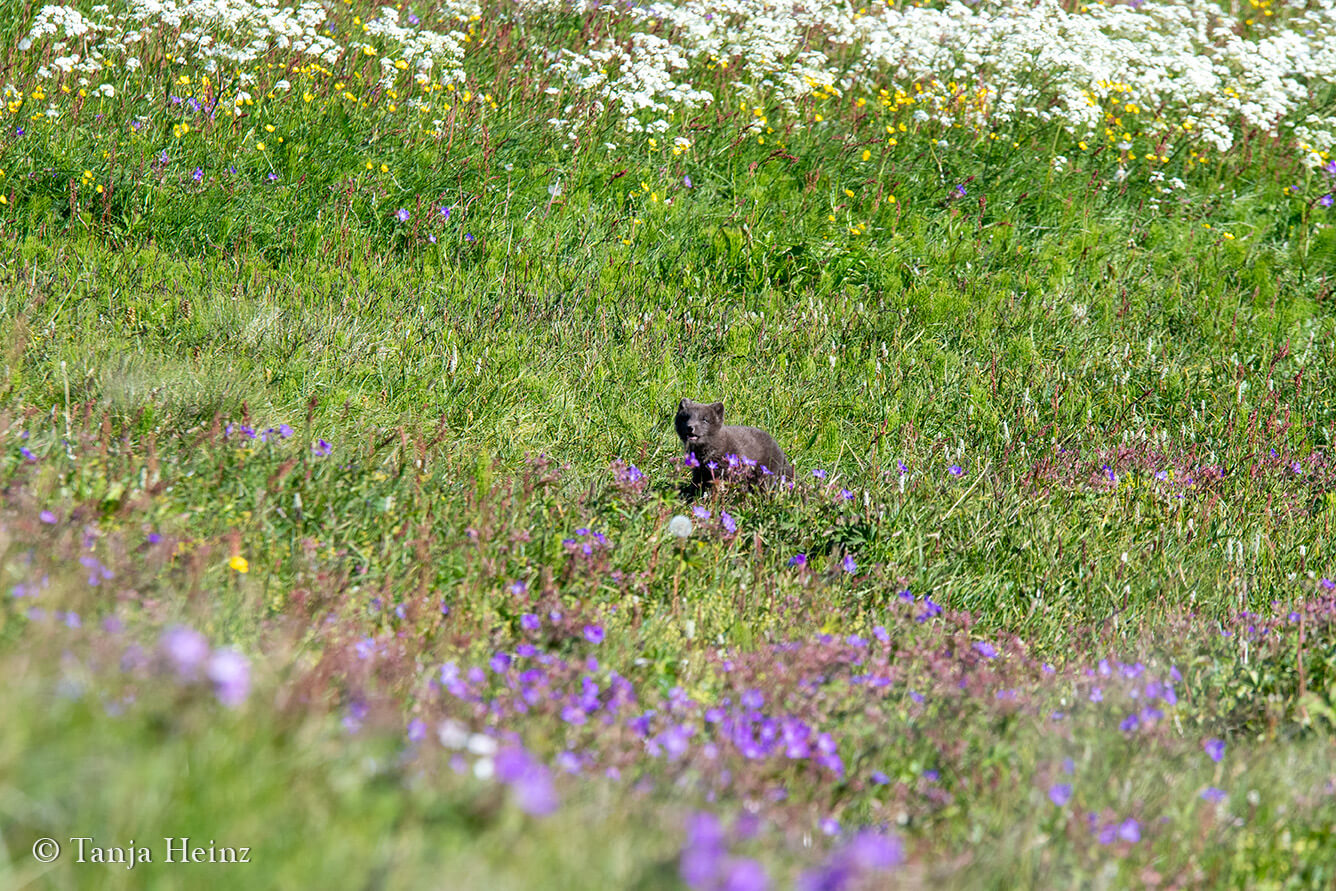
I cannot tell.
Thus, I just observed the cute little Arctic fox while it was not in the den.
Vixens usually give birth to their offspring in mid or late May. In the first 3 to 4 weeks, they feed on milk and stay inside of the den. After the first weeks, cubs move outside the den and begin to feed on solid food. Both females and males bring food to the den. Sometimes, one-year-old females of the previous year may help feeding the new cubs.
As I was at the Kvíar Lodge in mid-July, this Arctic fox might have had an age of about two months.
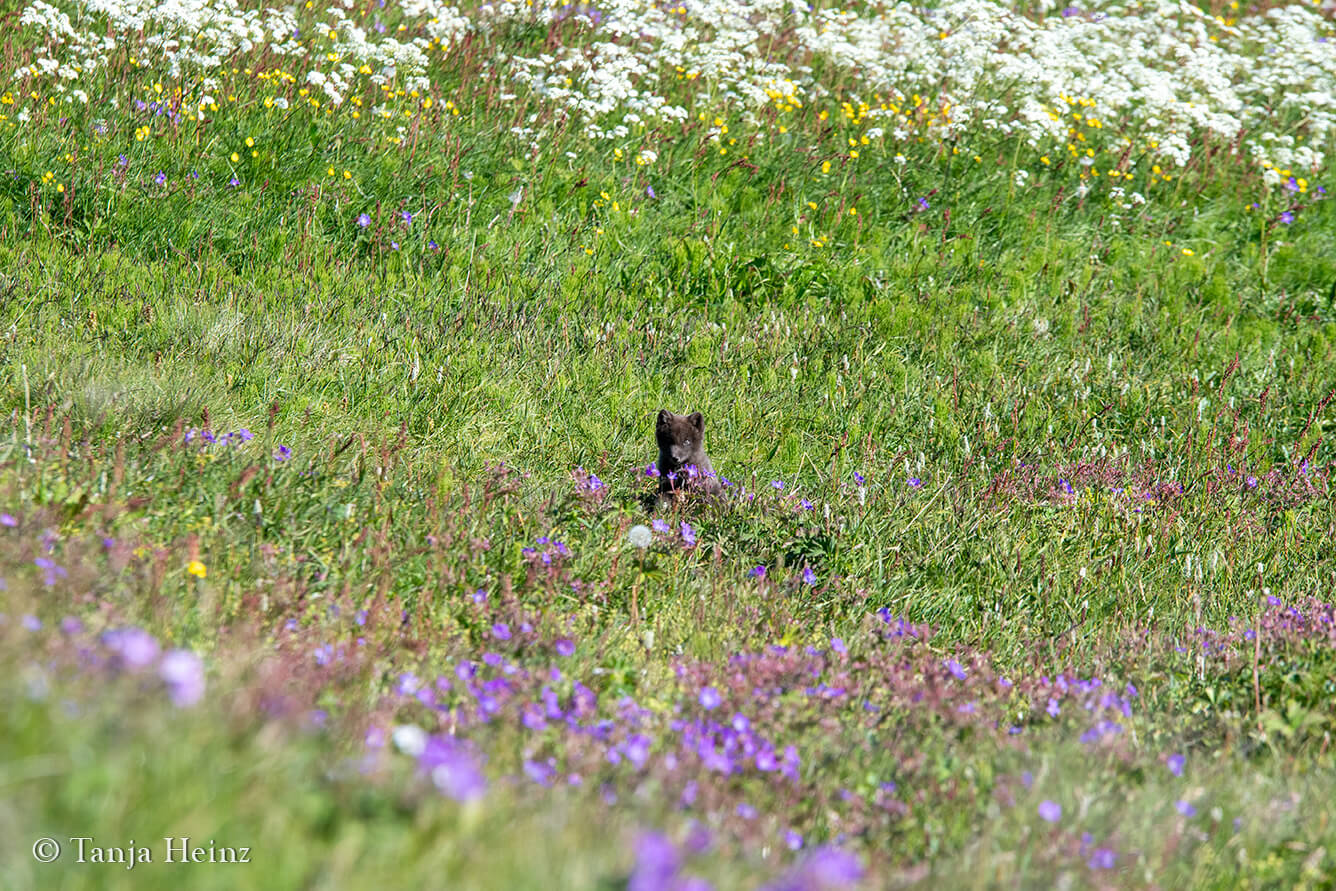
Interestingly, Arctic foxes breed annually in Iceland, while in other areas like in Scandinavia, Greenland, Alaska or Canada, Arctic foxes might breed only every 3-5 years, depending on their food source – the lemmings. When lemmings peak in numbers, Arctic foxes are extremely fertile while in other years, when the number of lemmings is low, only few Arctic foxes manage to breed successfully. In these regions litters of 18-20 cubs are normal.
Thus, there are good chances to see Arctic fox cubs every year behind the Kvíar Lodge in the Hornstrandir Nature Reserve.
The Arctic fox in Iceland is a generalist and feeds on various food sources, mainly on birds.
In winter, food is scarce, but Arctic foxes are adapted to these seasonal fluctuations. They even catch surplus food for eating later.
They also feed on crustaceans and small fishes. Even crowberries, moth larva and honey bees were already found in the stomachs of Arctic foxes.
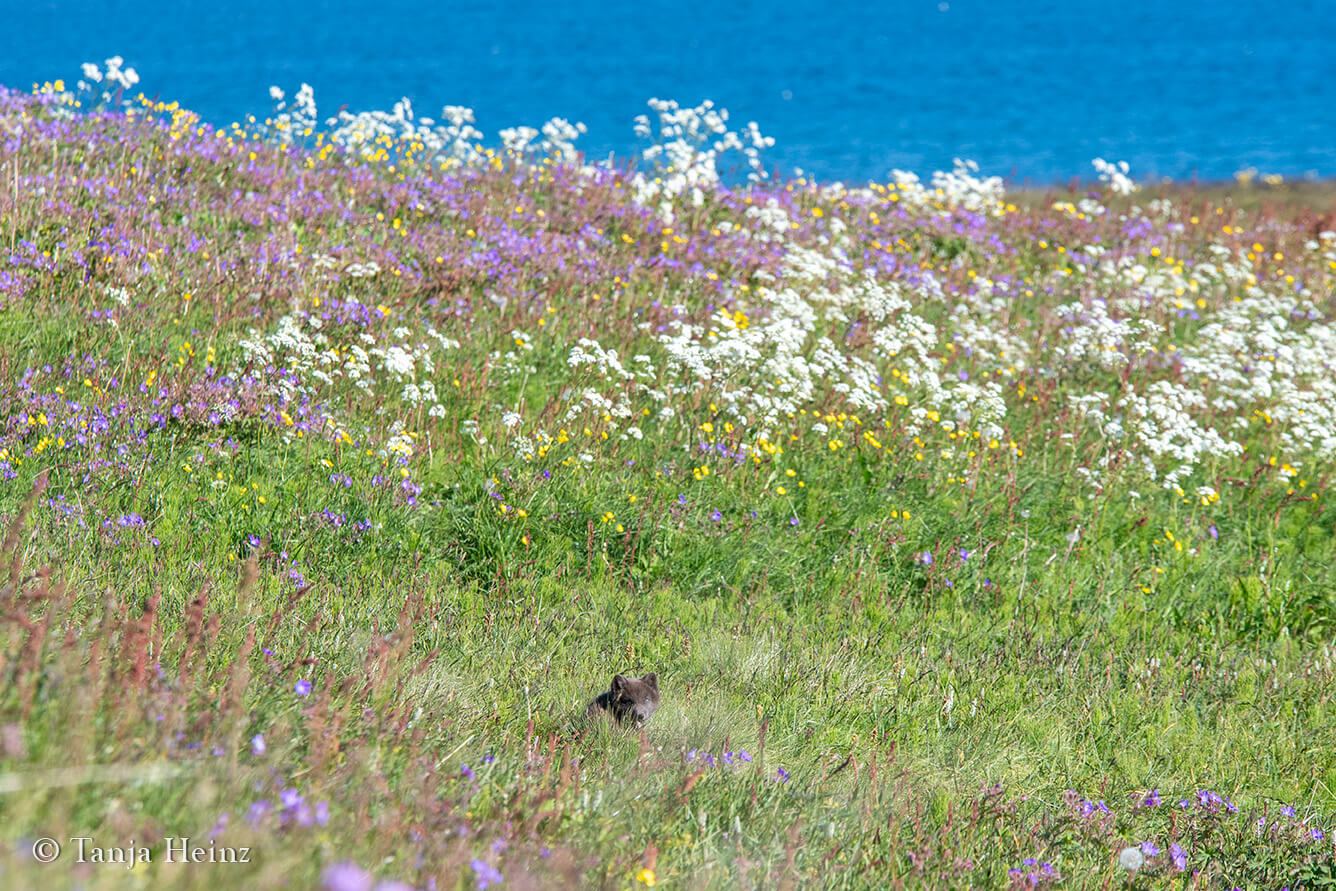
Interesting: Did you know that some Arctic foxes in the Westfjords have purple bones? It is still not exactly known why this is the case and no exact scientific research has been done so far about this topic. One reason might be, however, the shell of mussels that Arctic foxes ingest with their food.
The Arctic fox in the meadow was walking around, but not approaching. The cub was not that curious.
It was a warm afternoon. Was it already too warm for the Arctic fox?
Arctic foxes have one of the thickest and best insulated furs in the animal kingdom, and thus, are perfectly adapted to the cold environment. They molt their fur in spring, but they do not sweat when its warm.
Instead, they pant with the mouth wide open to cool down.
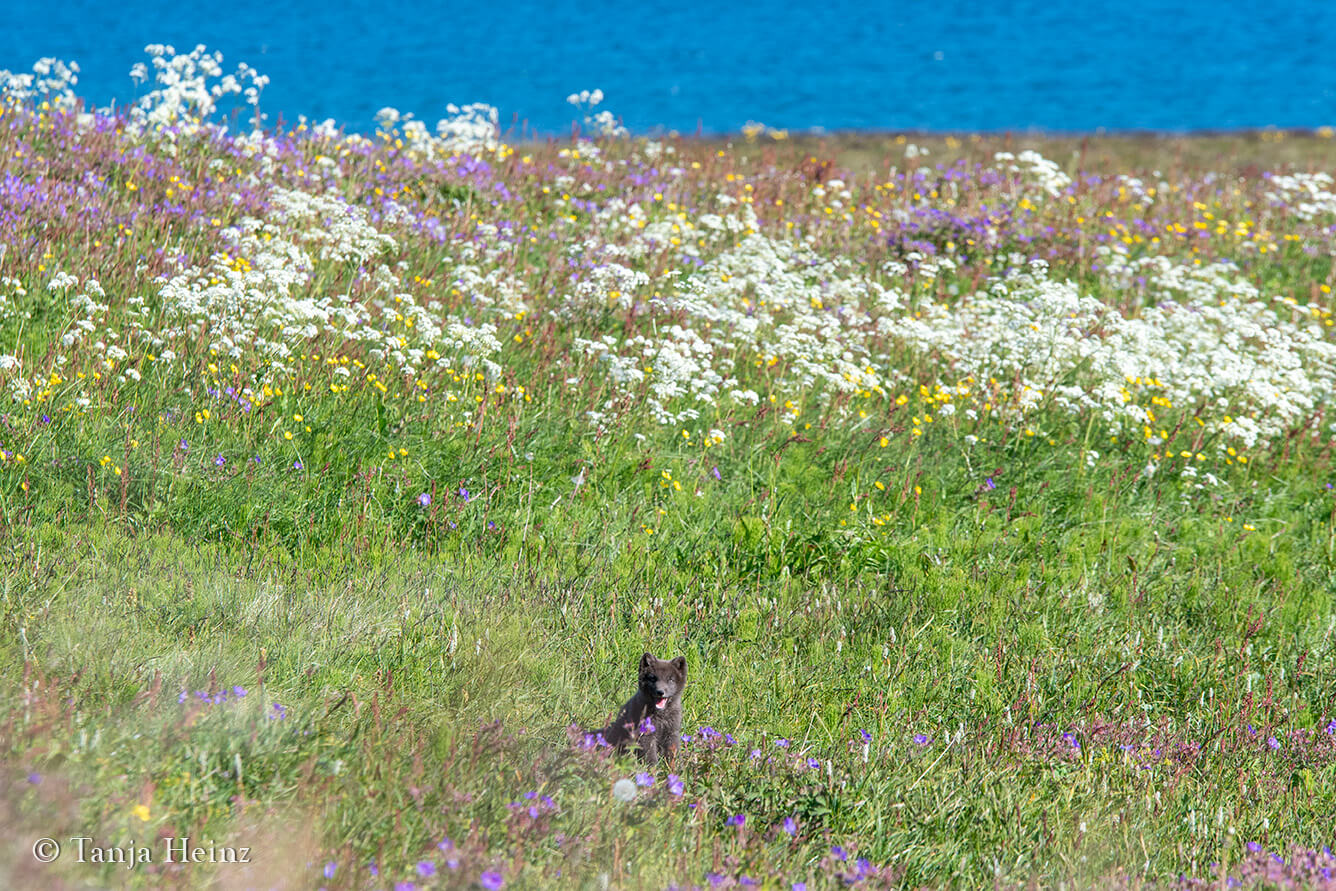
The Arctic fox cub seemed restless. In one moment, it sat down. And in the other moment, it got up again and walked around.
Were we the reason for its restless behaviour?
In the Arctic Fox Centre I learned that there has been done already research on the effects of tourism on Arctic foxes. In that research it was observed that Arctic foxes were negatively affected by the presence of tourists at some dens. Therefore, it could be possible that we were the reason for its restless behaviour. And thus, to mention it again, it is especially important to follow the rule of conduct. In our case, we had to stay behind the fence and keep a great distance to the den.
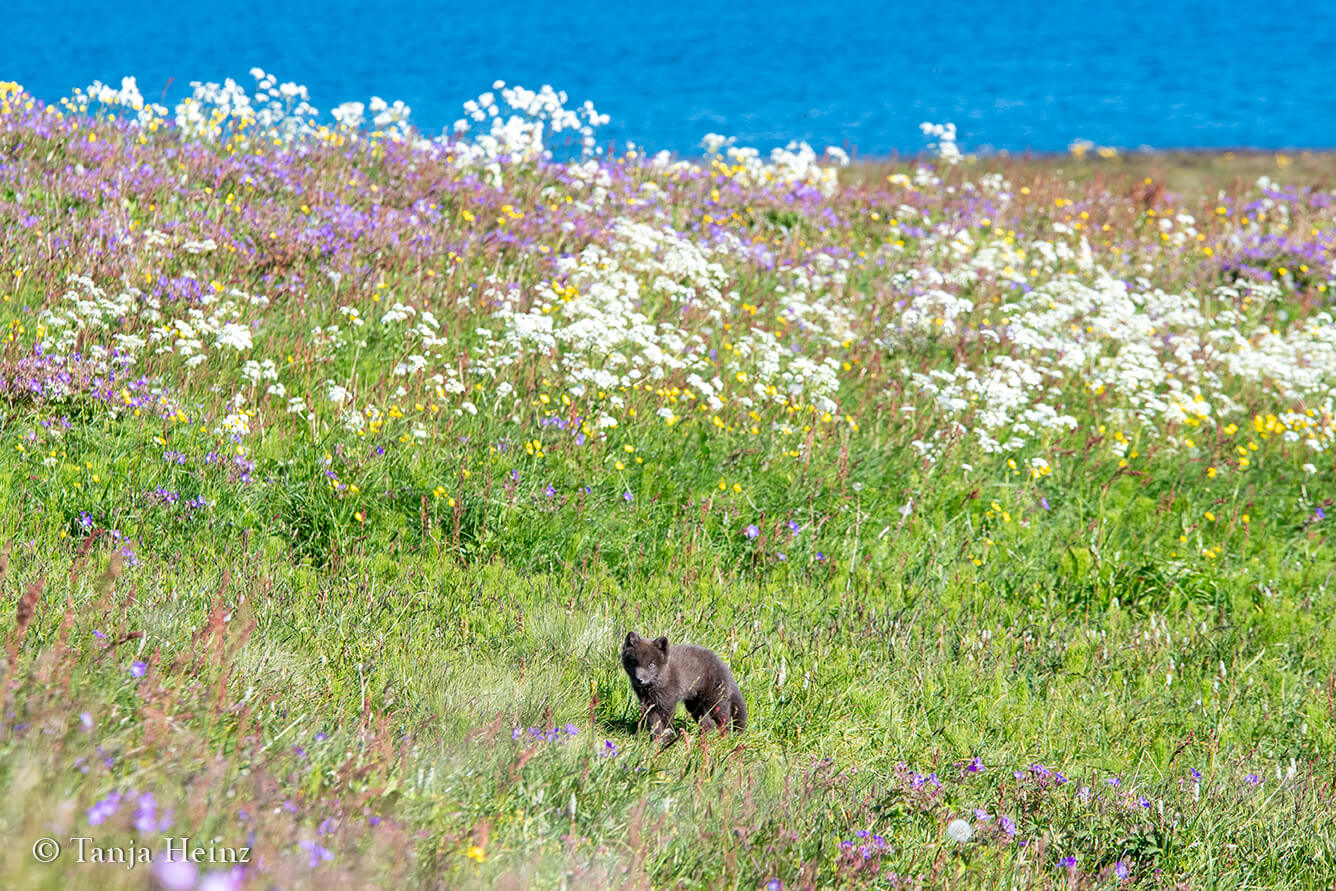
After some time, the Arctic fox began to bark. What did that mean? Was it because of us? Or did it bark for its brothers and sisters? Or its parents?
Well, we could not tell. But in the Arctic Fox Centre I learned that Arctic foxes mark the borders of a territory by scent marking and barking.
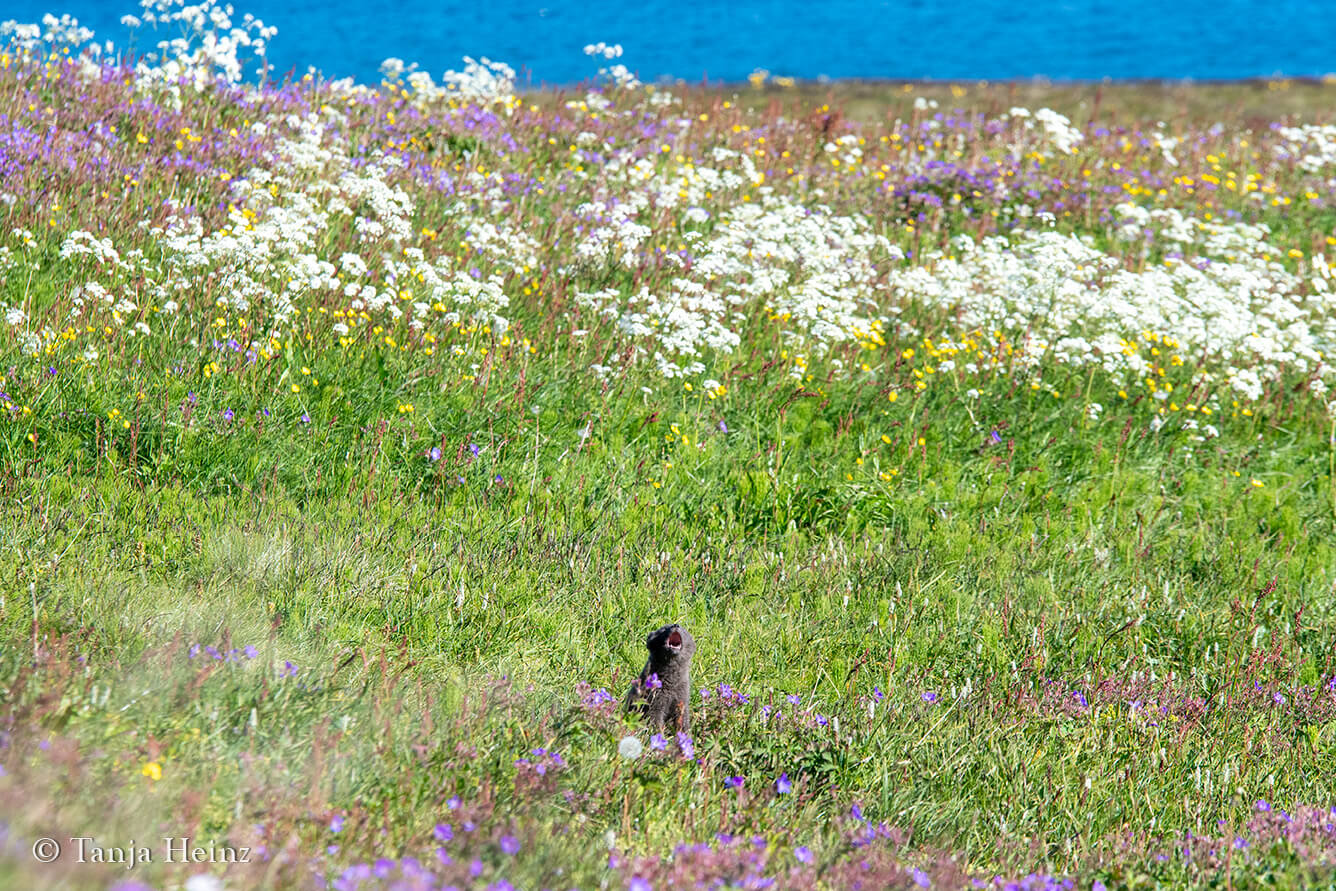
As we stayed at the den for some time, we decided to leave and to have some coffee and tea in front of the farm house.
We would go back to the den later again on that first day.
And well, we were lucky. We saw another Arctic fox. It was, however, not a cub, but an adult individual.
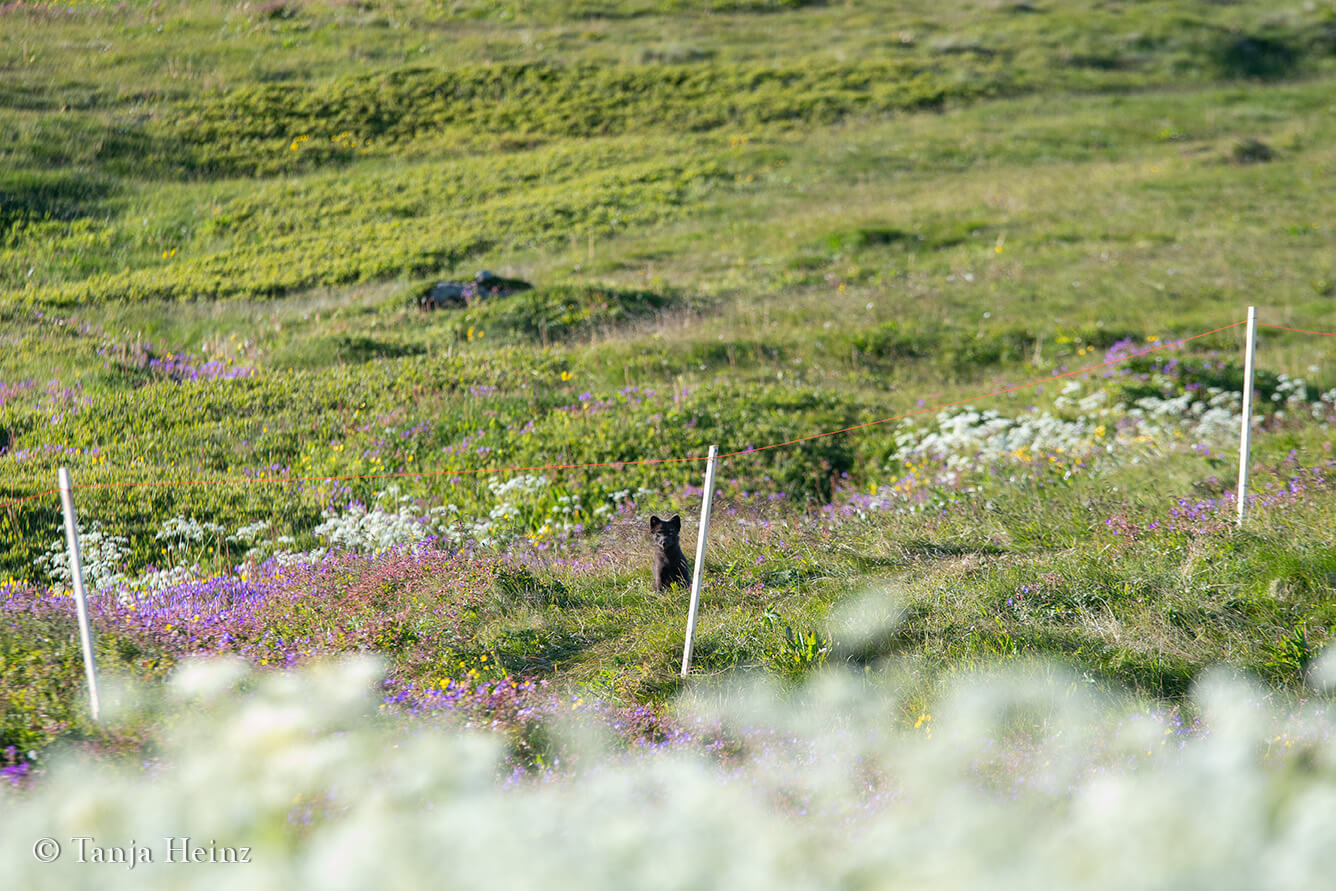
Was it a male or a female?
We could not tell. The Arctic fox was too far away to check the fur for some indications.
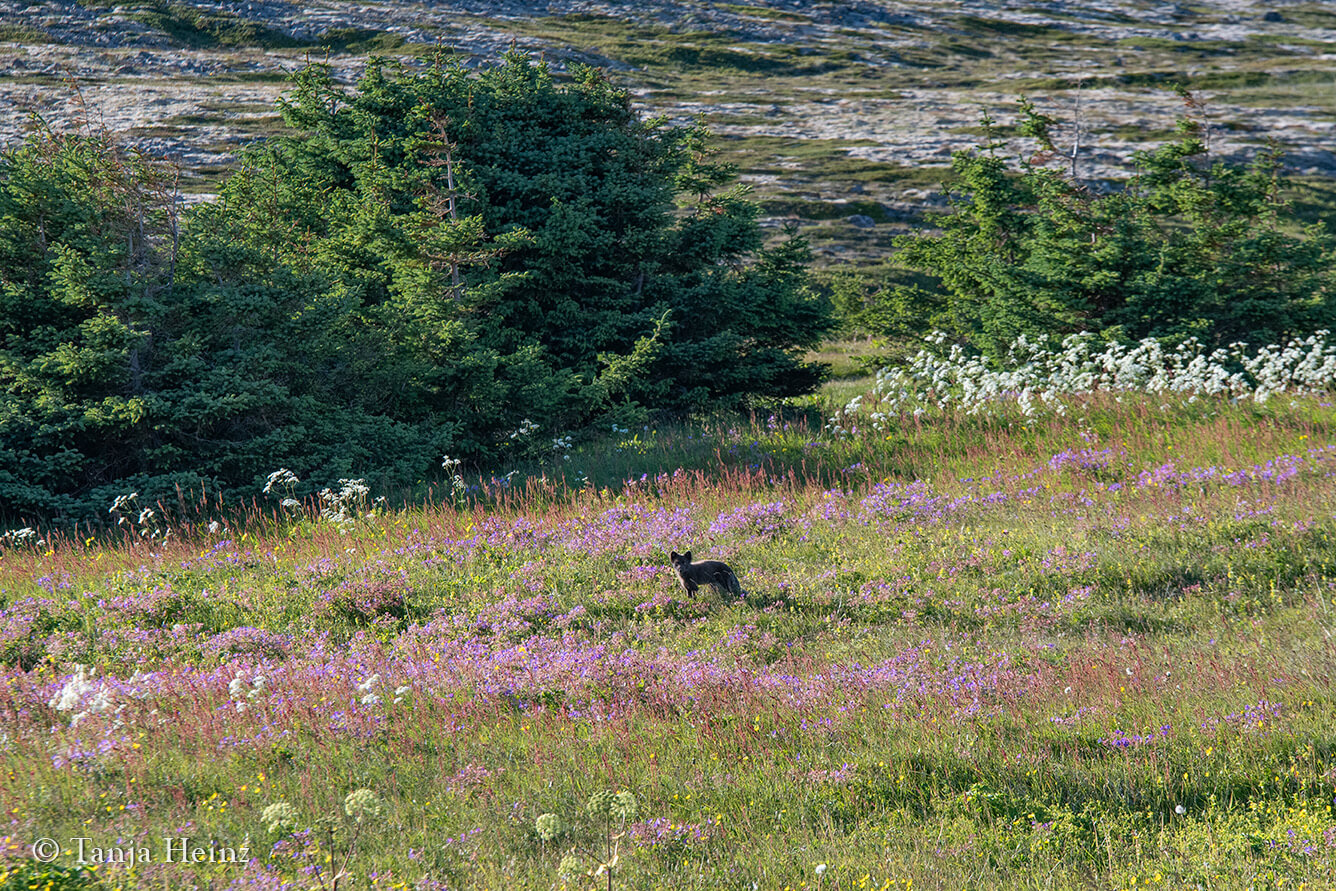
Interesting: Arctic foxes that neither have a territory nor a mate, are called “runners” or “non-breeders”, respectively.
This adult Arctic fox was scared by our presence. We were too excited to see another Arctic fox. It looked at us, barked, and finally left.
I felt bad about that. Yes, it is beautiful and special to observe wildlife, but in those moments, I question myself...
The other cub, however, was still in front of its den. Or was it another one? We did not know how many cubs there were in the den.
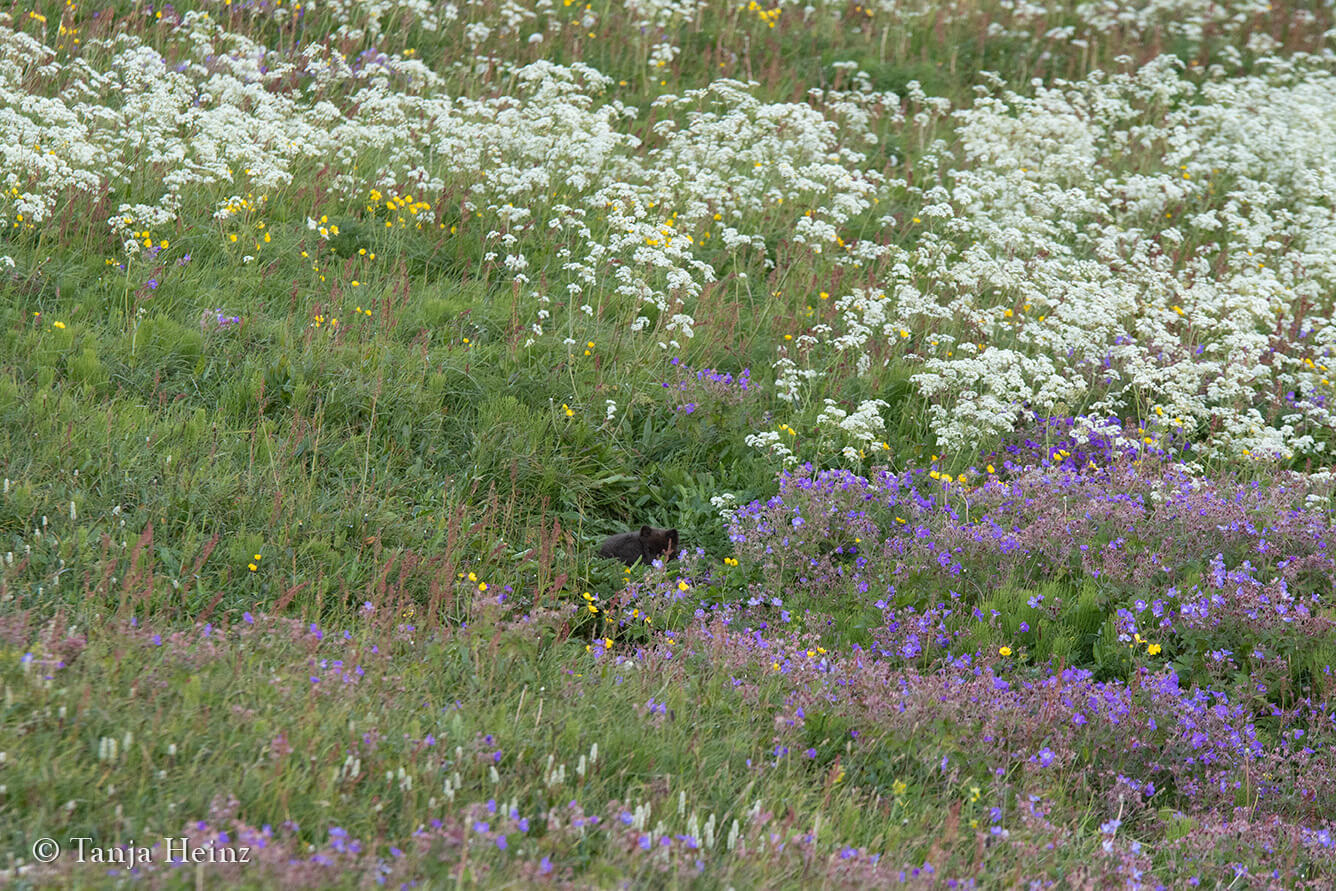
After seeing this cub sleeping in front of its den, I said “Good night” to this cub for that day and went inside.
On the next day I got up early in the morning to walk around the house before breakfast. It was so peaceful and calm.
The sea. The mountains. And the clouded sky transformed the Hornstrandir Nature Reserve into another beautiful day.
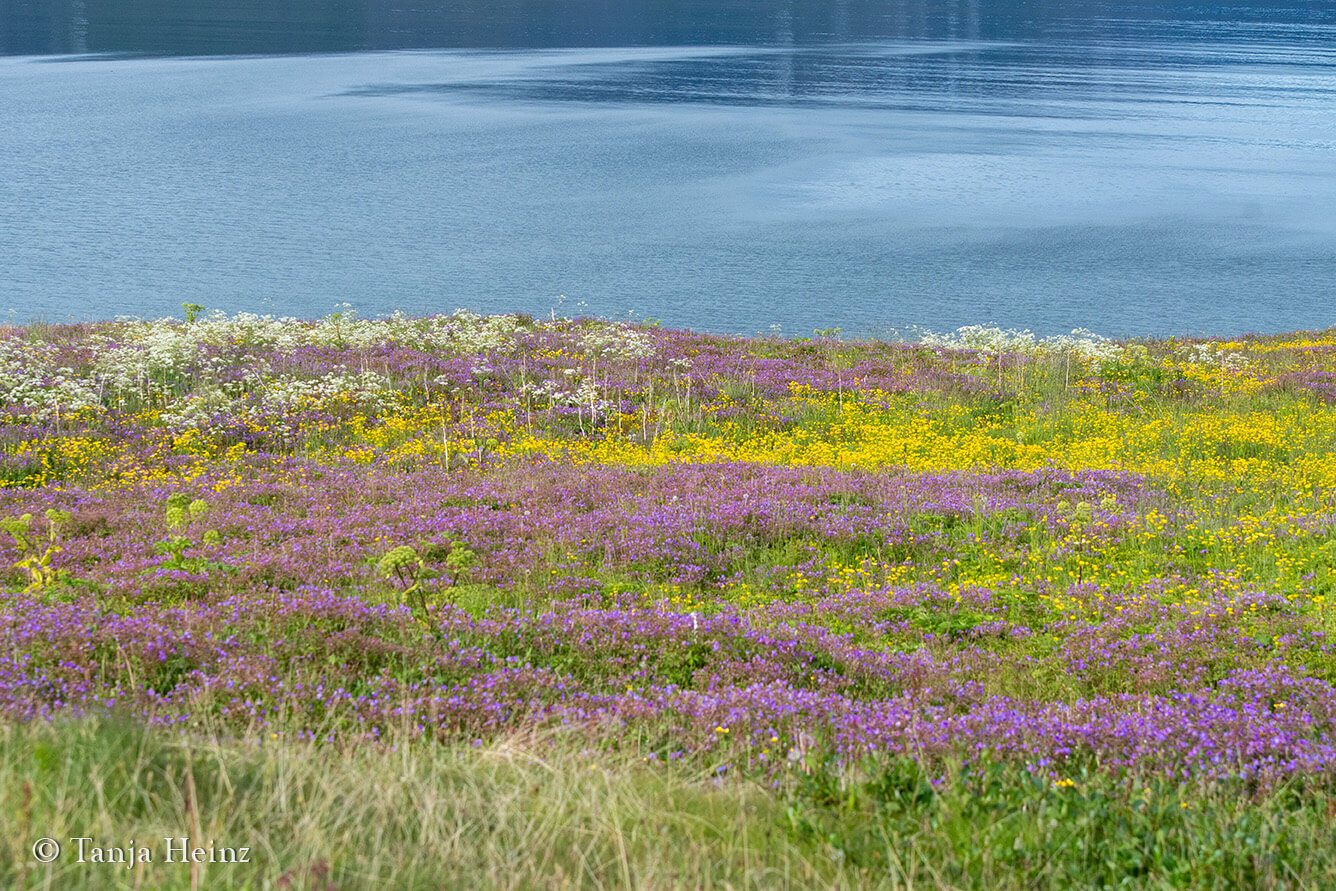
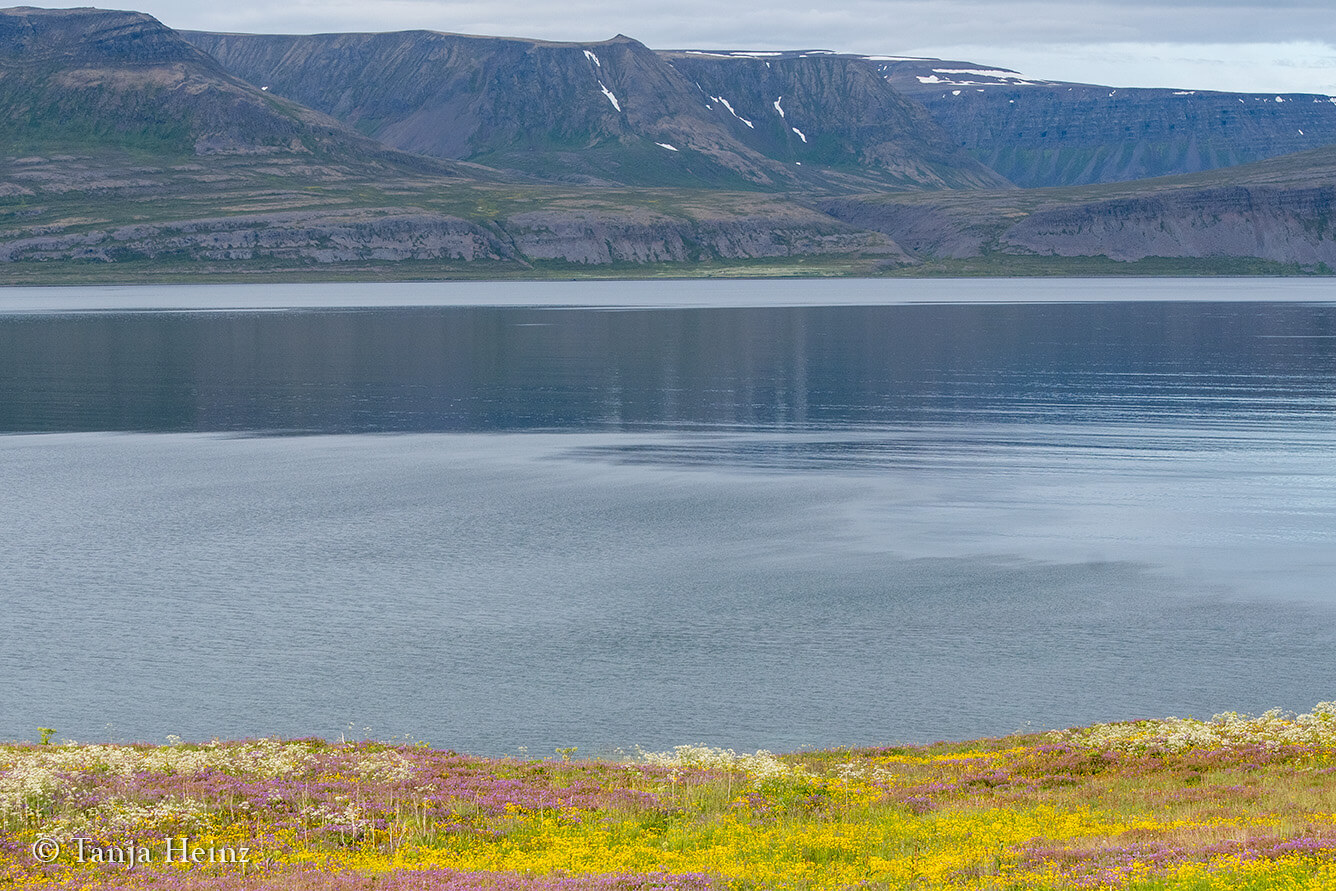
I observed some birds. I was looking around and left the Kvíar Lodge behind. I was hoping to see some Arctic foxes, but my expectations were low.
And then I saw something dark moving. Arctic foxes?
Yes!
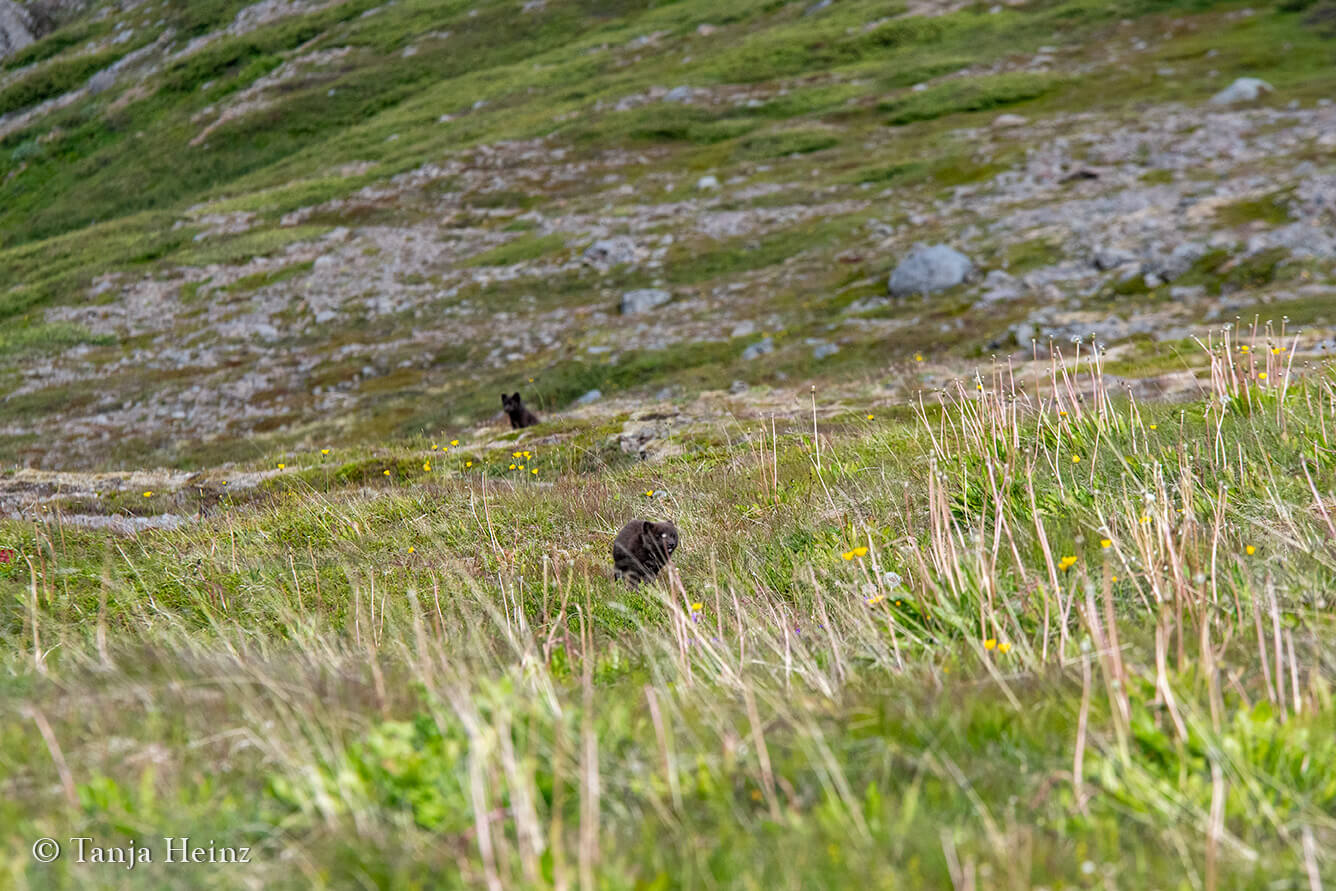
How lucky I was!
Was there another den? Or was it another family?
It might have been possible that there was another den, as in a good territory, there might be more than one den. A territory is an area where the Arctic foxes move around and forage.
Territory quality and size depend on food availability.
Nevertheless, in total, I saw three little cubs and one adult individual behind.
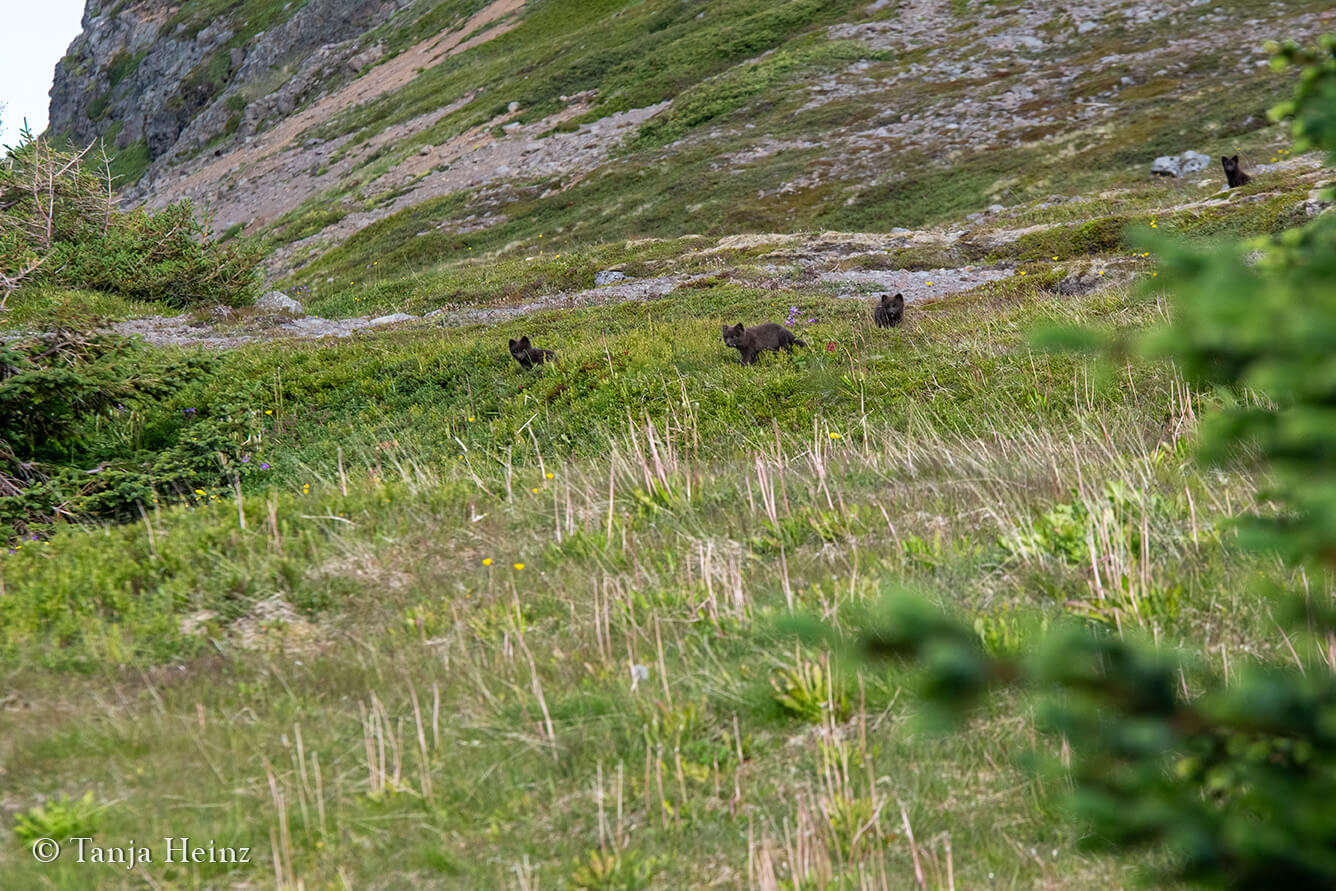
Interesting: Arctic foxes are solitary animals or live in monogamous pair bonds. If there are more than two Arctic foxes, it is most probable a group with offspring.
How exciting this was!
The three American companions saw me from far away. Later they would repeat again and again how lucky I was.
However, the adult individual was wary about my presence and stood up. The cubs had already left.
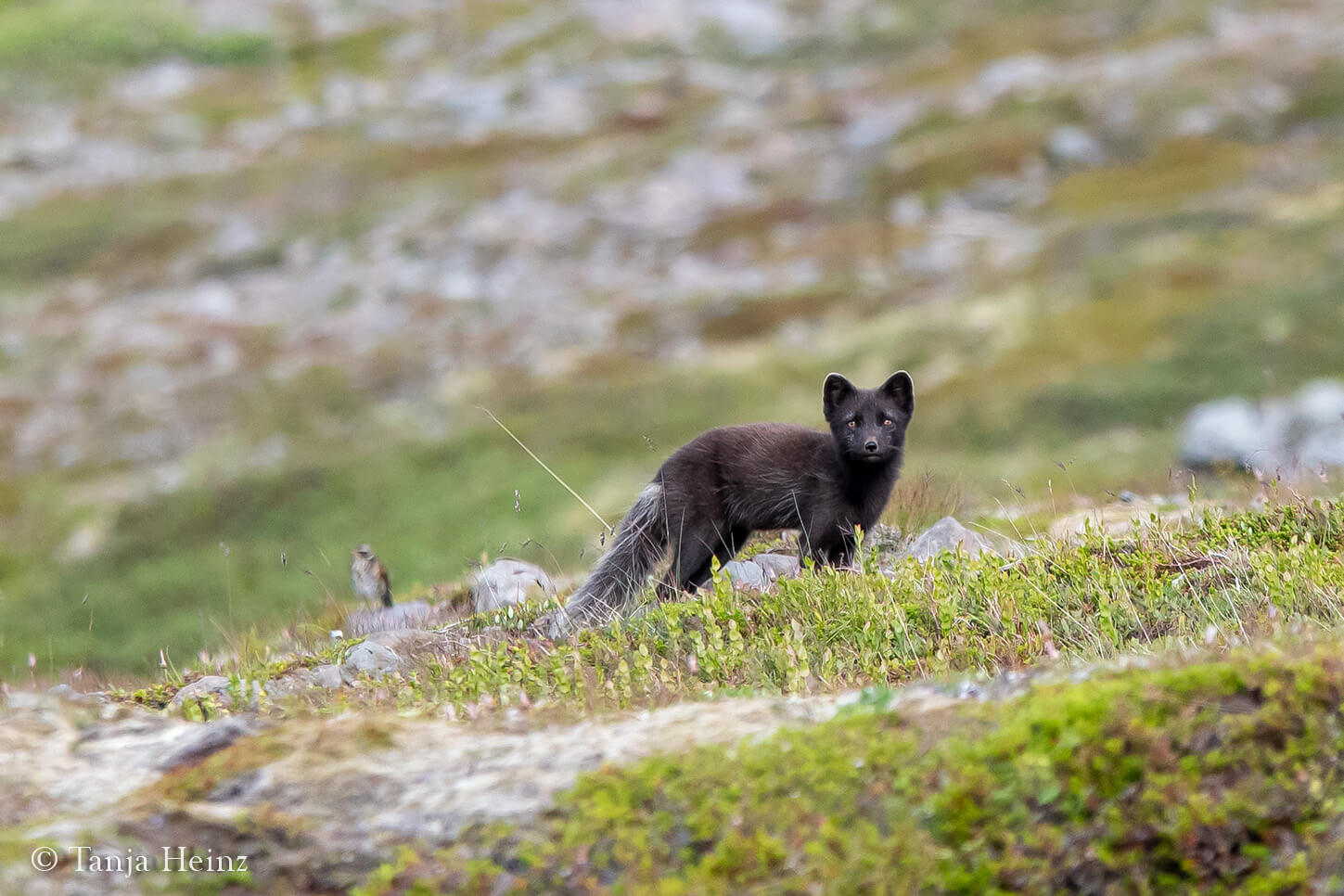
It was not my intention at all to make them move. I had to stand still in order not to completely scare them away.
The adult Arctic fox turned.
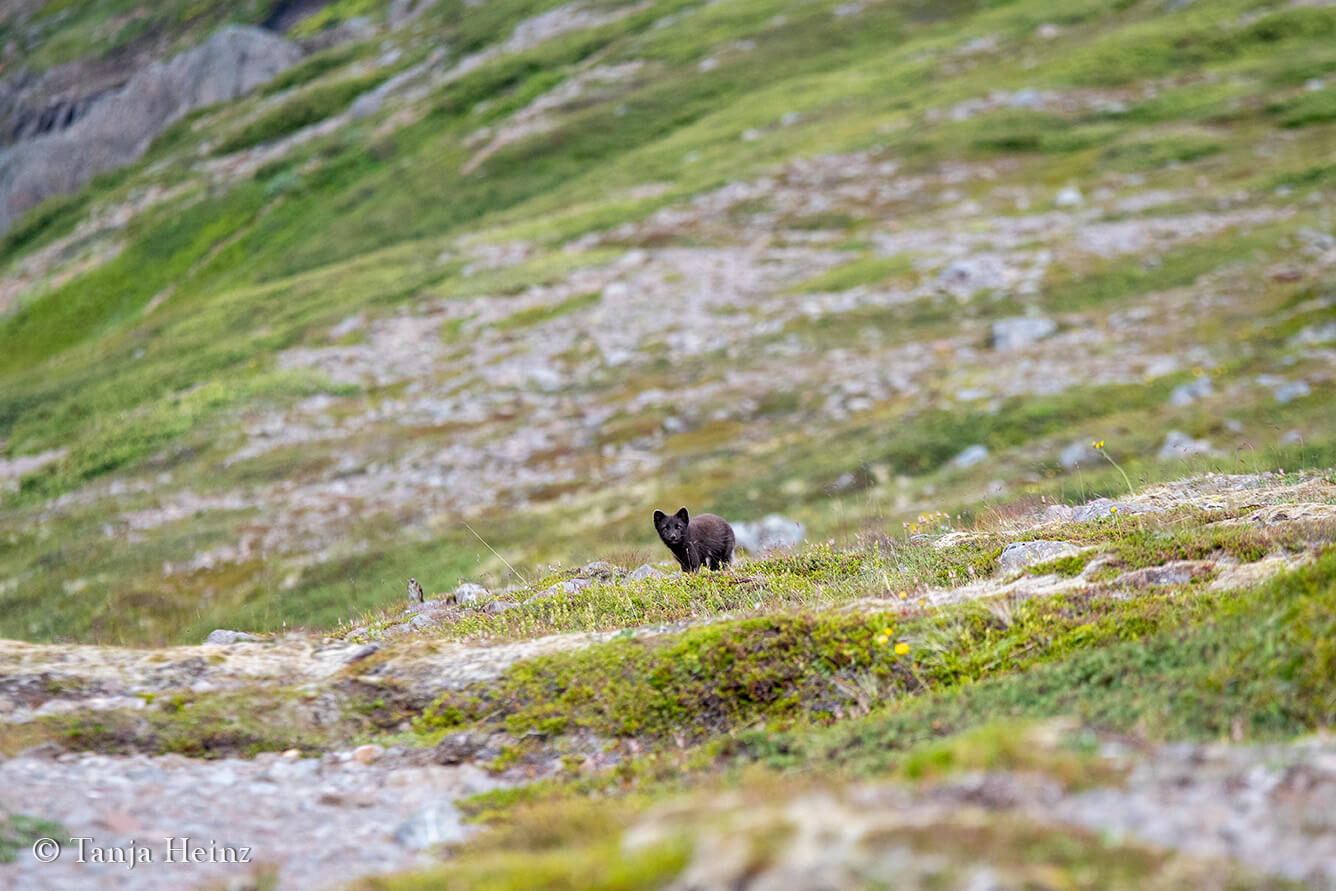
And began barking.
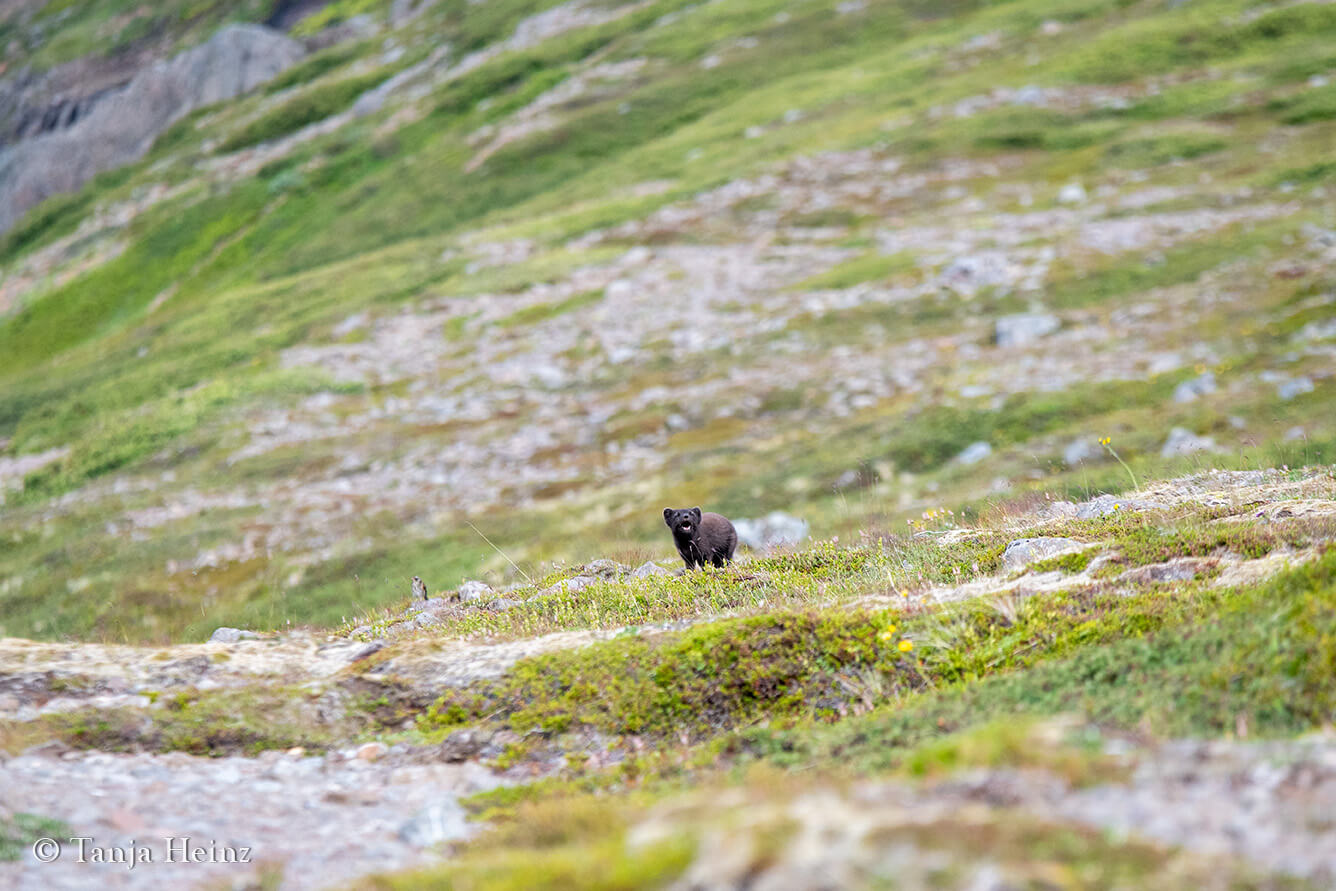
Luckily, that individual tranquilized and sat down. But only for a short moment.
The adult Arctic fox stood up again and moved into the same direction where the cubs had vanished few moments before.
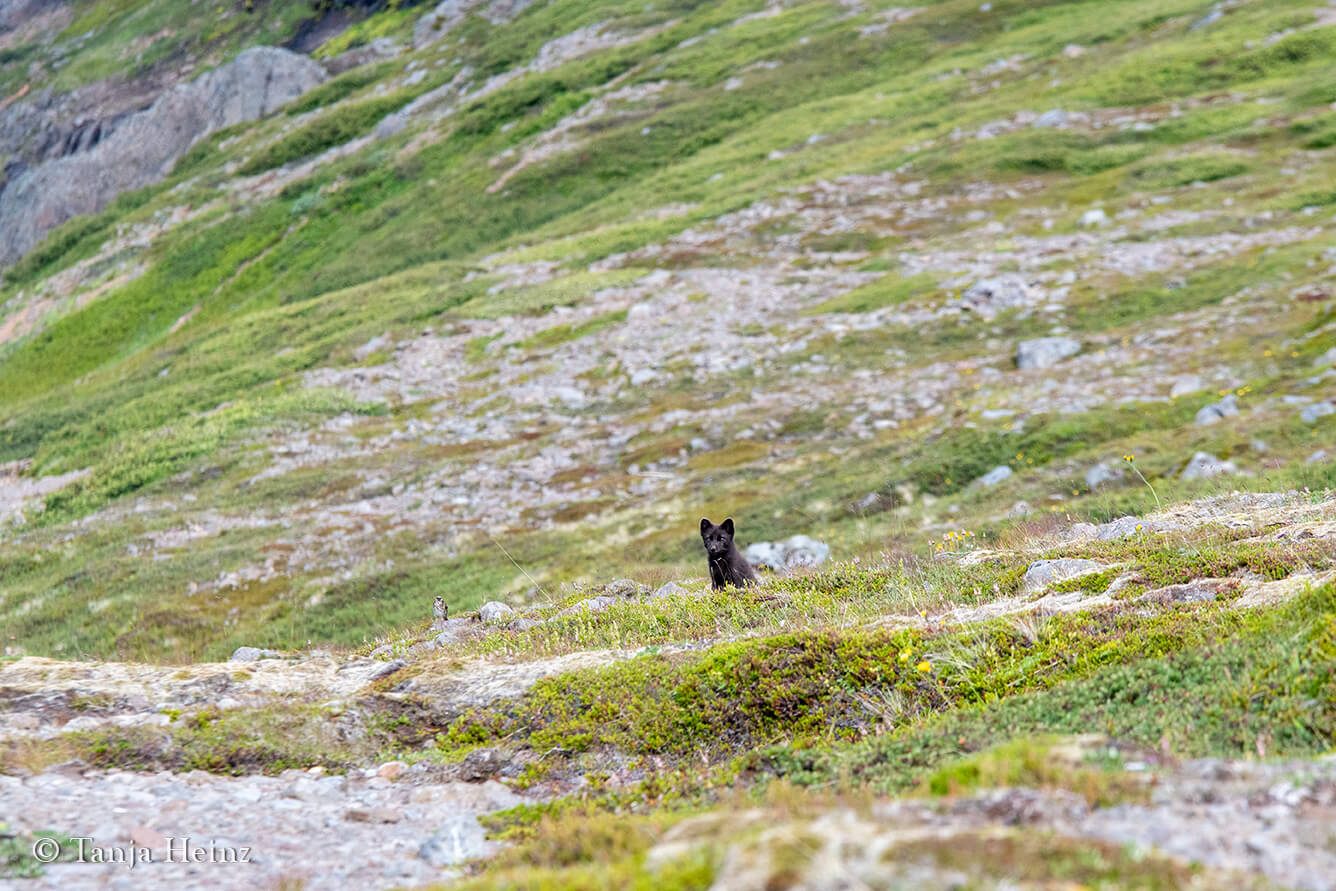
After that encounter I was accompanied by one of the Americans. She also wished to have the same encounter as I just had. Unfortunately, the Arctic foxes did not show up again.
We then finally left and had breakfast.
In the afternoon I lay down into the meadow close to the den hoping for the Arctic foxes to show up.
And well, they did!
However, they were again quite far away.
But that time there were at least two in front of the den.
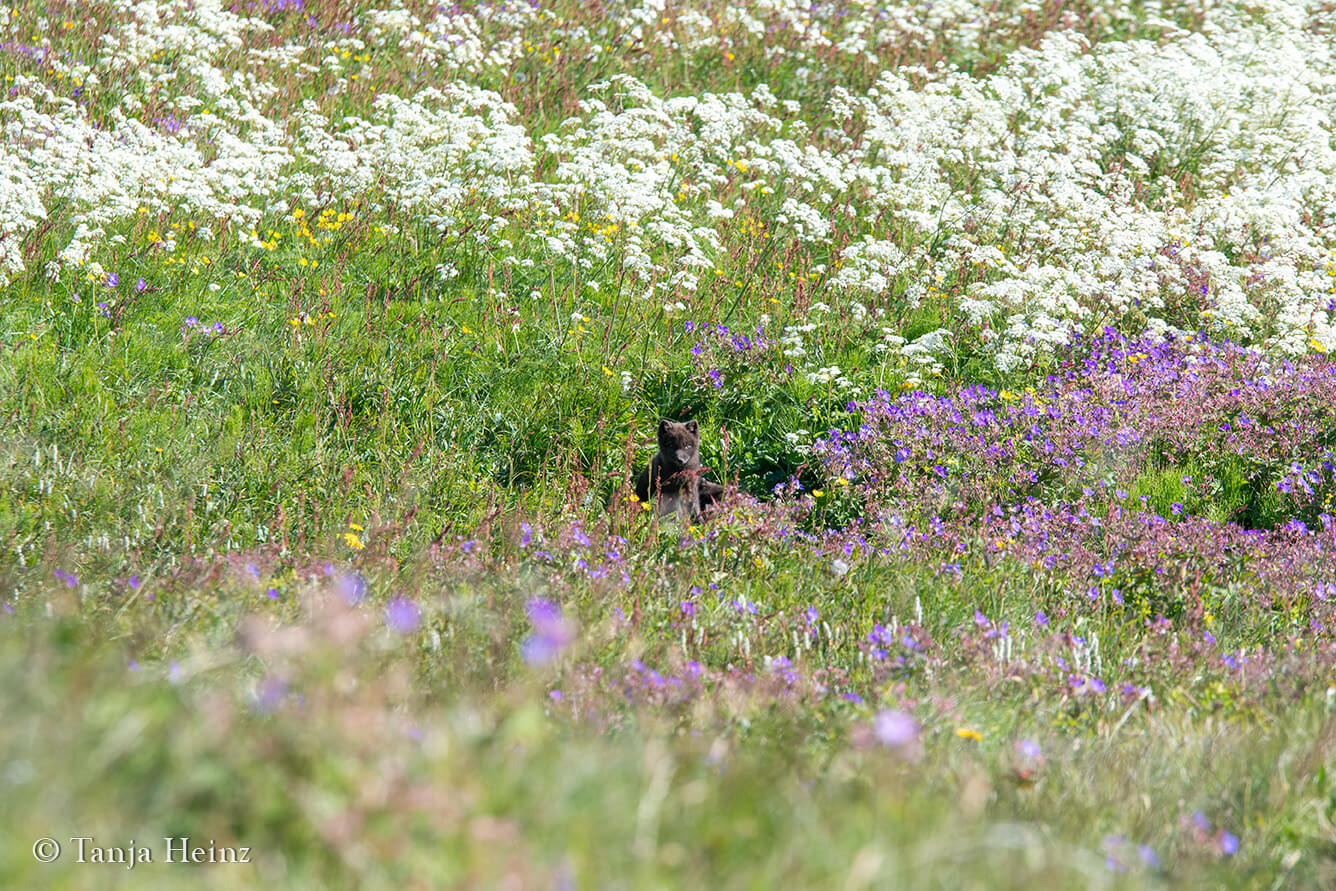
They were sleeping, waking up, moving, and sleeping again.
I was lying in the meadow enjoying the Arctic foxes and the sun.
Arctic foxes in Iceland are quite interesting, because there is no connection to other Arctic fox populations. The Icelandic population is now isolated from other populations for more than thousands of years.
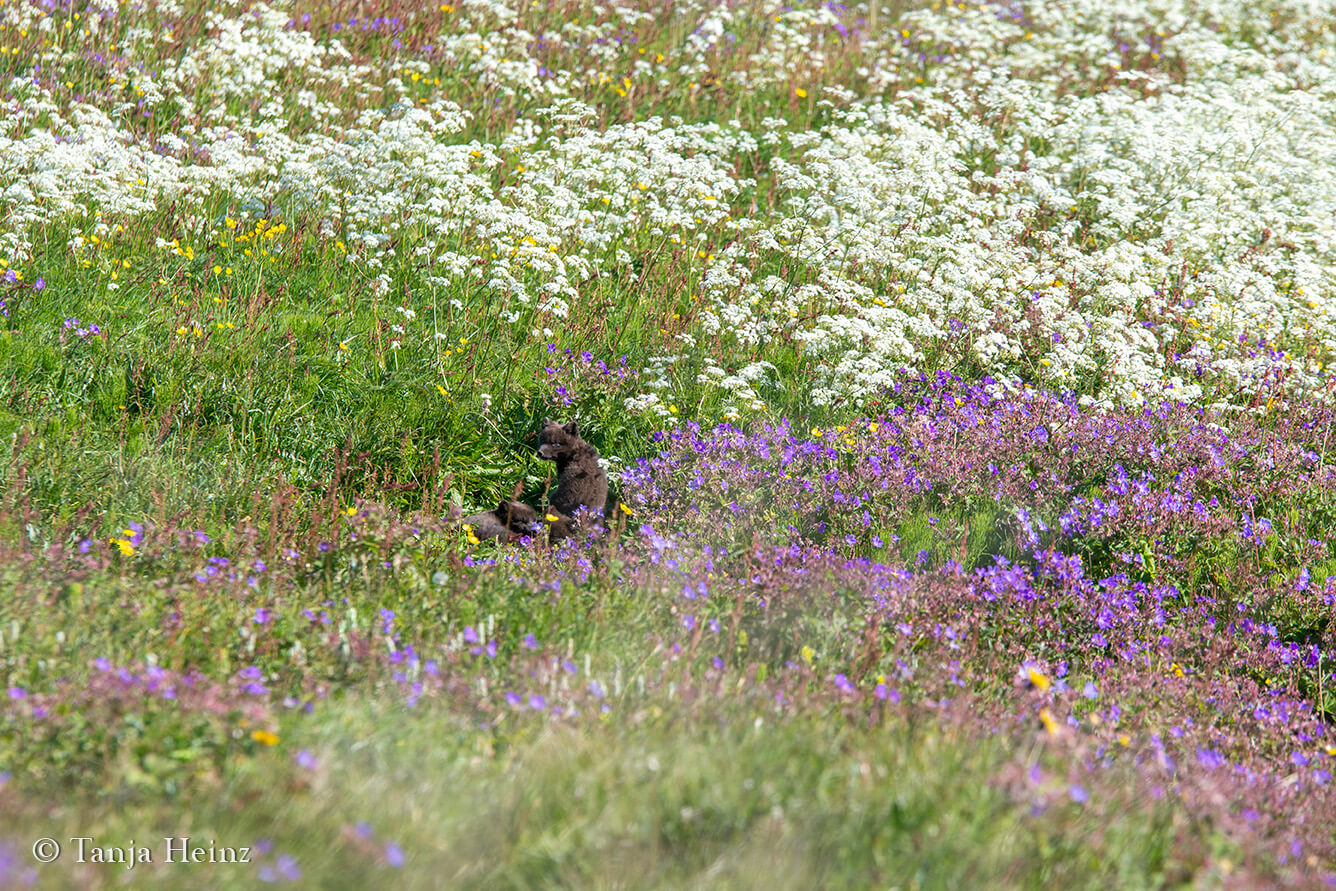
Interesting: Did you know that Arctic foxes were even already seen around Reykjavík? If you want to know more about this, please watch a video about a recent student research project. Arctic foxes might show up in urban areas because of food availability.
Thus, these animals are unique!
In Iceland there are two morphs. There is a blue and a white morph. In the Westfjords, about 80% of the Arctic foxes are blue morphs. Blue morphs have a brown fur the whole year, but the fur can bleach and appear blond.
The Arctic foxes in the Hornstrandir Nature Reserve are coastal foxes that search for food at the shore.
Unfortunately, I did not see the feeding behavior of the Arctic foxes behind the Kvíar Lodge.
But while I was lying in the meadow, the Arctic foxes let me at least see a little bit of their life.
Another Arctic fox cub showed up. In one moment, they were playing and in the next moment they were sleeping again.
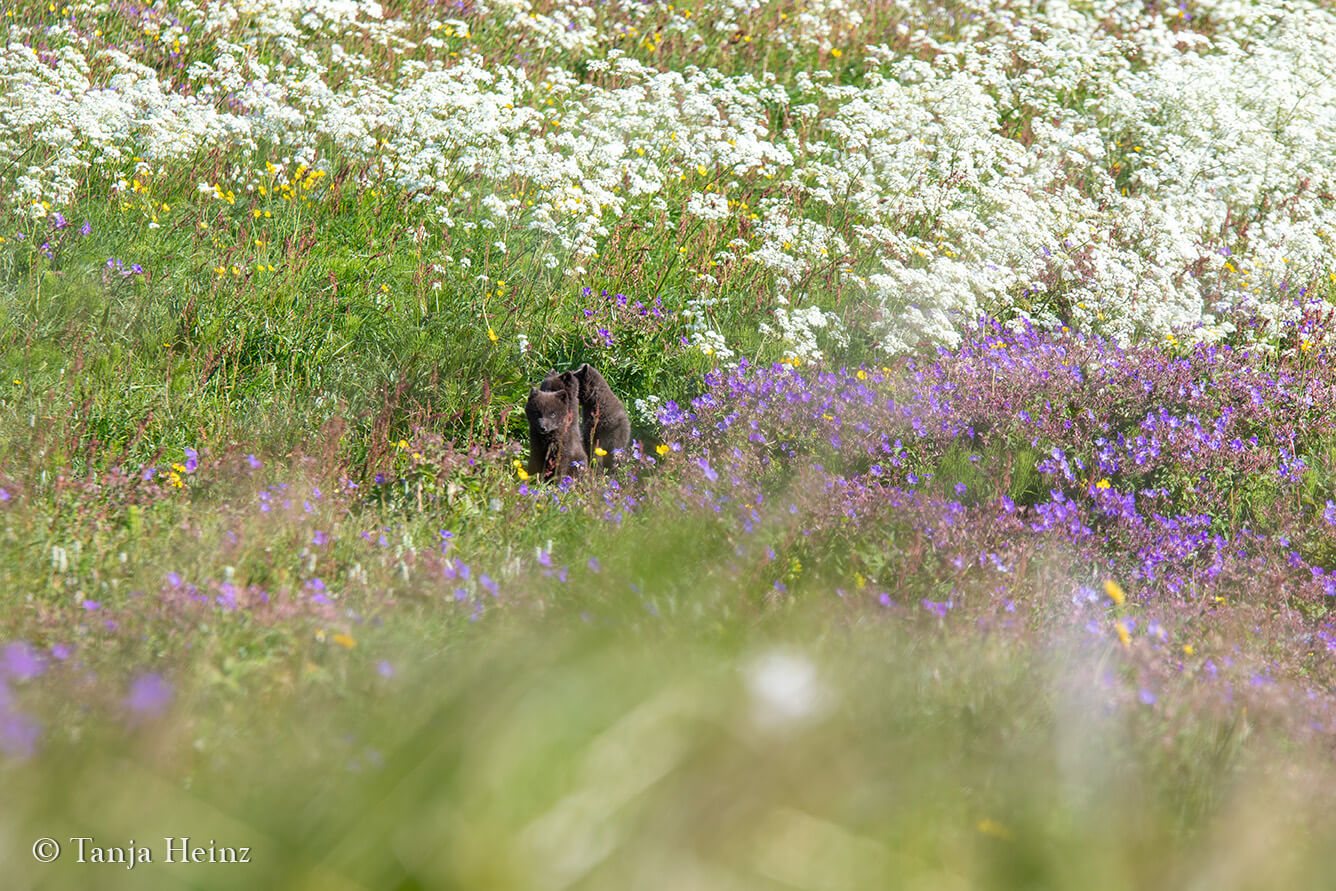
Maybe all of them were already there the whole time and I just had not seen them, as they were sleeping.
I was on that meadow with the Arctic foxes for the whole afternoon. I remained quietly in the meadow while the Arctic foxes were sleeping.
Sometimes I was visited by the Danish woman. The two British kids were also around almost the whole time. Their parents were worried about them, because they did not want them to disturb me and the Arctic foxes.
But the two kids were as cute as the Arctic foxes. They were just playing like the cubs or looking at the Arctic foxes and admiring them.
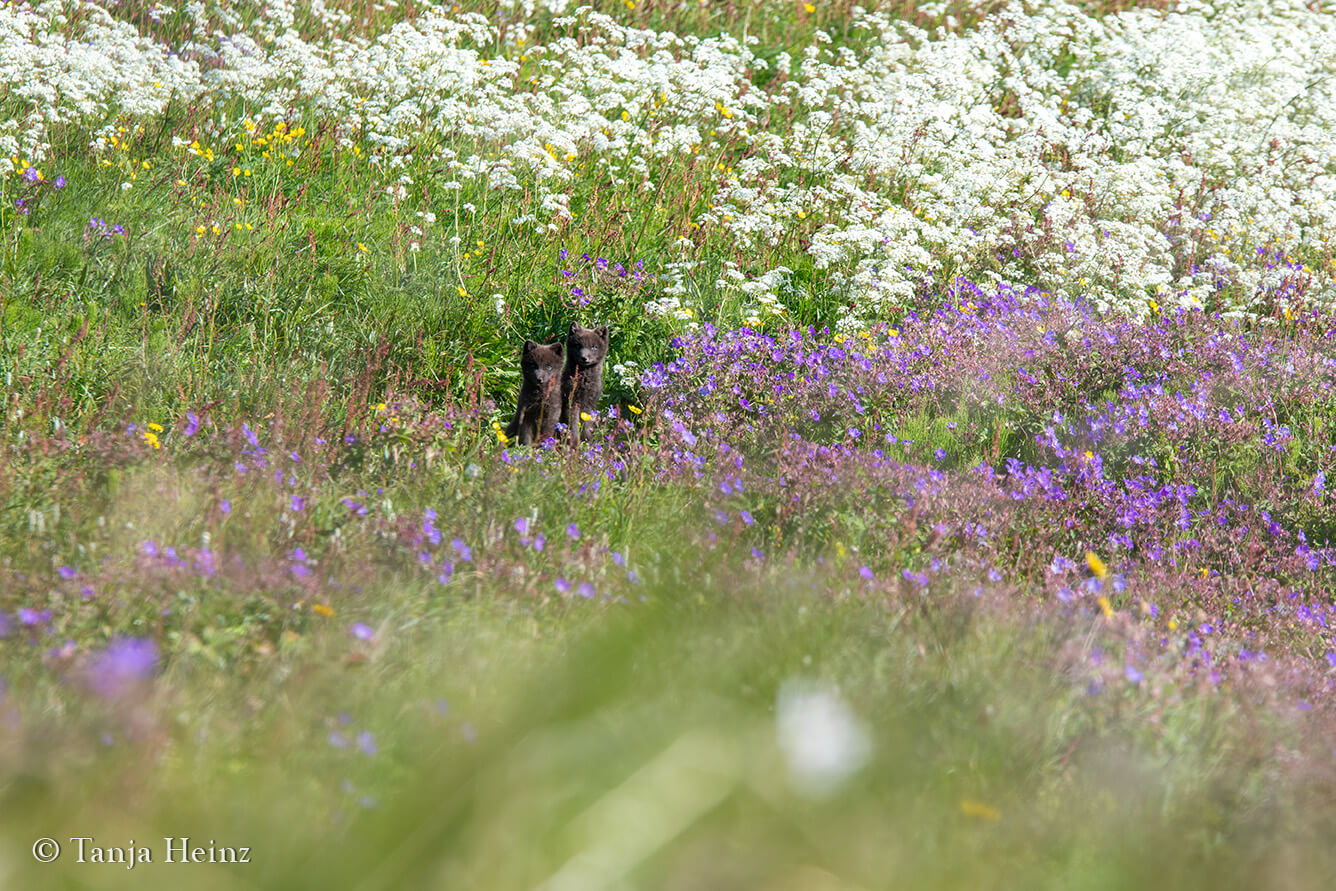
Well, although the Arctic foxes at the Kvíar Lodge were quite shy, I still had a very good time in the Hornstrandir Nature Reserve.
The tour was very well organized, the group was great, and the weather was wonderful. I feel very lucky to have been at that special place!
I already think of returning to the Hornstrandir Nature Reserve in the near future...
Information: Another good – or maybe even better – spot to observe Arctic foxes in the Hornstrandir Nature Reserve might be in the bay of Hornvík. Borea Adventures offers as well multi-day tours to the northern part of the nature reserve.
Practical information
I stayed in Ísafjörður before the tour to the Hornstrandir Nature Reserve started. Please visit my two previous blog posts about Vigur Island and the Arctic Fox Centre to get more information about the area.
I participated in a multi-day tour offered by Borea Adventures. I was very happy with my decision. Please visit their website to get more information.
The office of Borea Adventures is located in the street Aðalstræti 17, 400 Ísafjörður.
More information about Arctic foxes
Photo Tour Arctic fox in Iceland
Blog article about Arctic foxes
Kvíar Lodge in the Hornstrandir Nature Reserve
Arctic foxes in Iceland
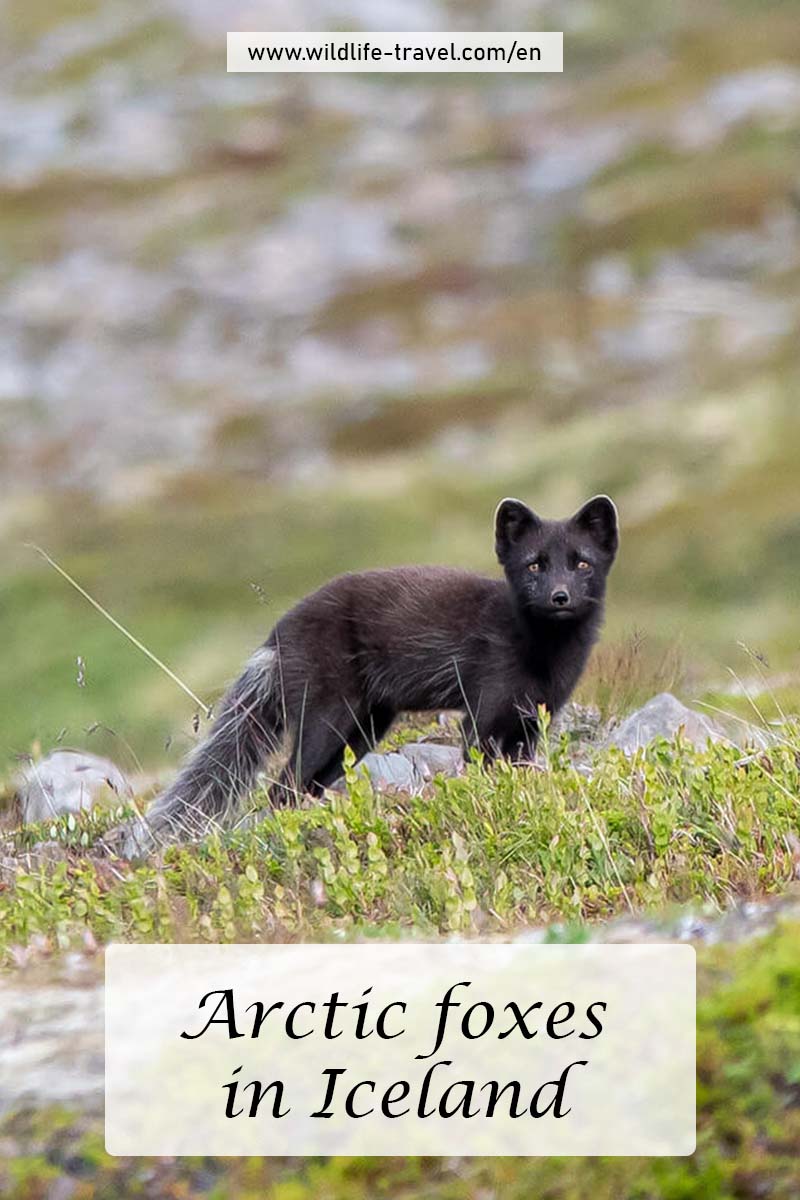
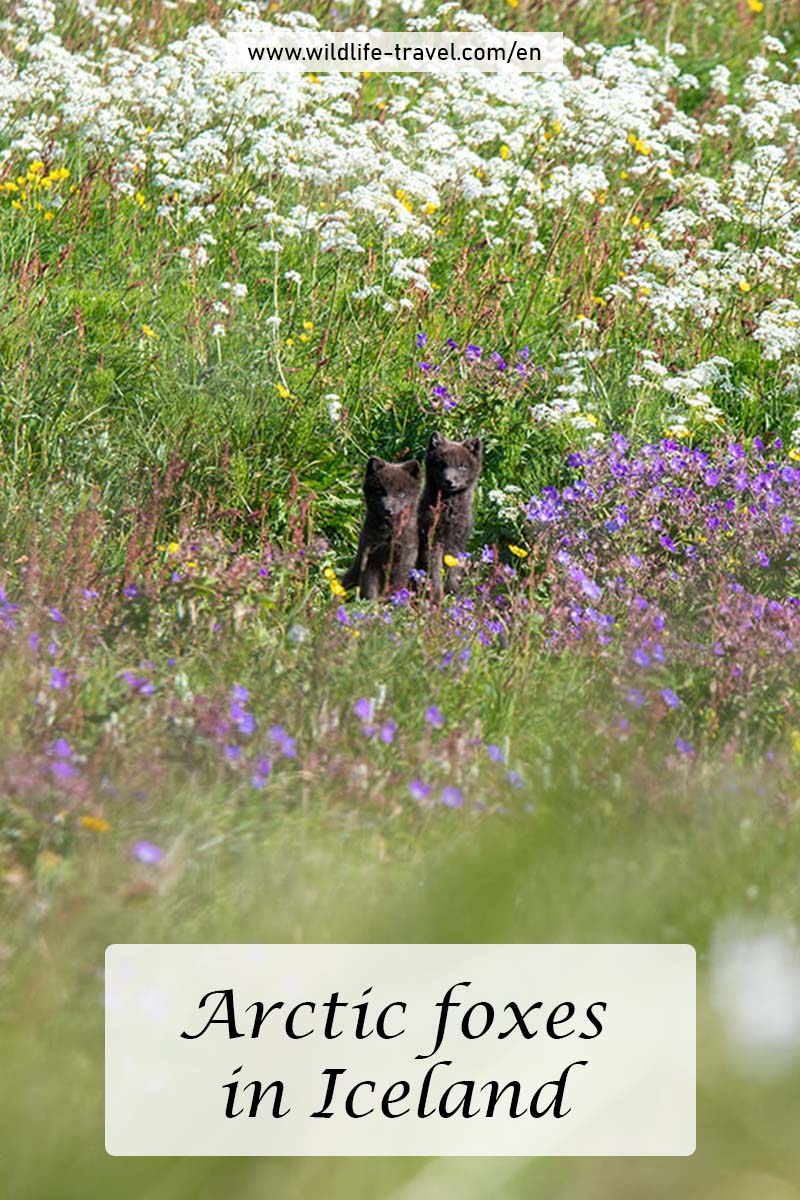
Have you ever seen Arctic foxes in the wild? Or have you been in the Hornstrandir Nature Reserve? Please let me know your experiences in the comments.

Thank you for this superb article. What a patient way to observe the Arctic Fox! 🙂
I also work in Hornstrandir (on Arctic Fox photo tours). What a magnificent place, a paradise for these little canids!
Thank you very much Samy for your comment 🙂
I experienced Hornstrandir as a very special place <3 You are very lucky that you work there 😉 Your photo gallery of the Arctic foxes and the other wildlife is amazing! Congratulation!
beautiful
Thank you very much for your comment! Observing Arctic foxes in their natural environment and be in Hornstrandir is indeed very beautiful 🙂